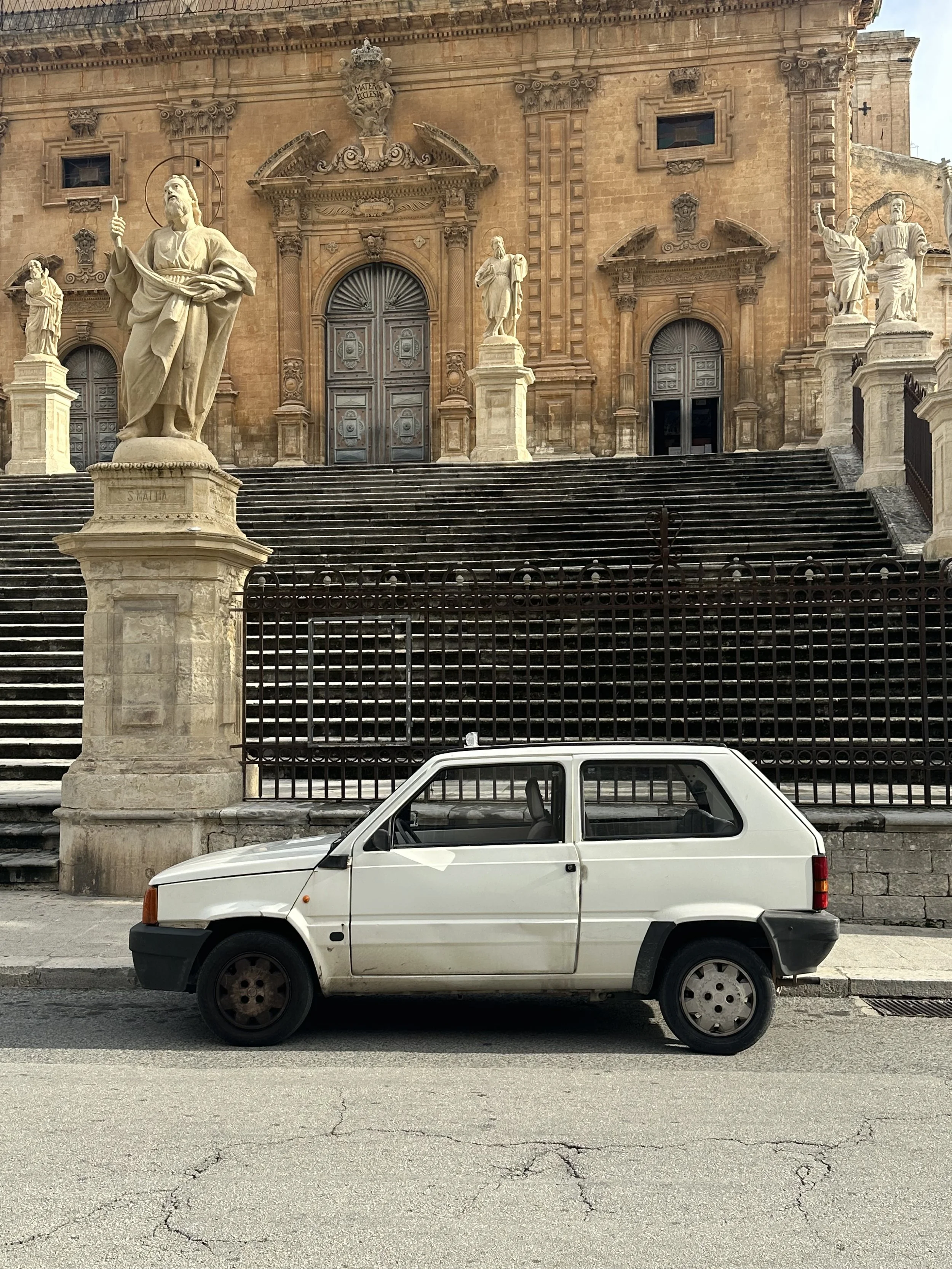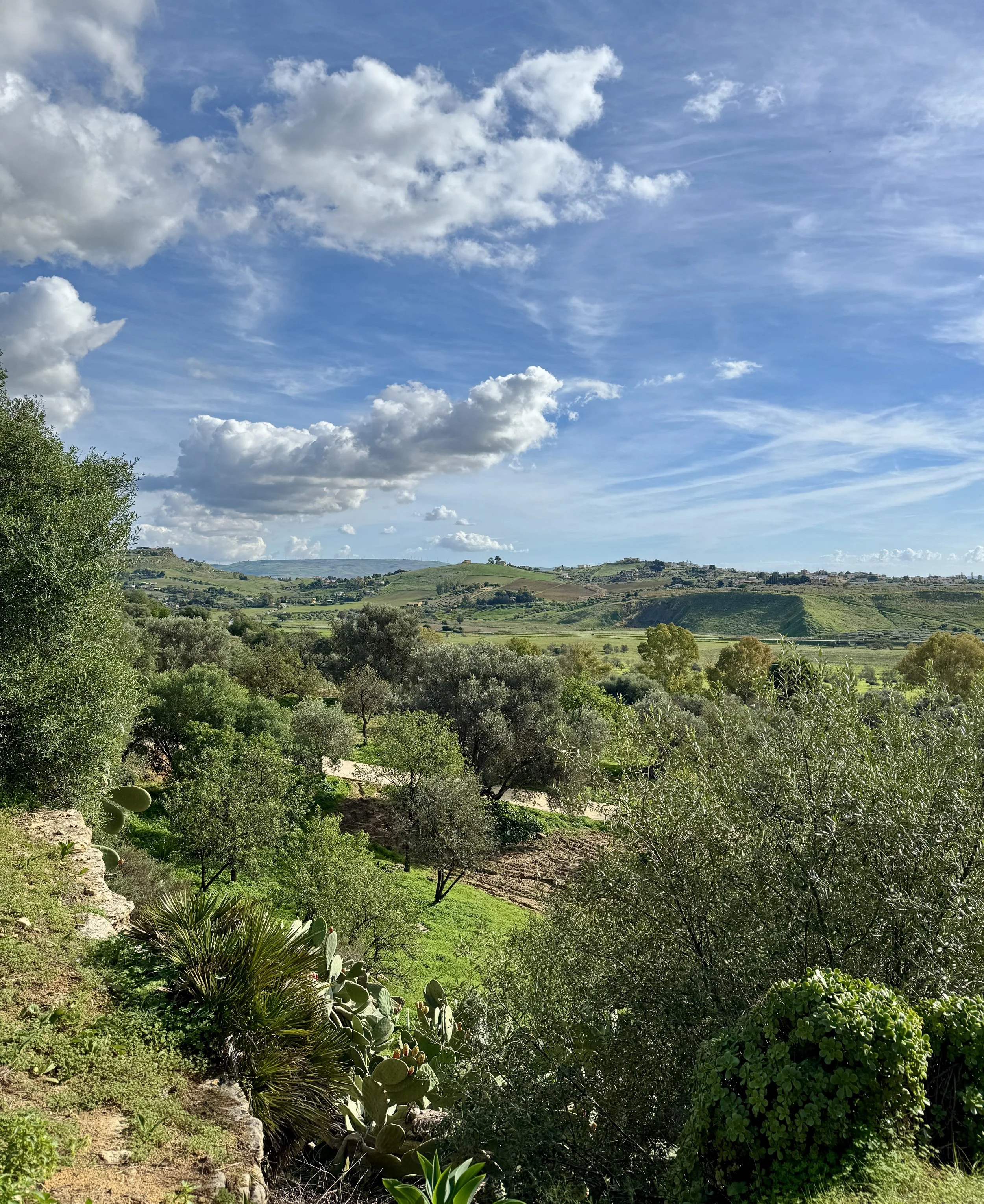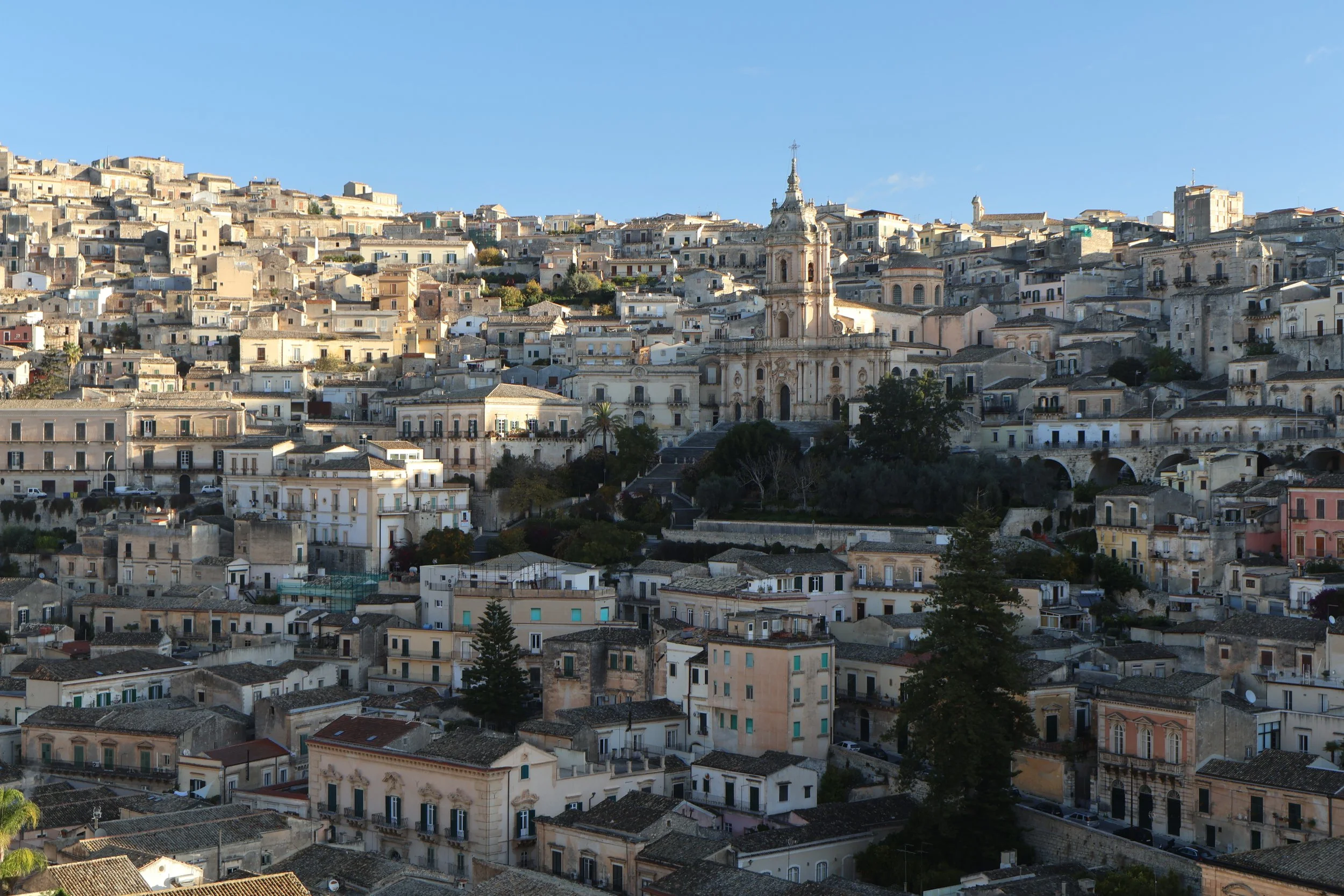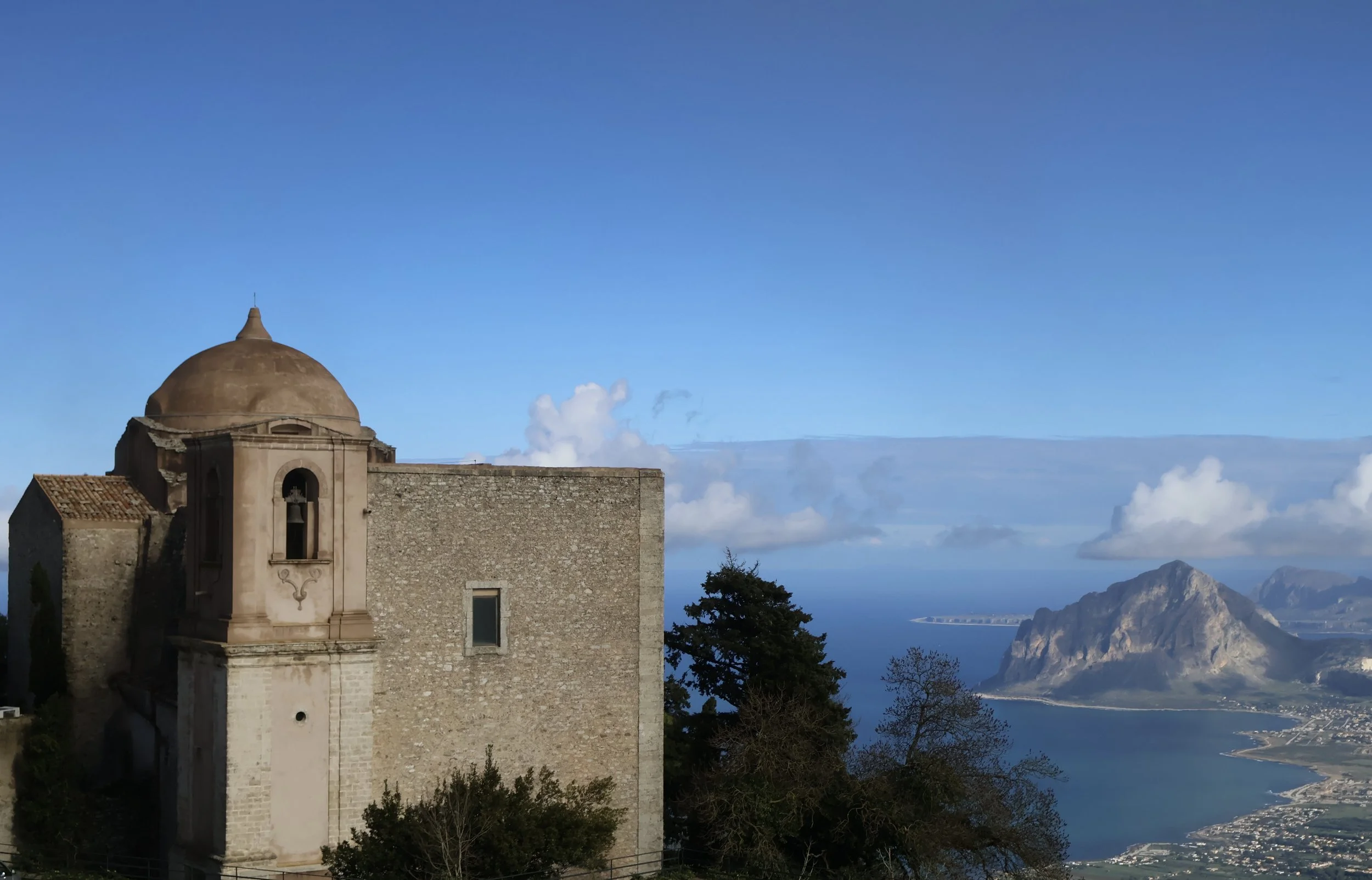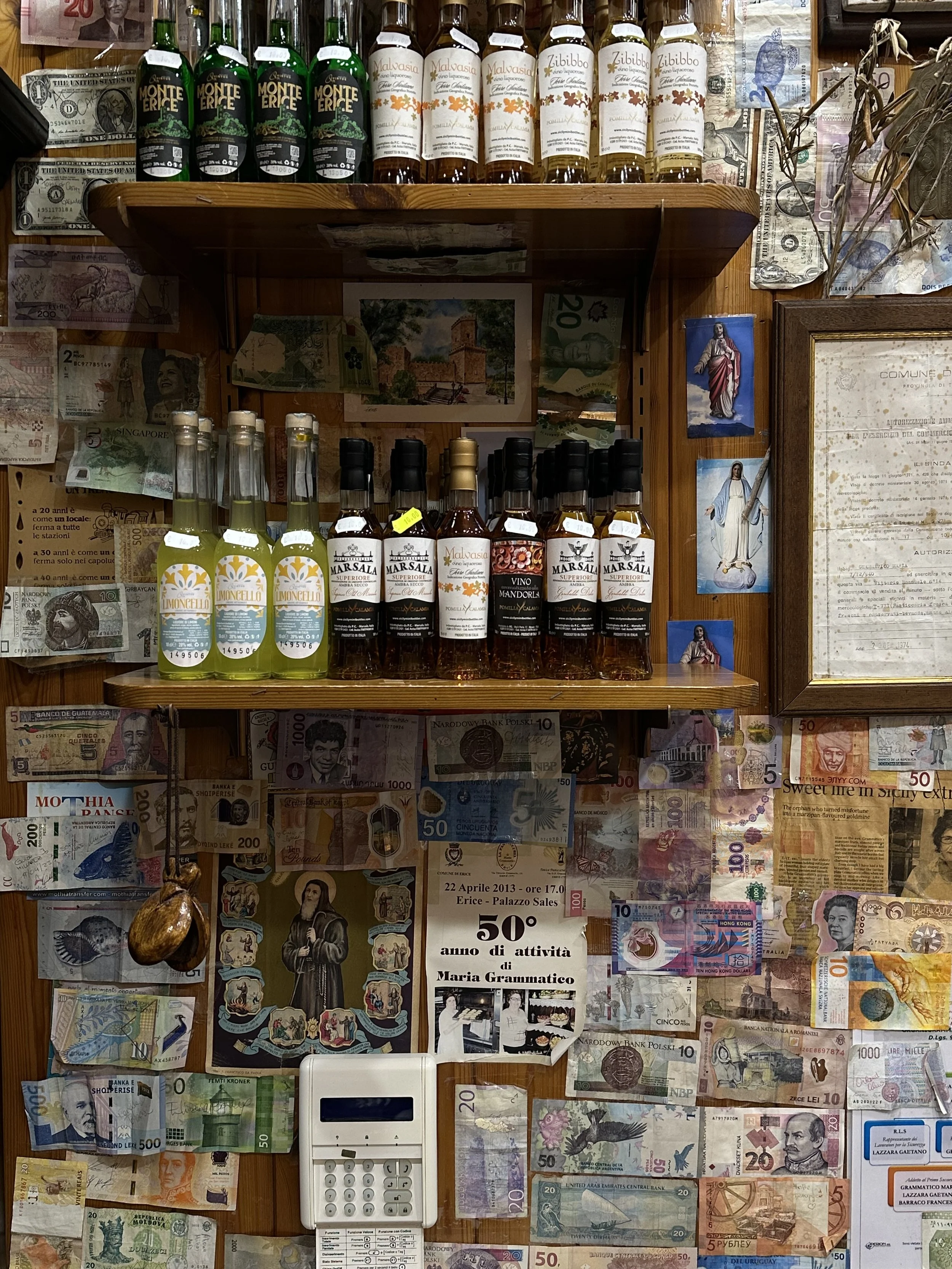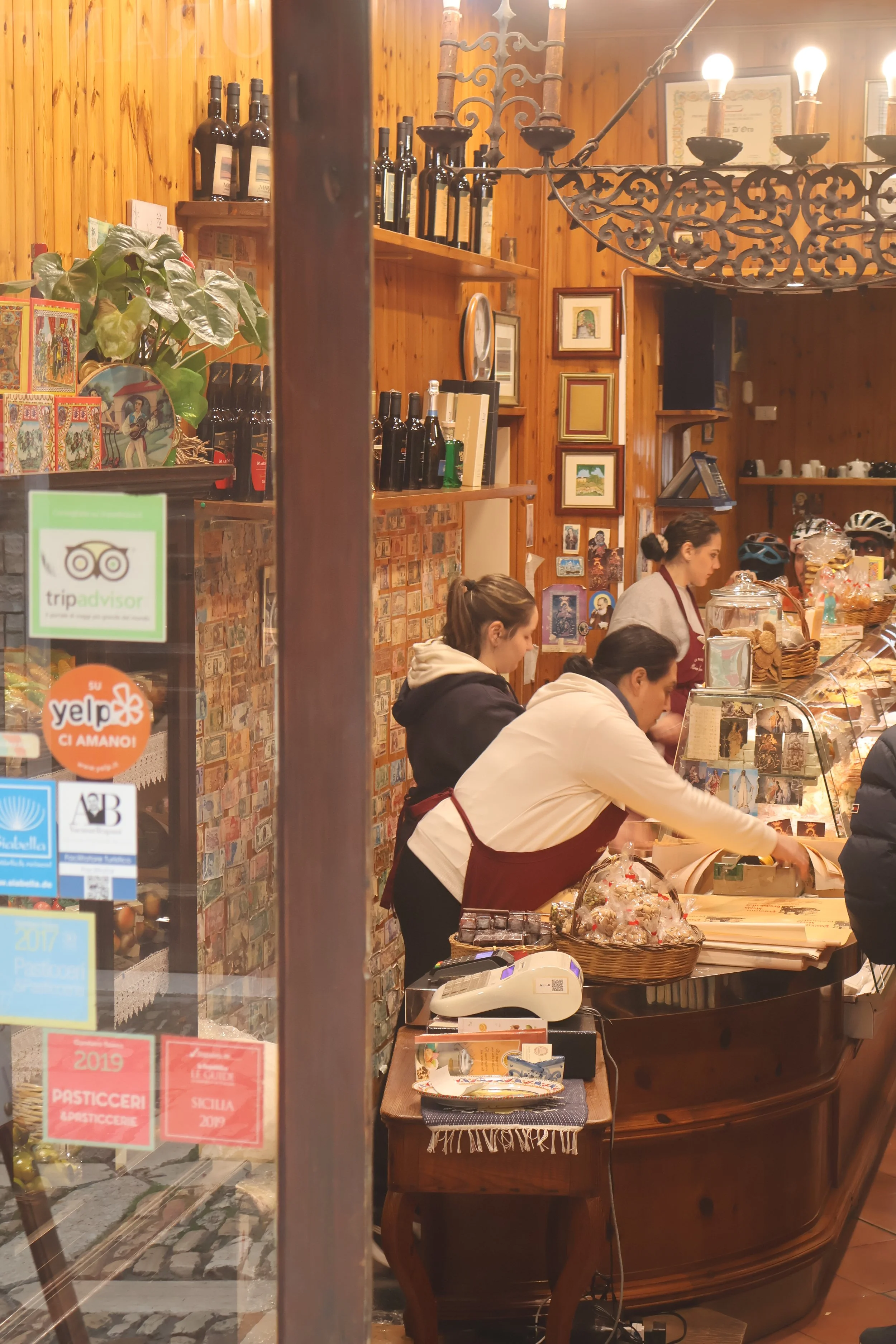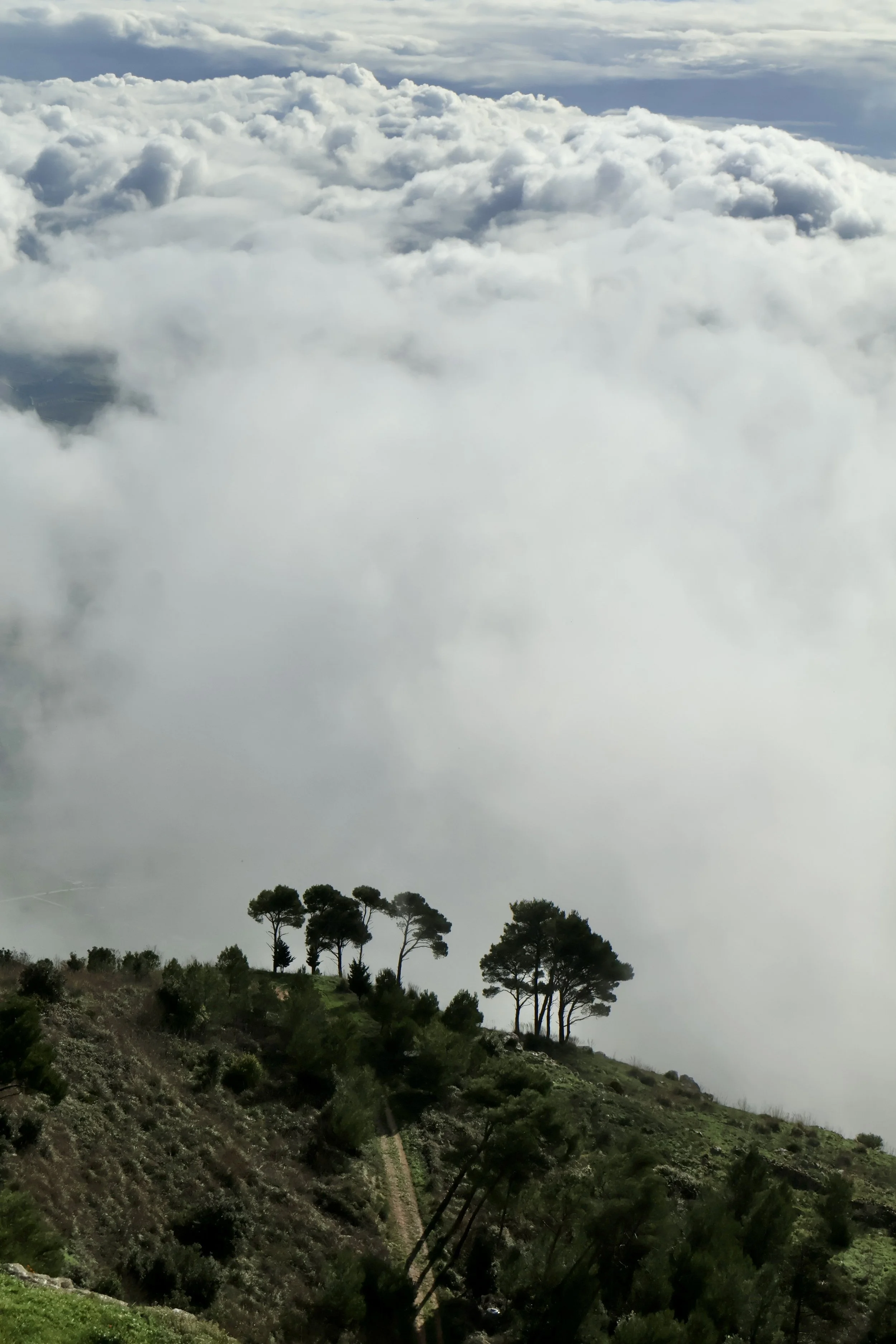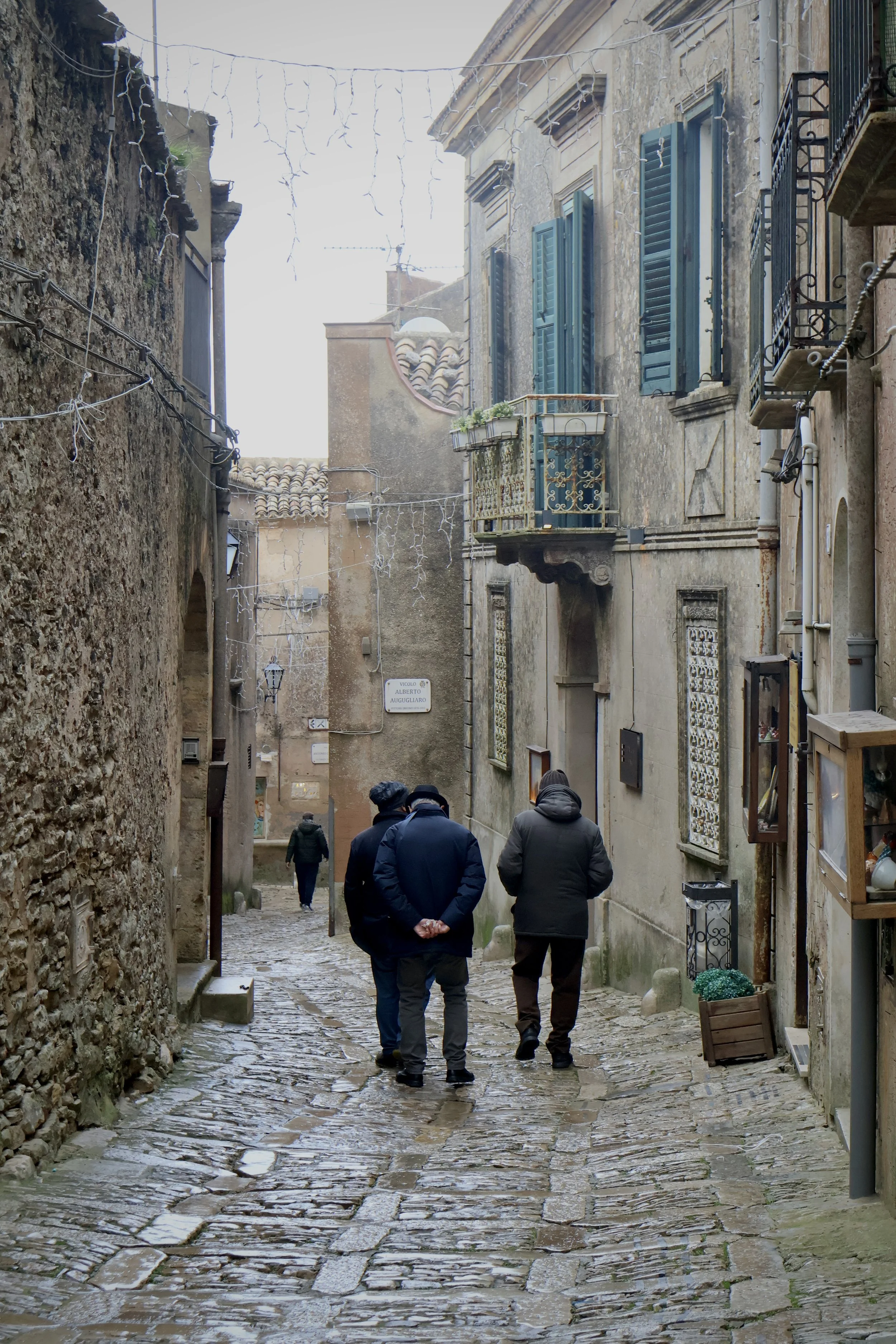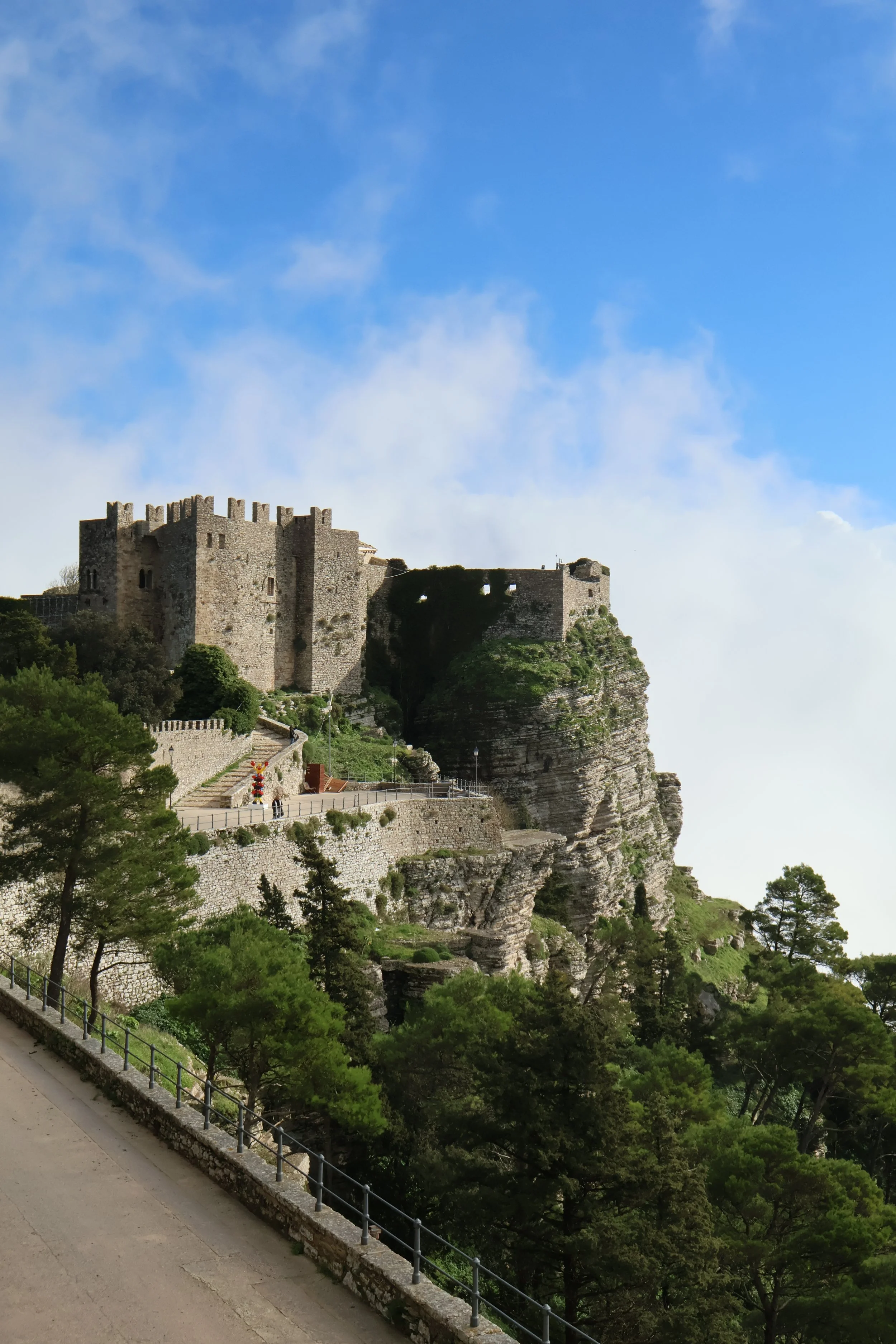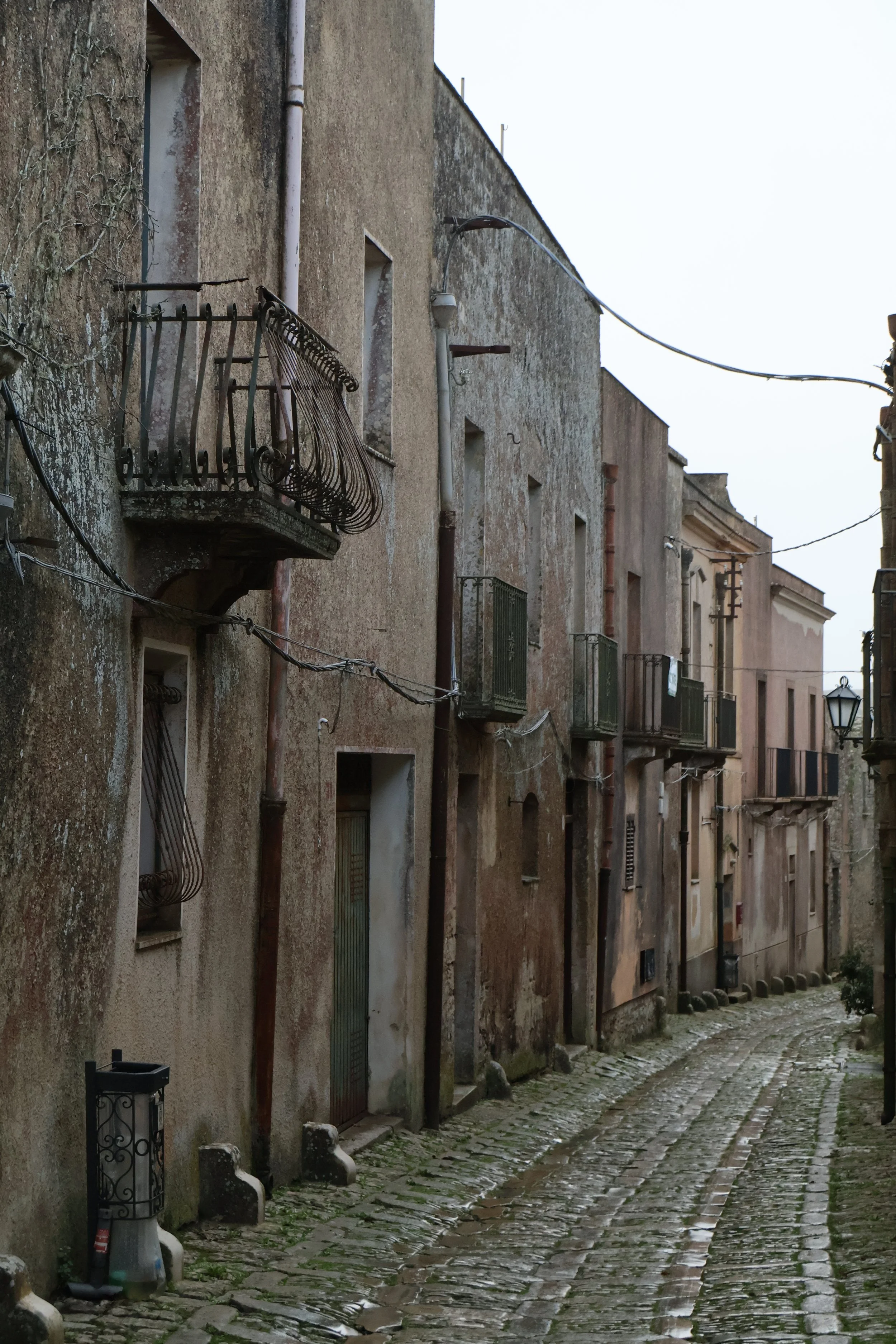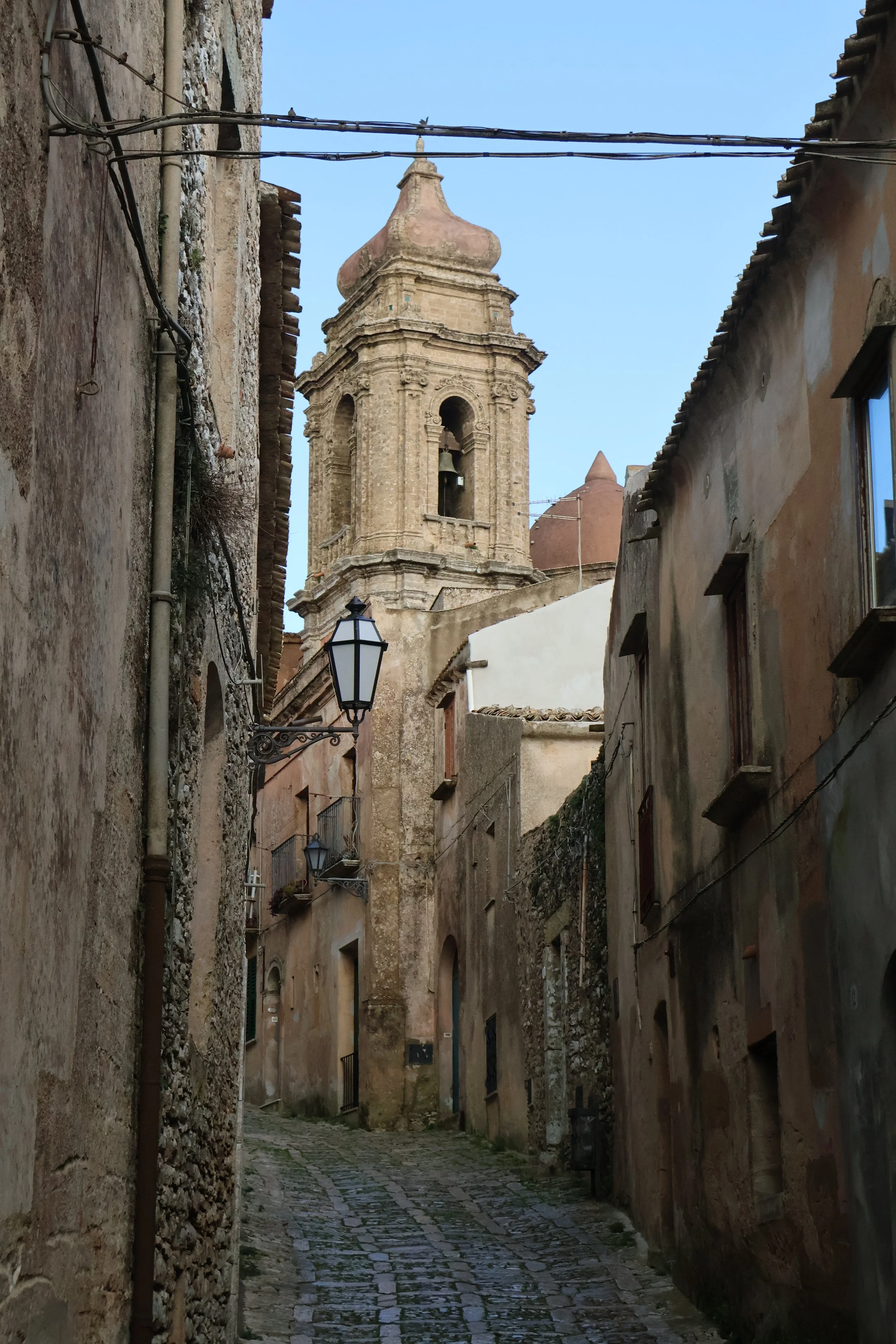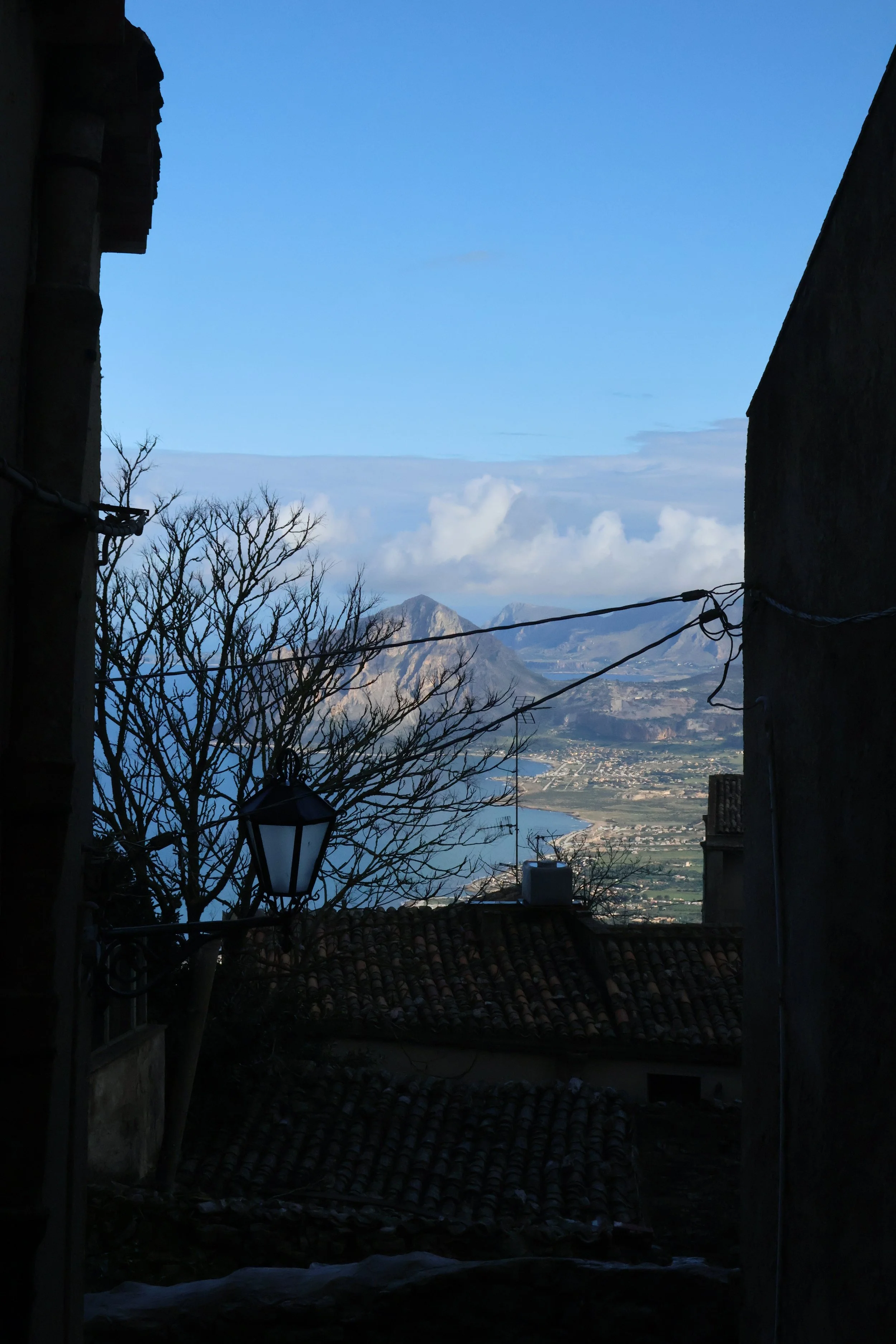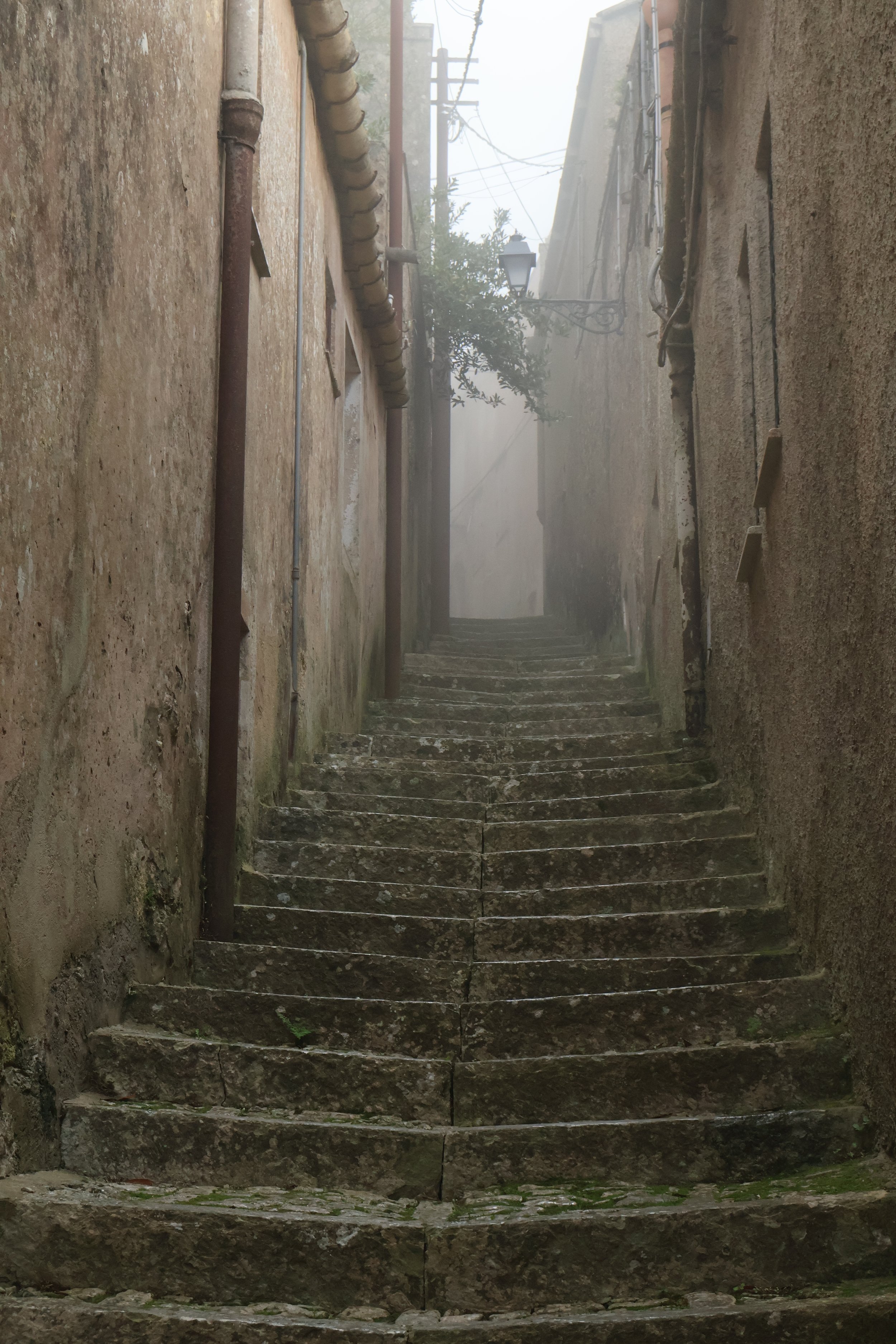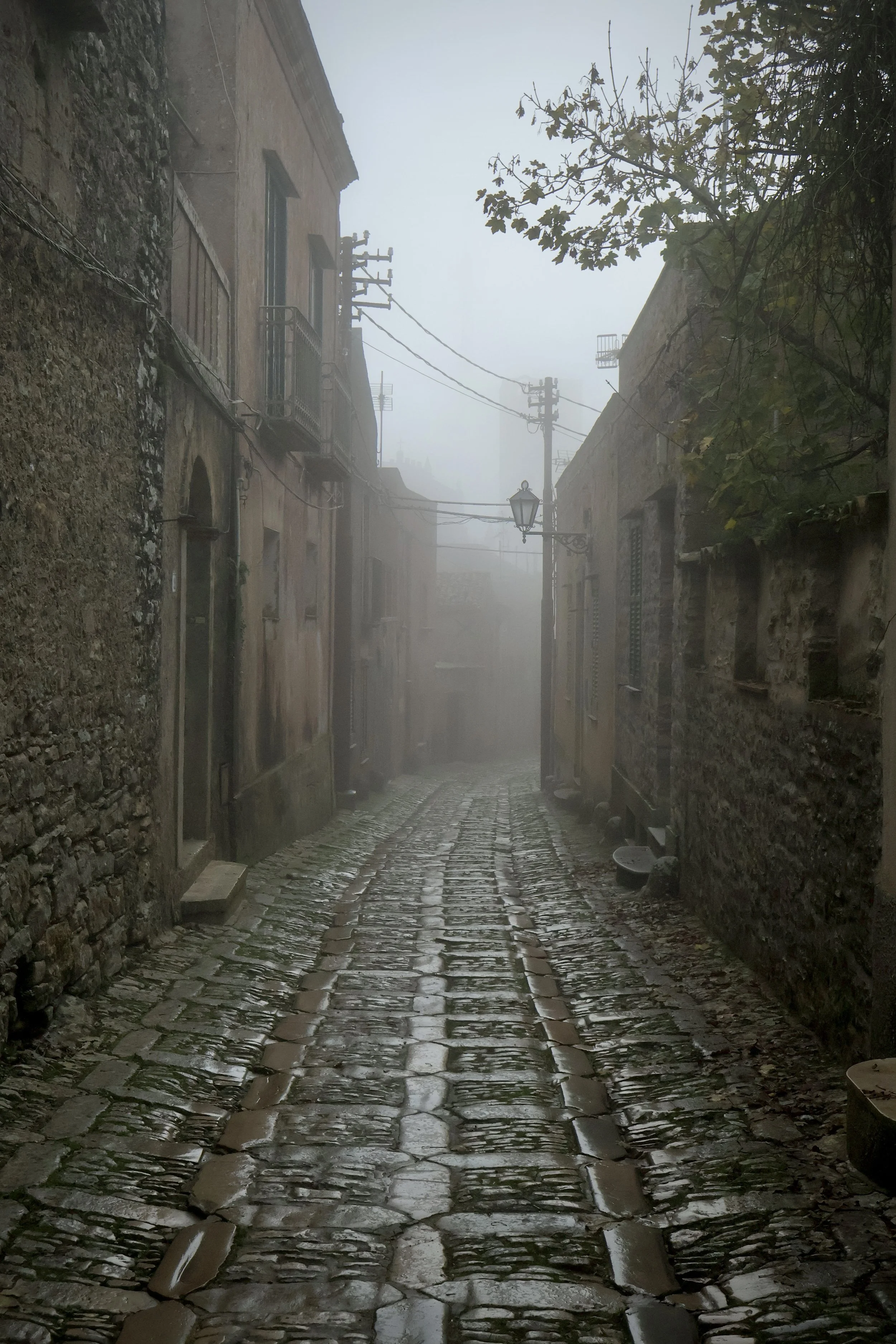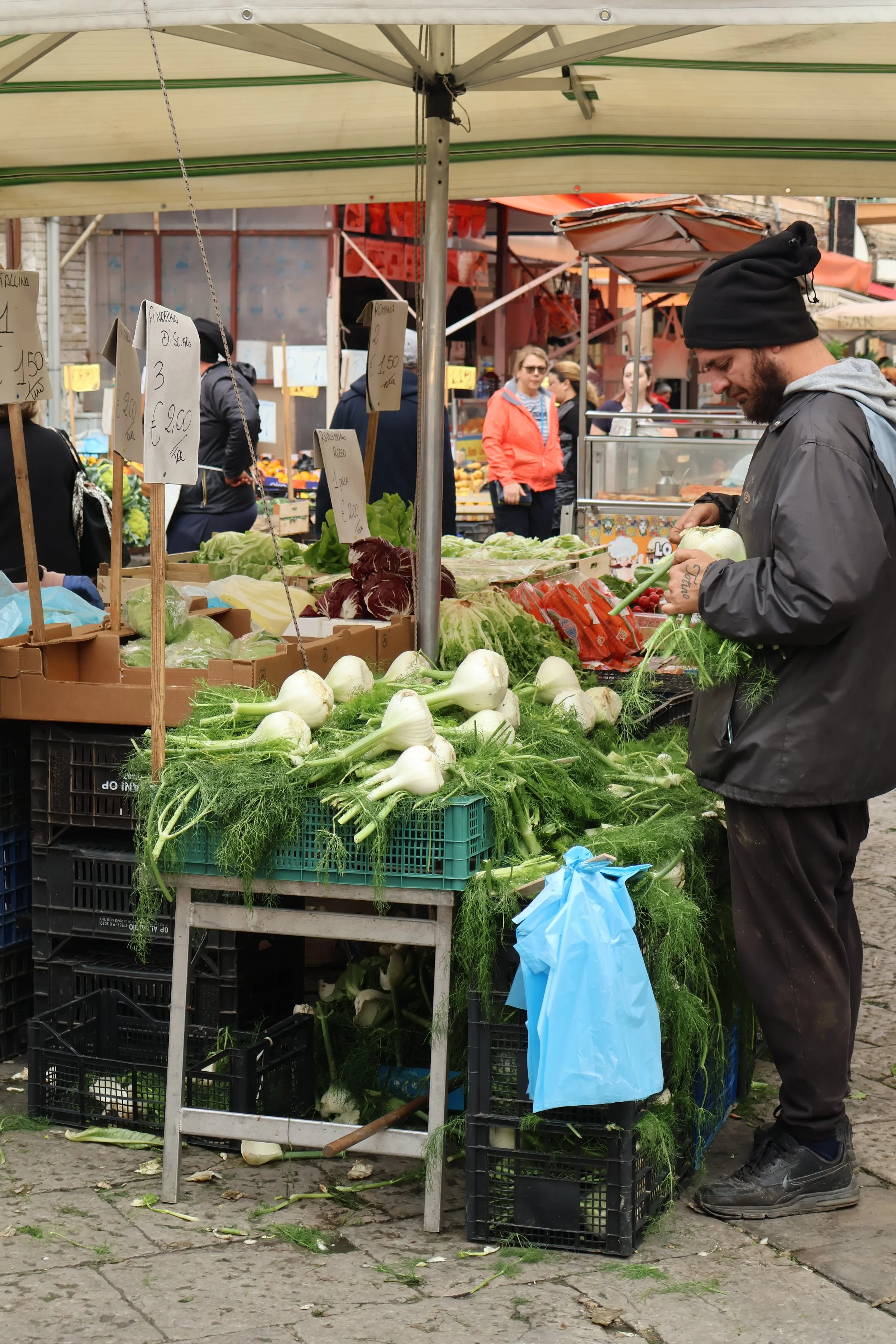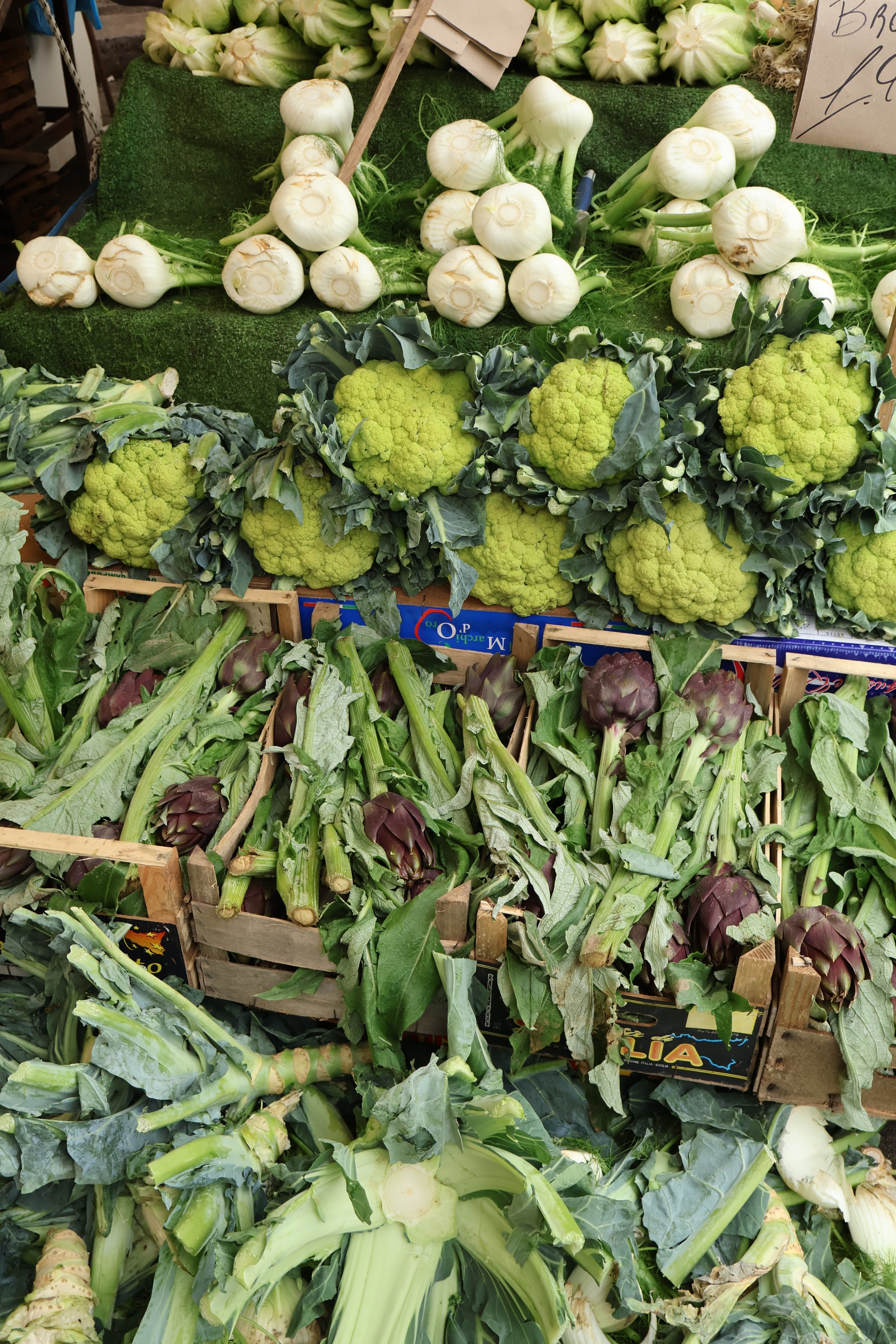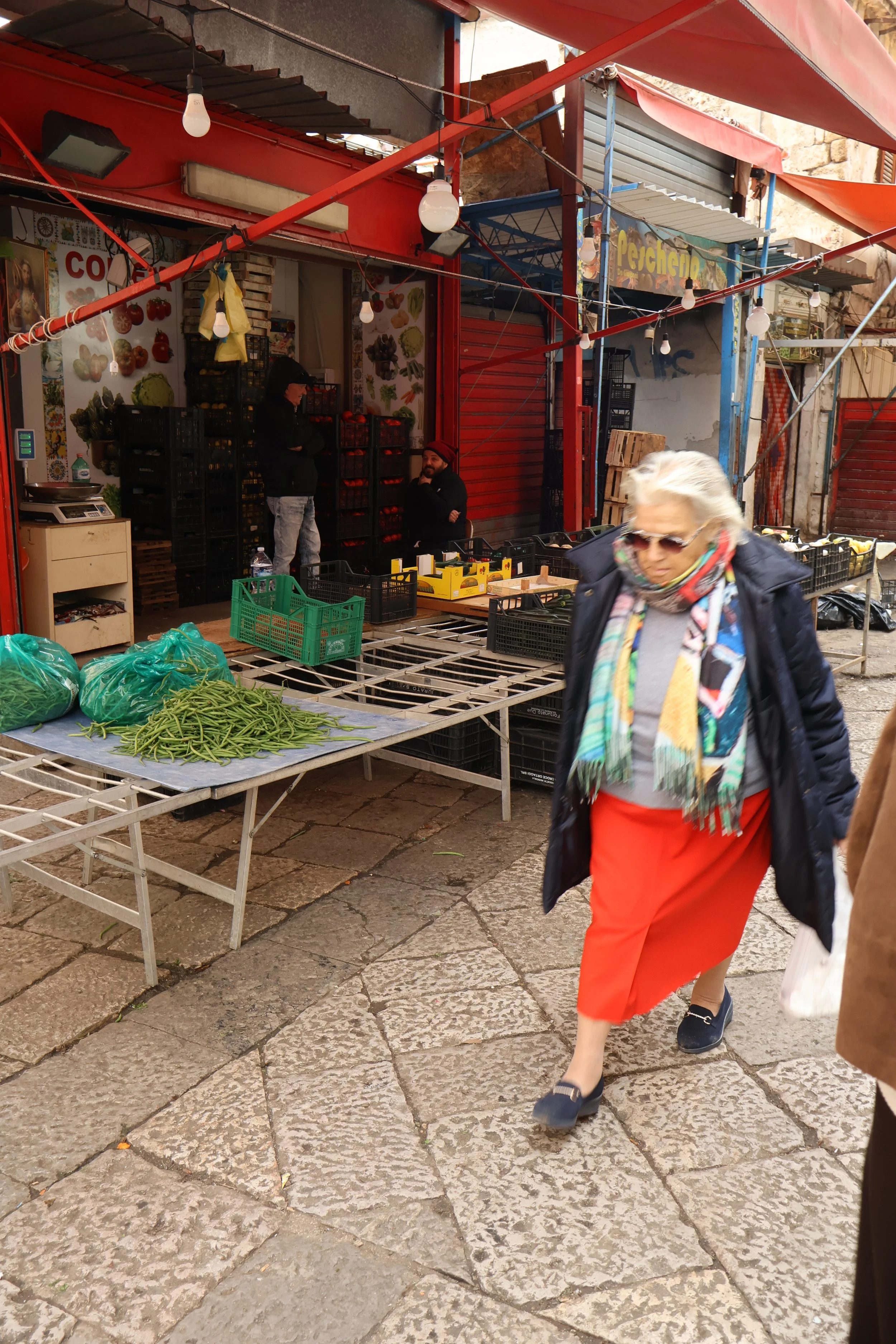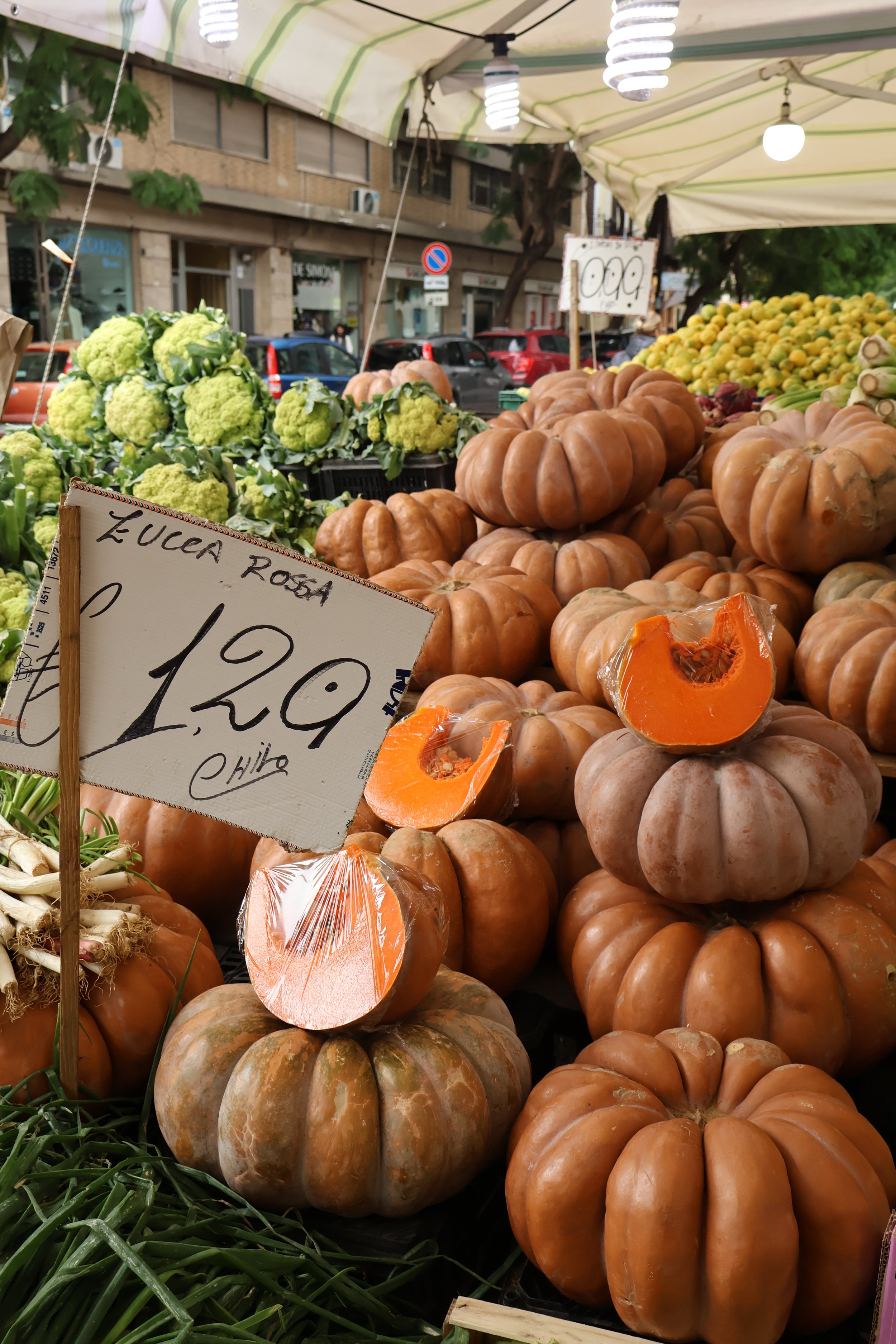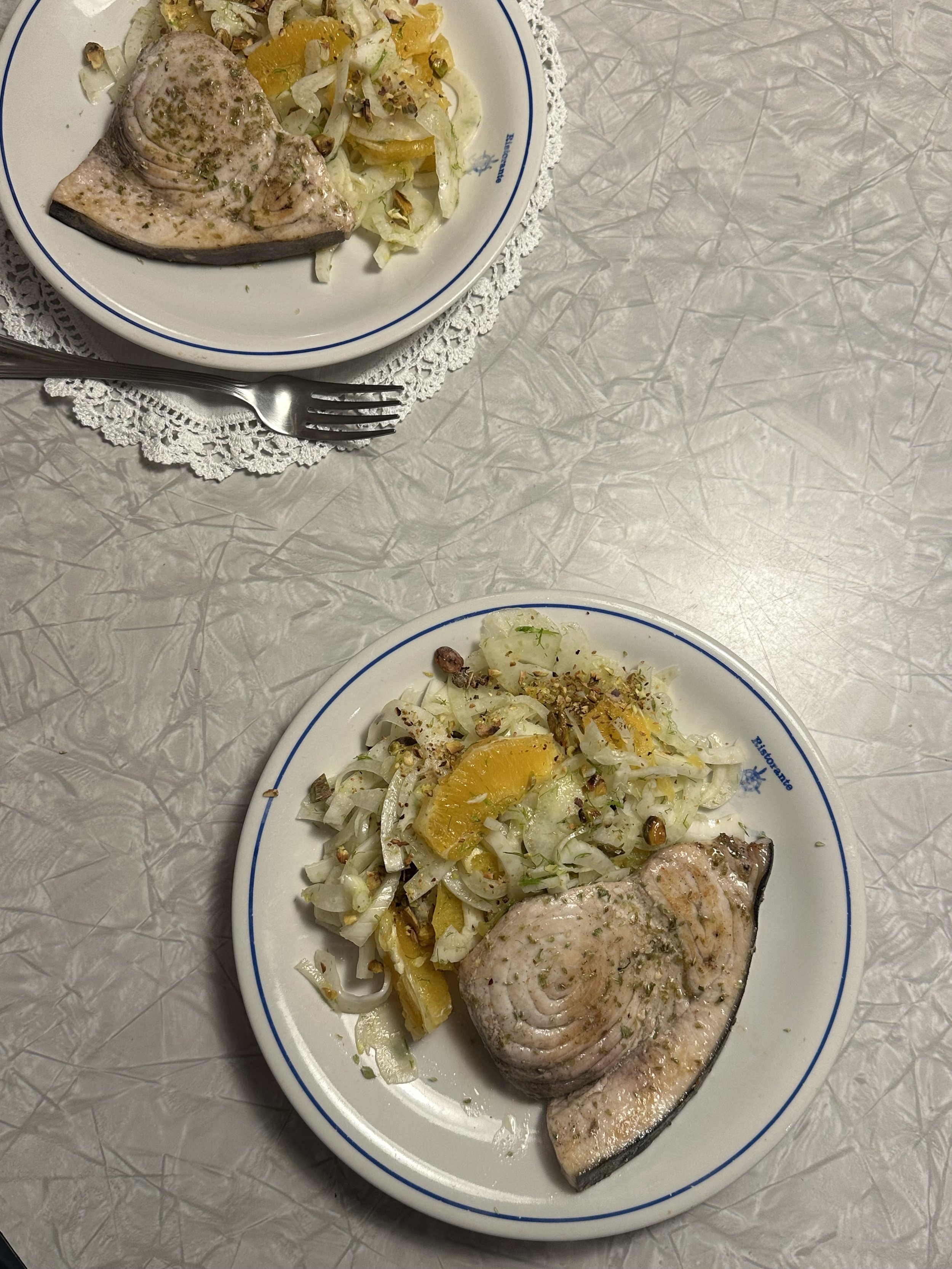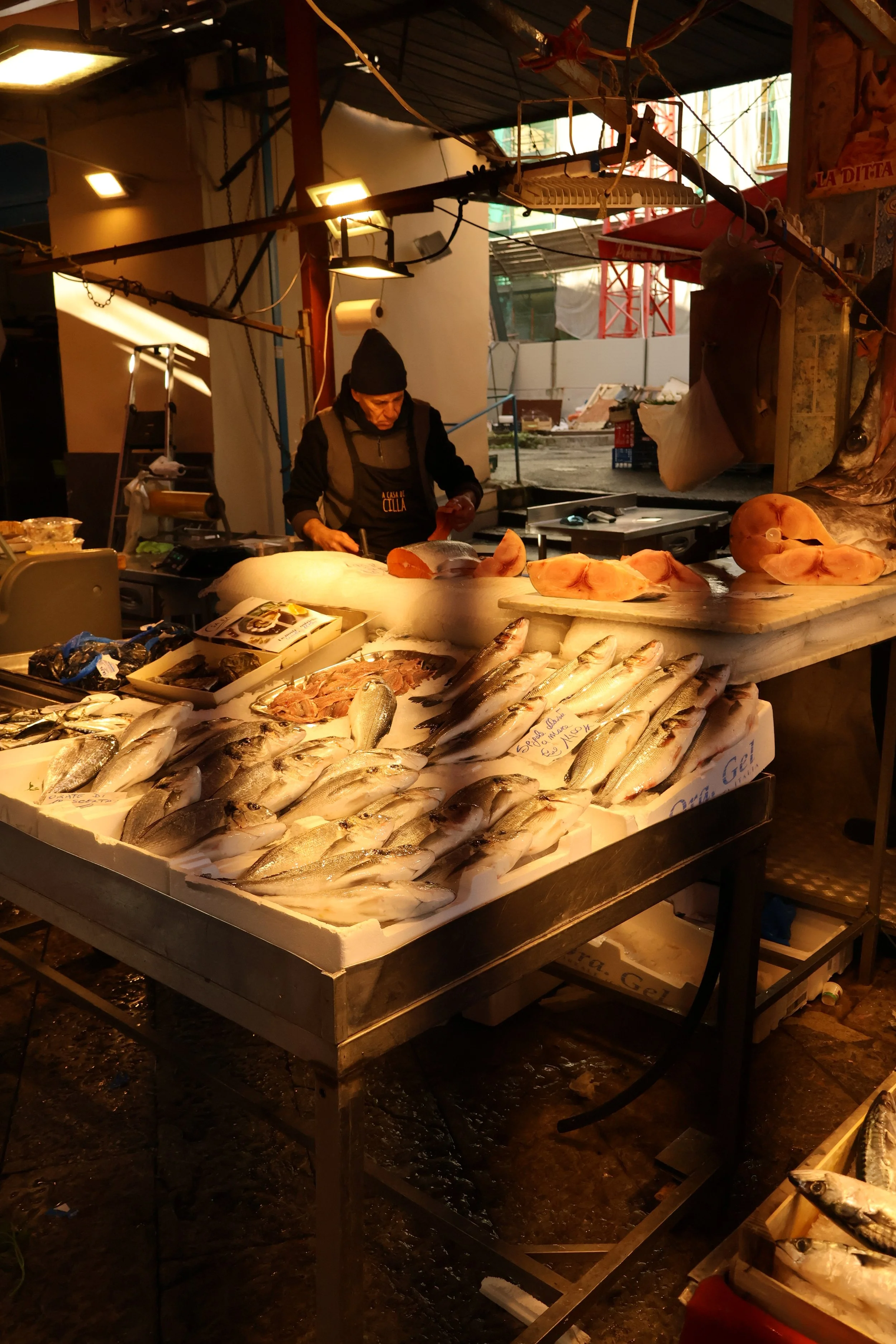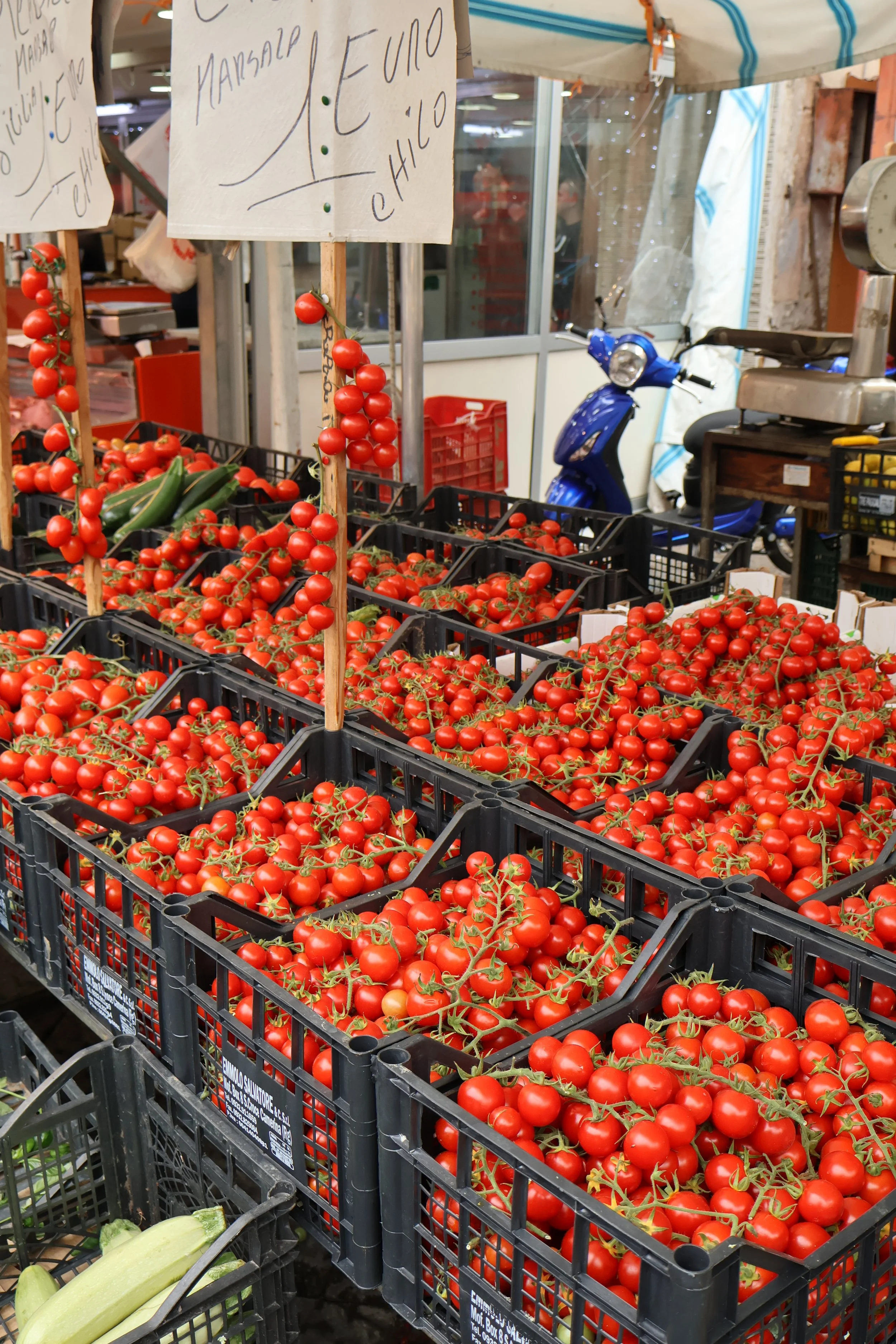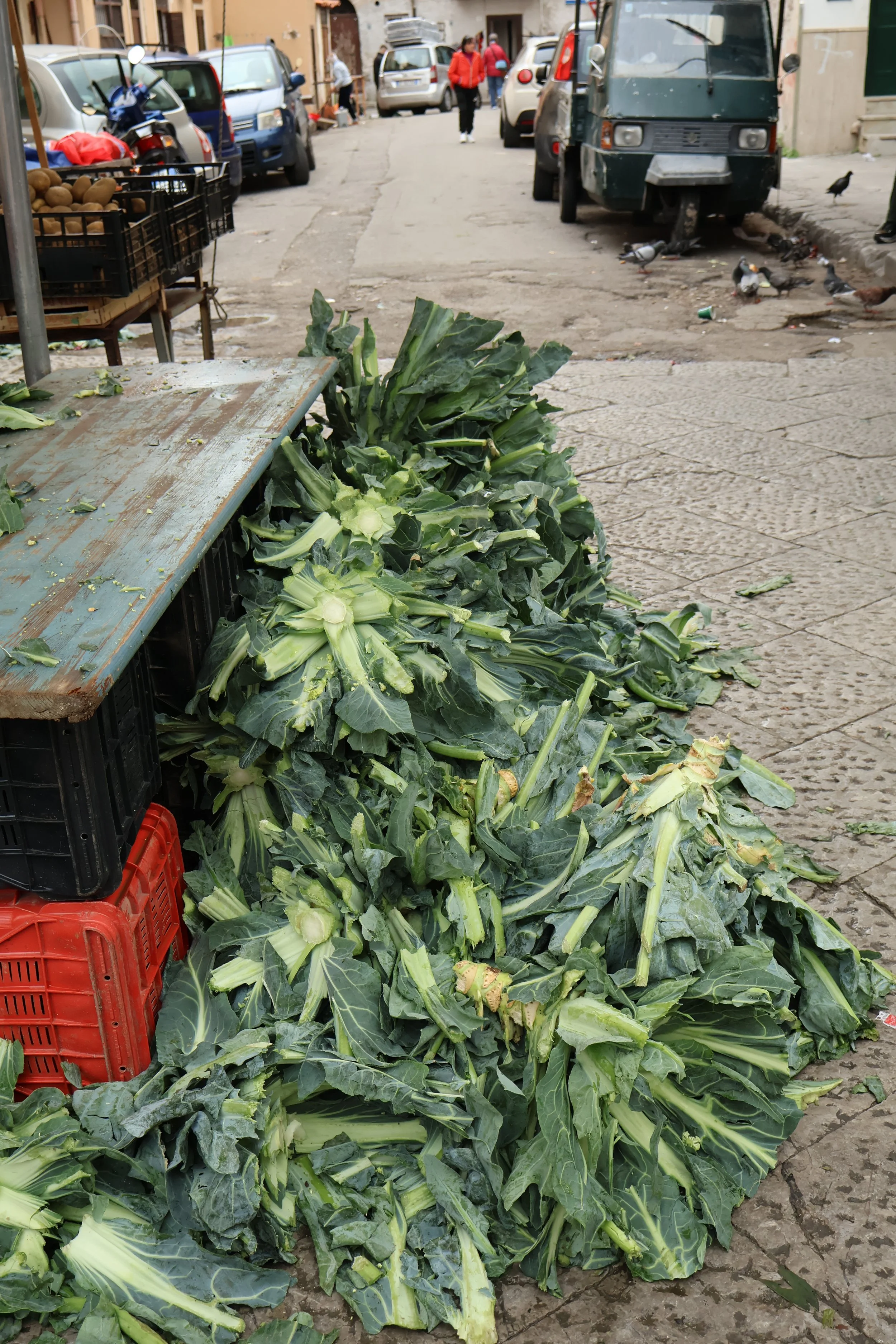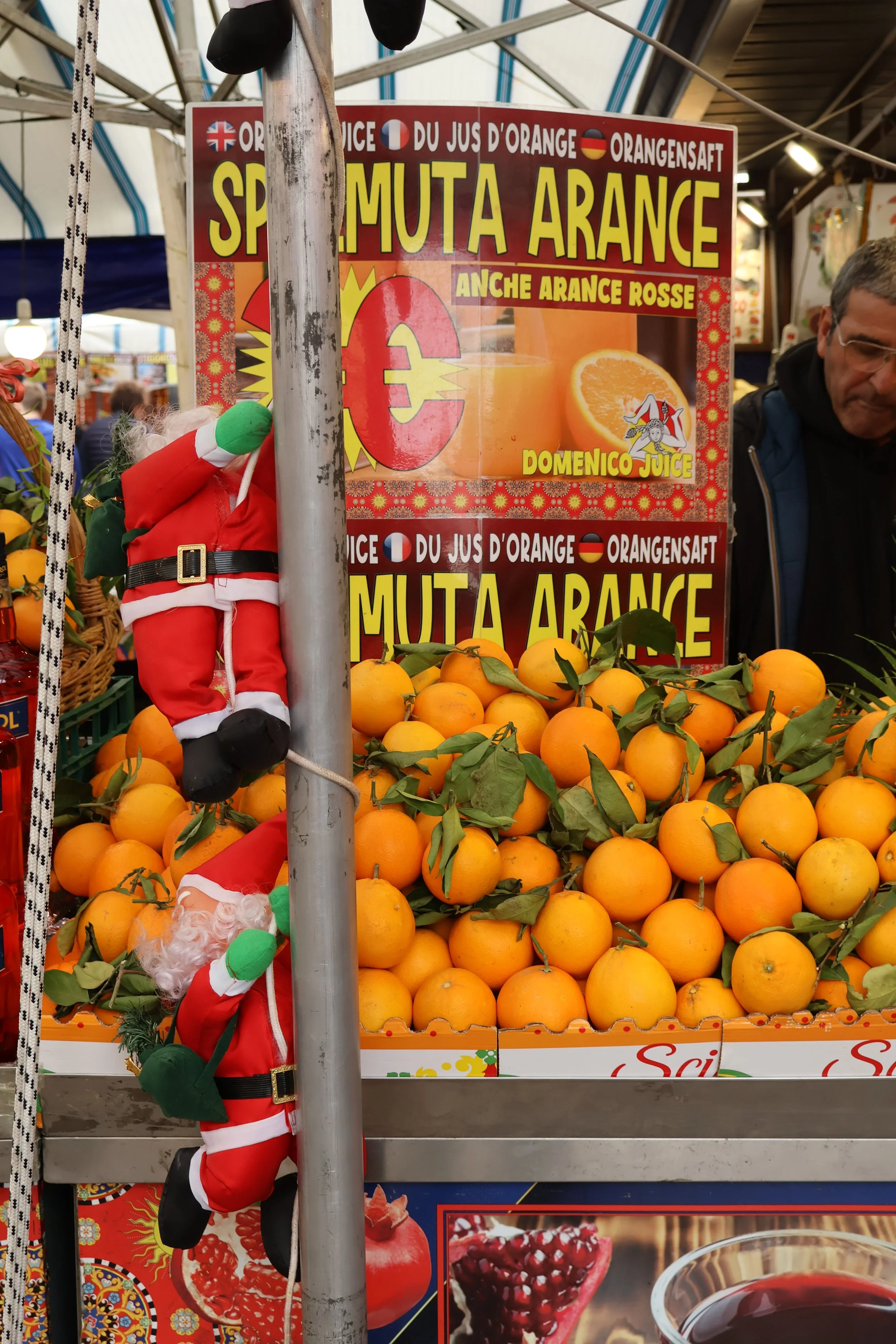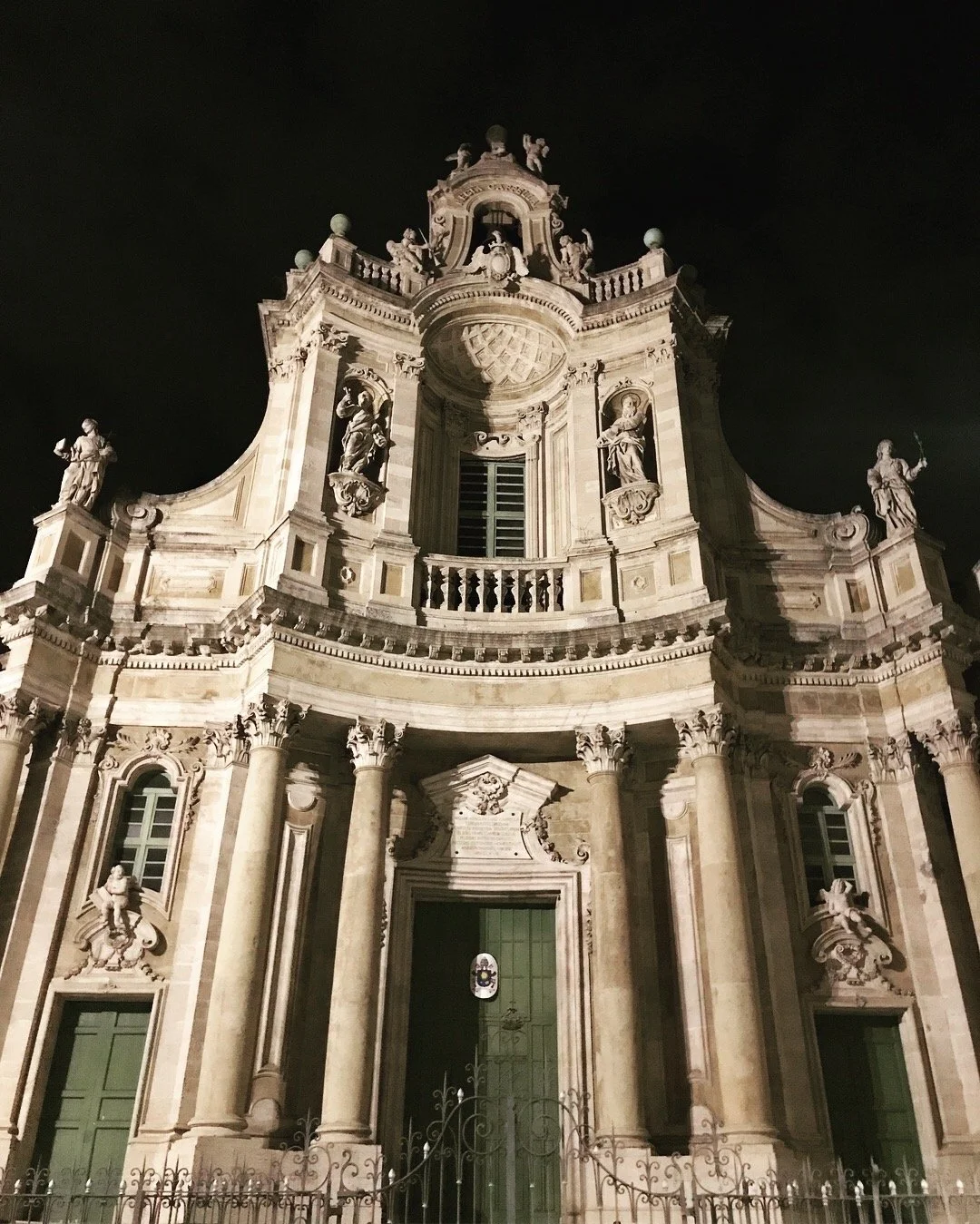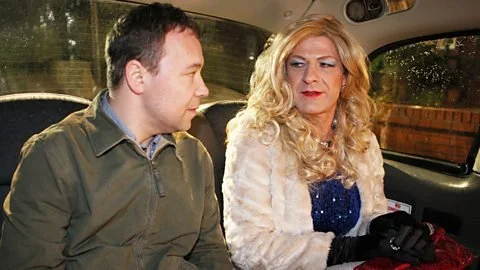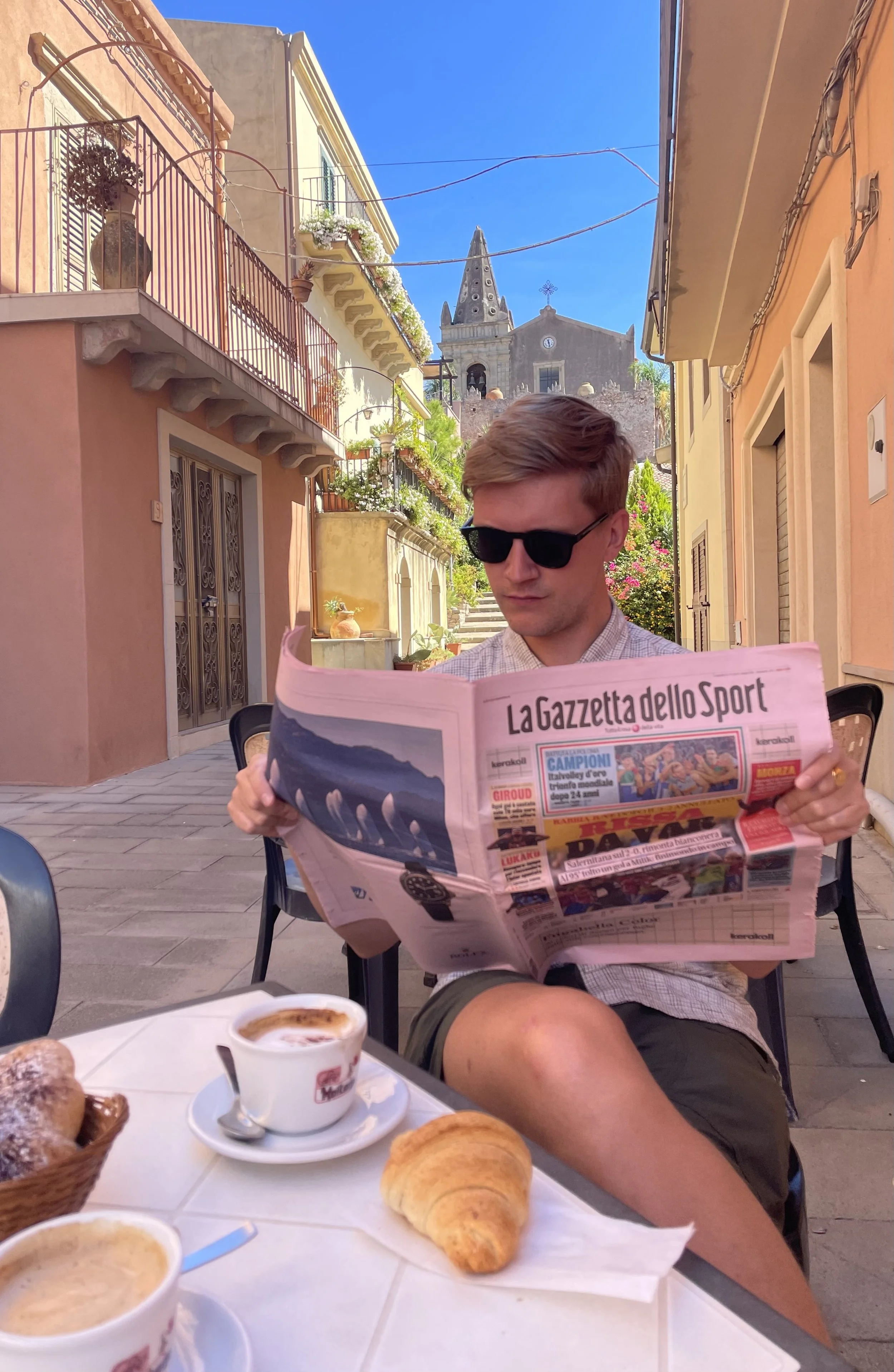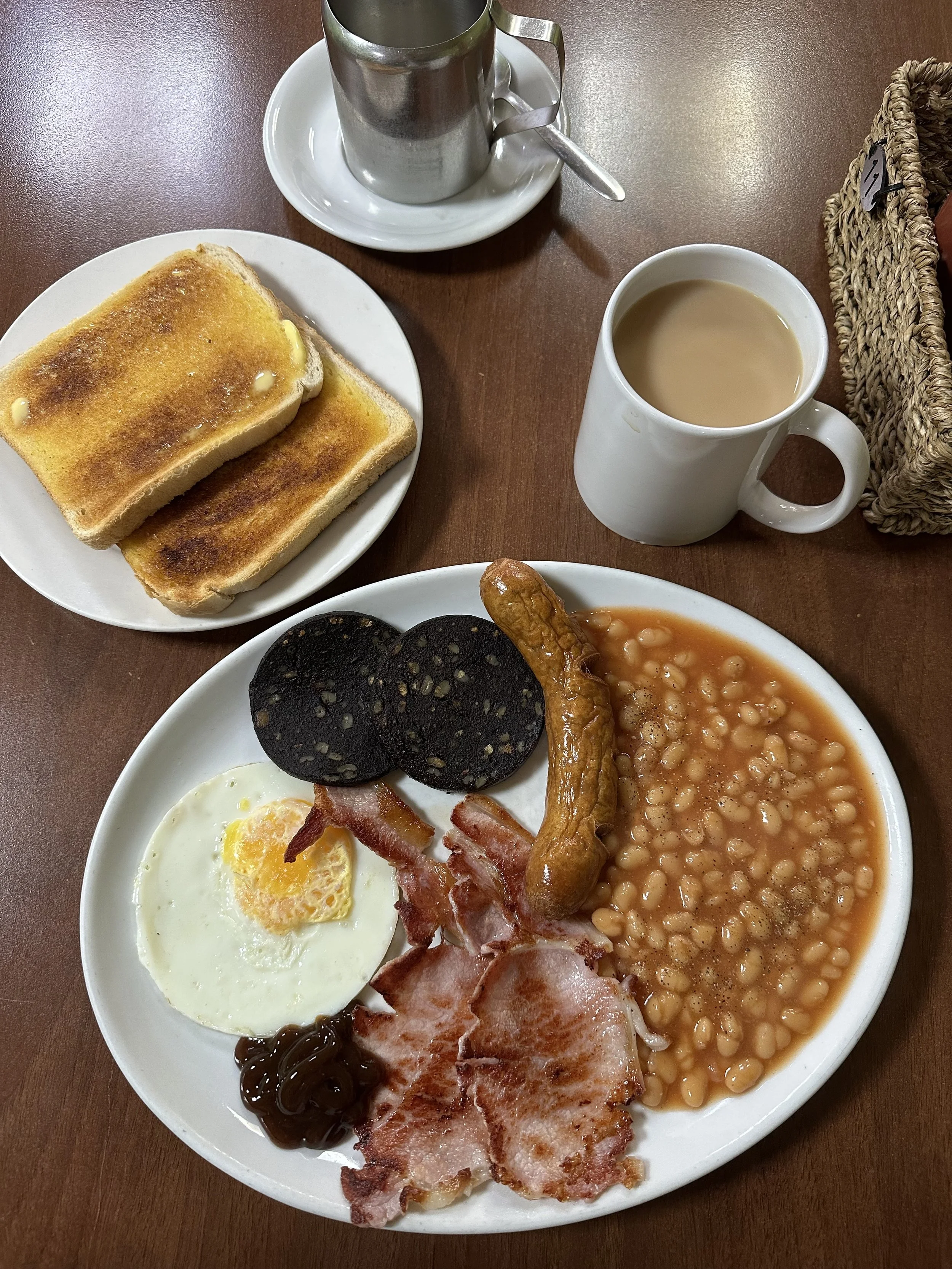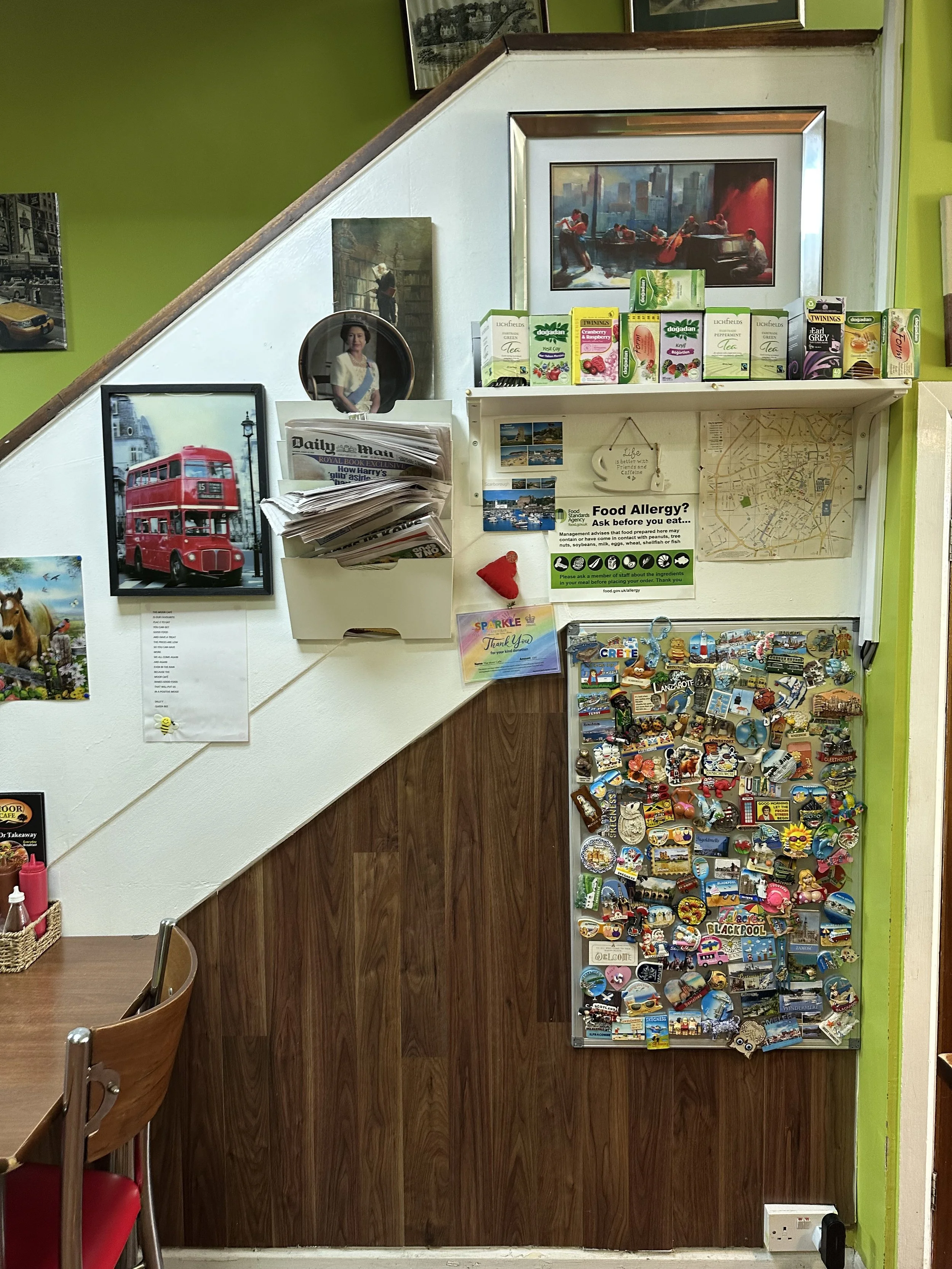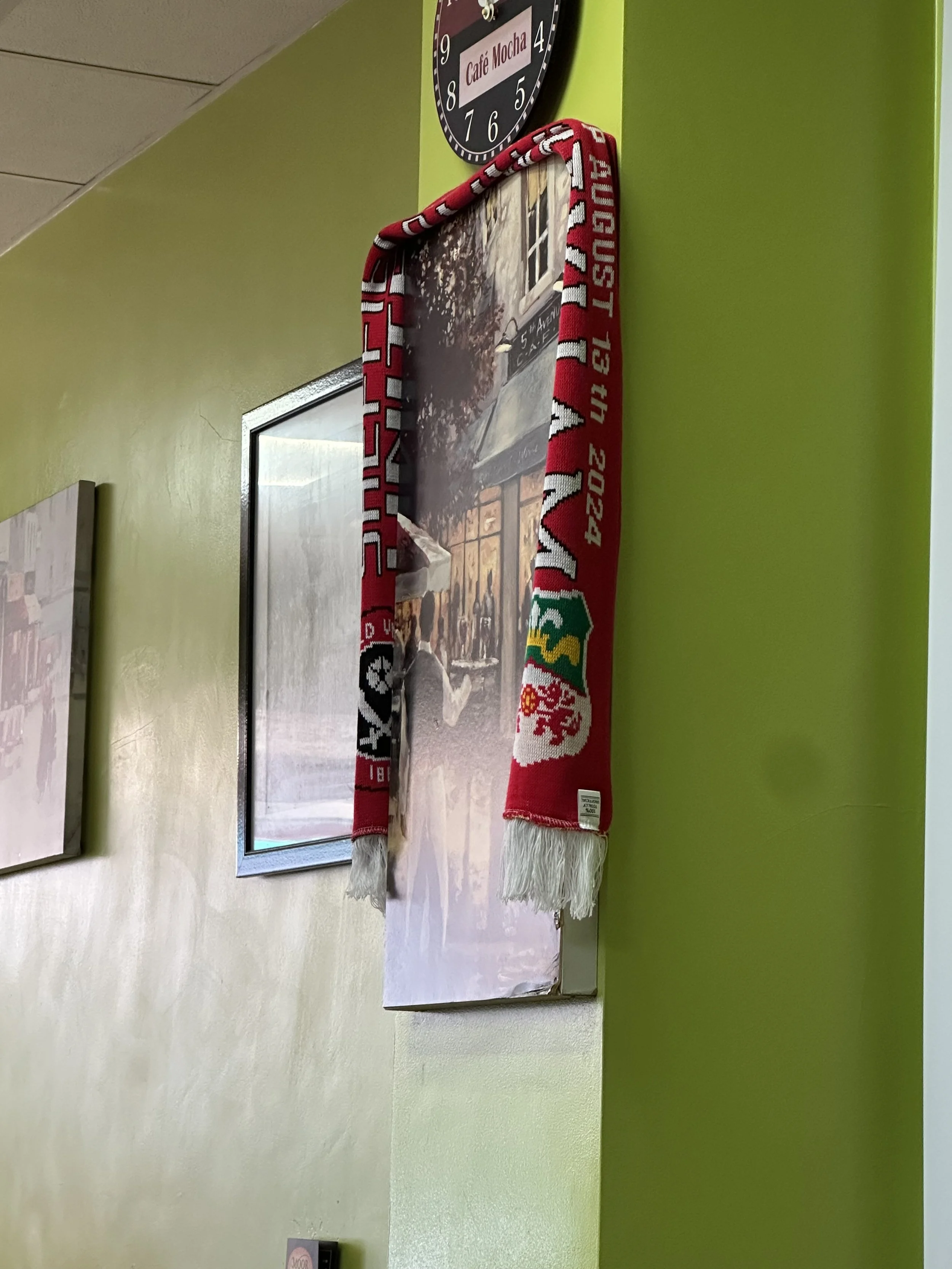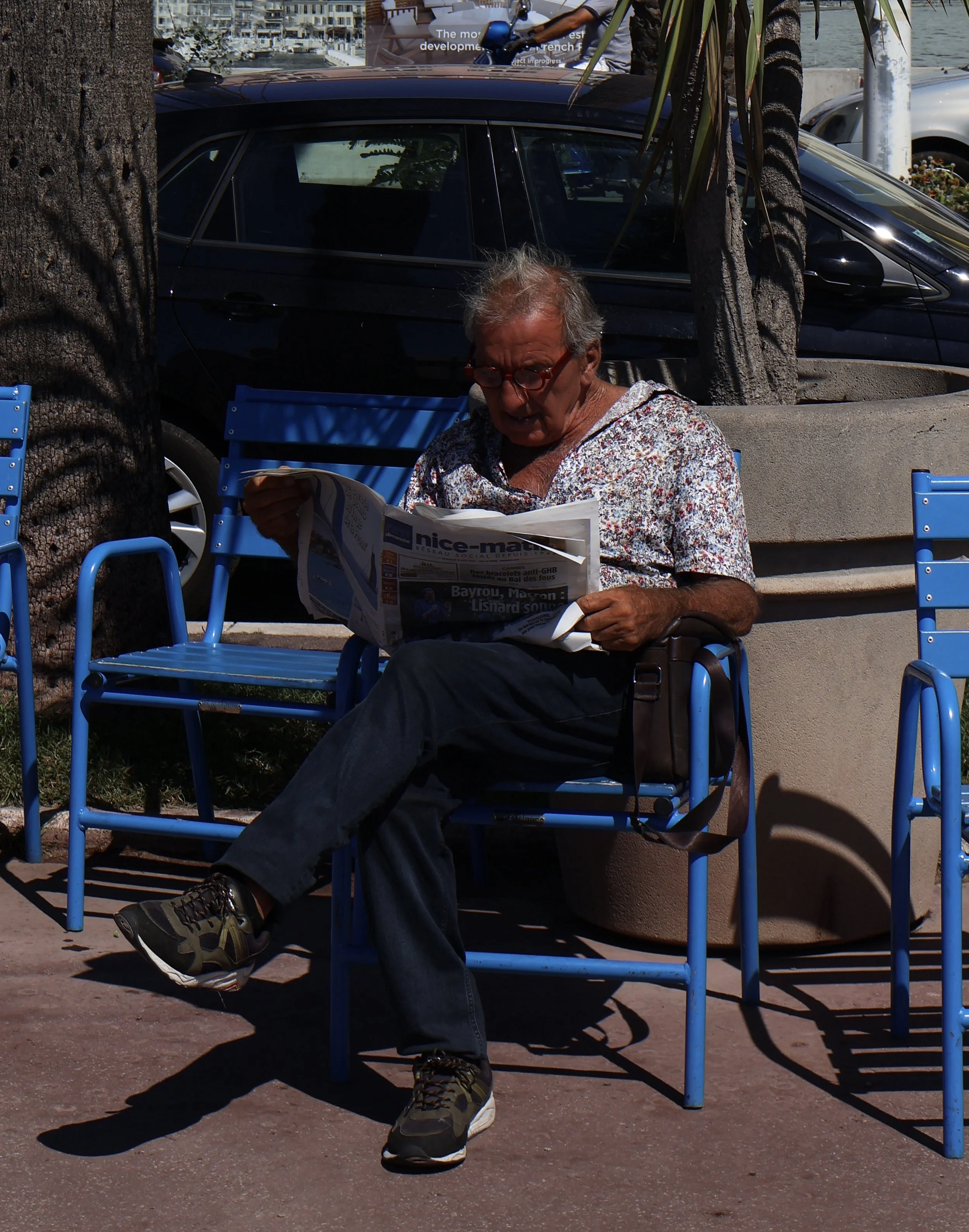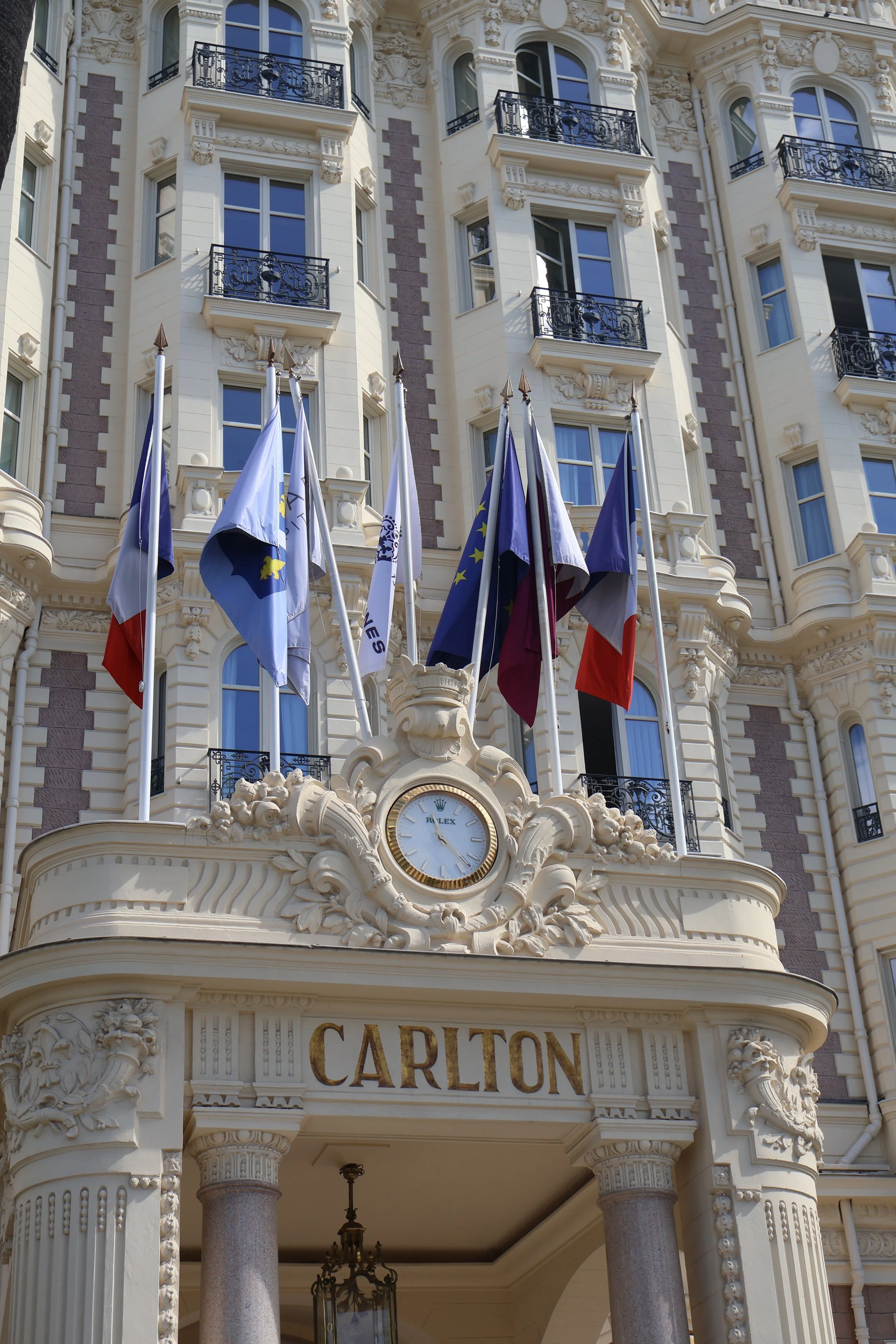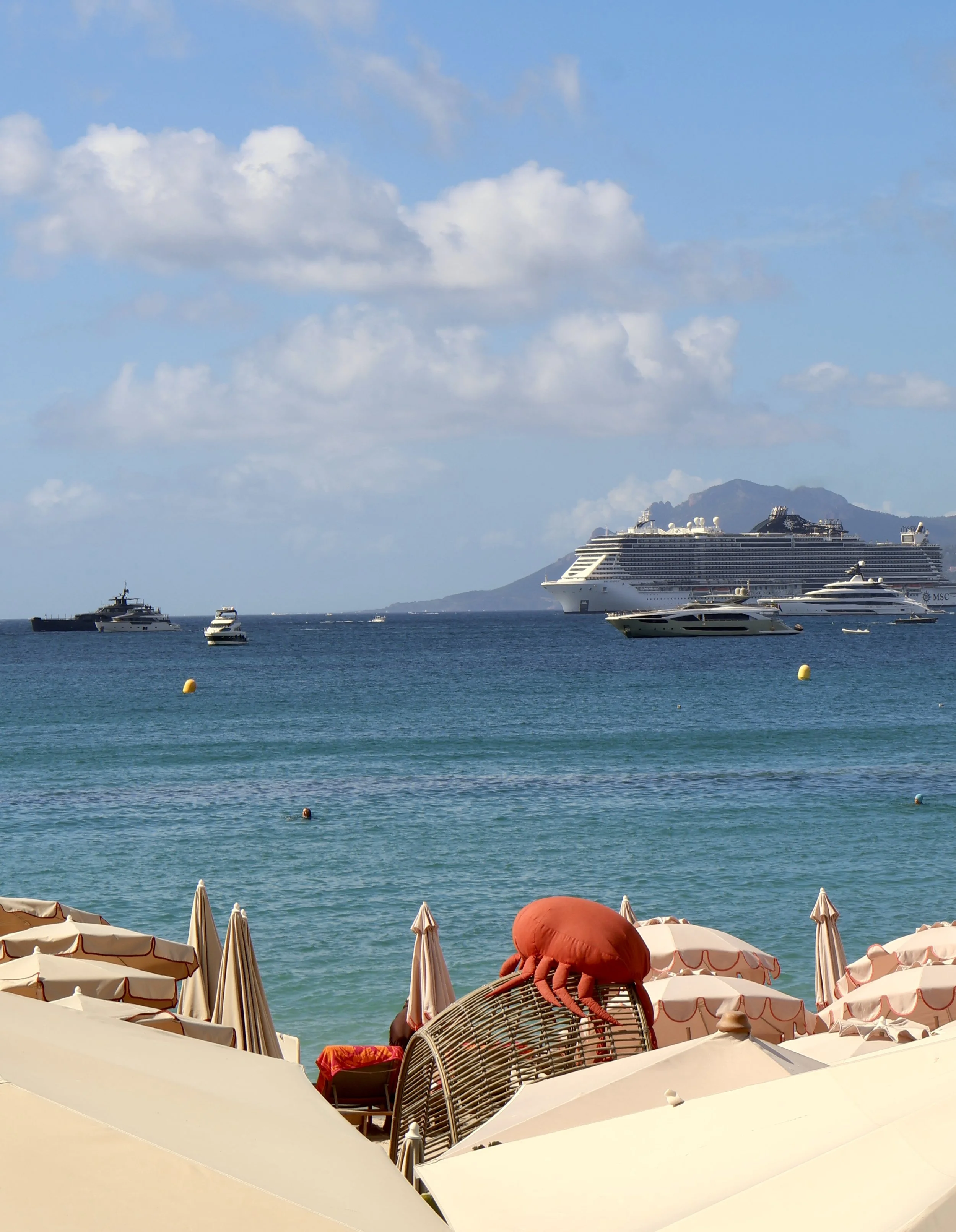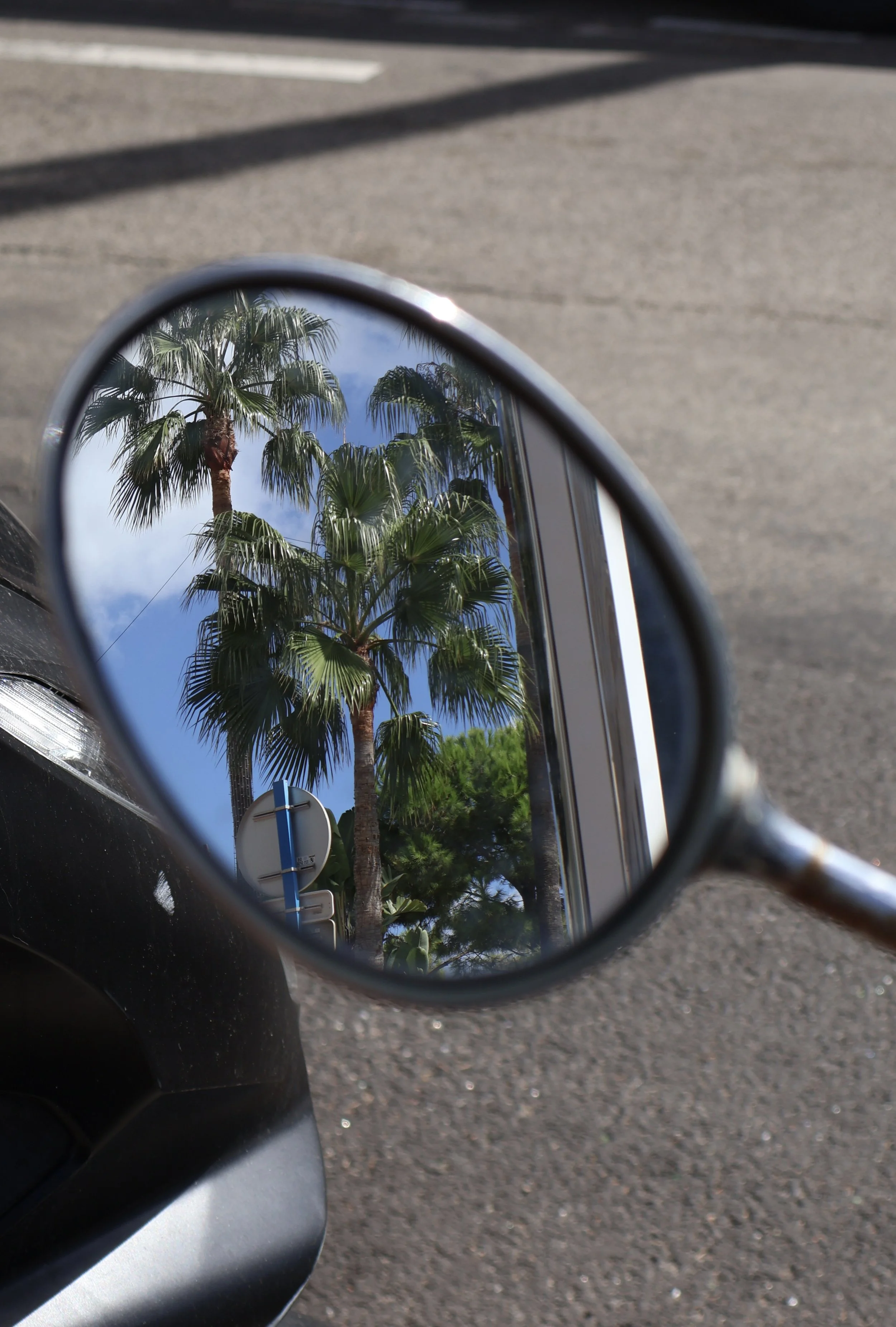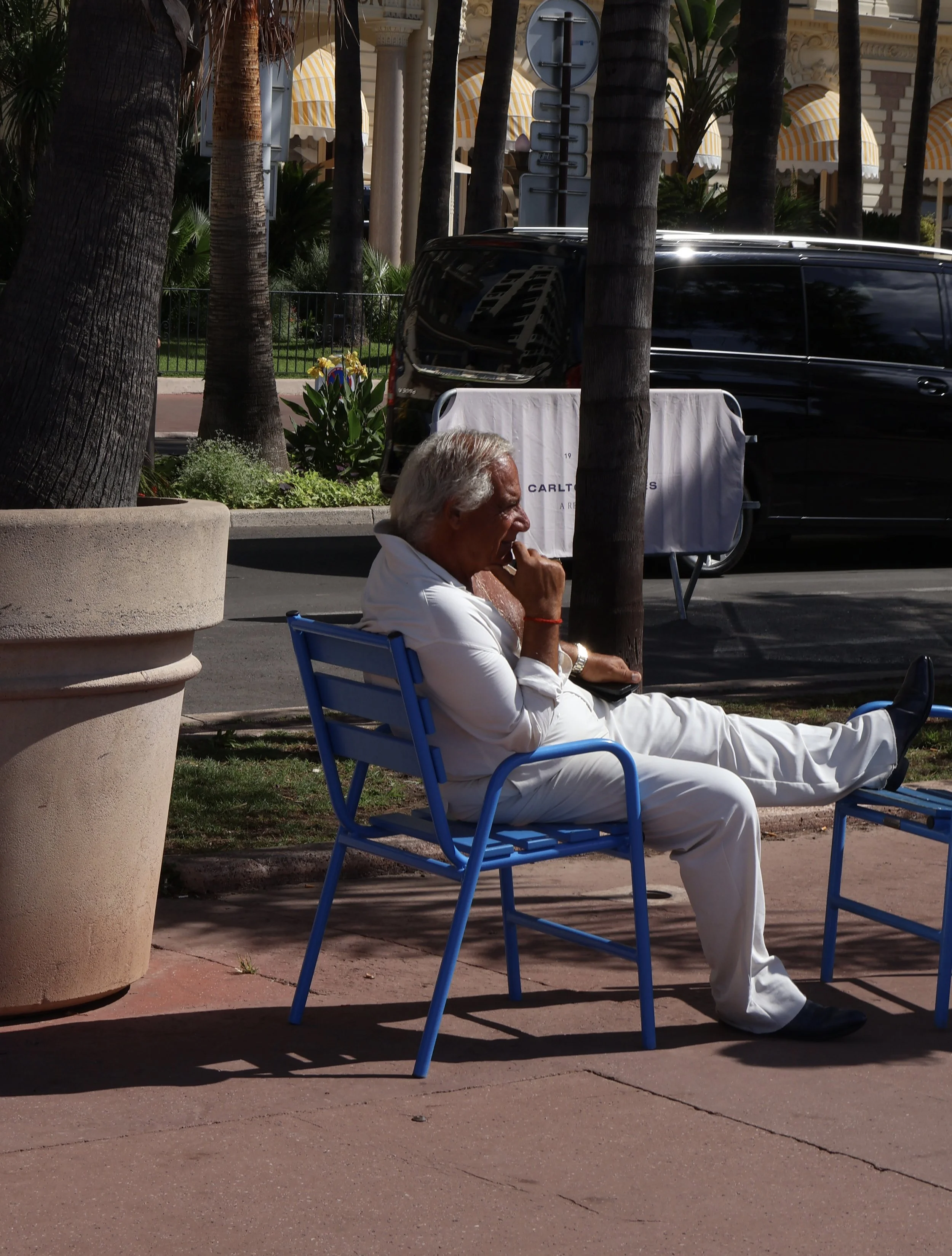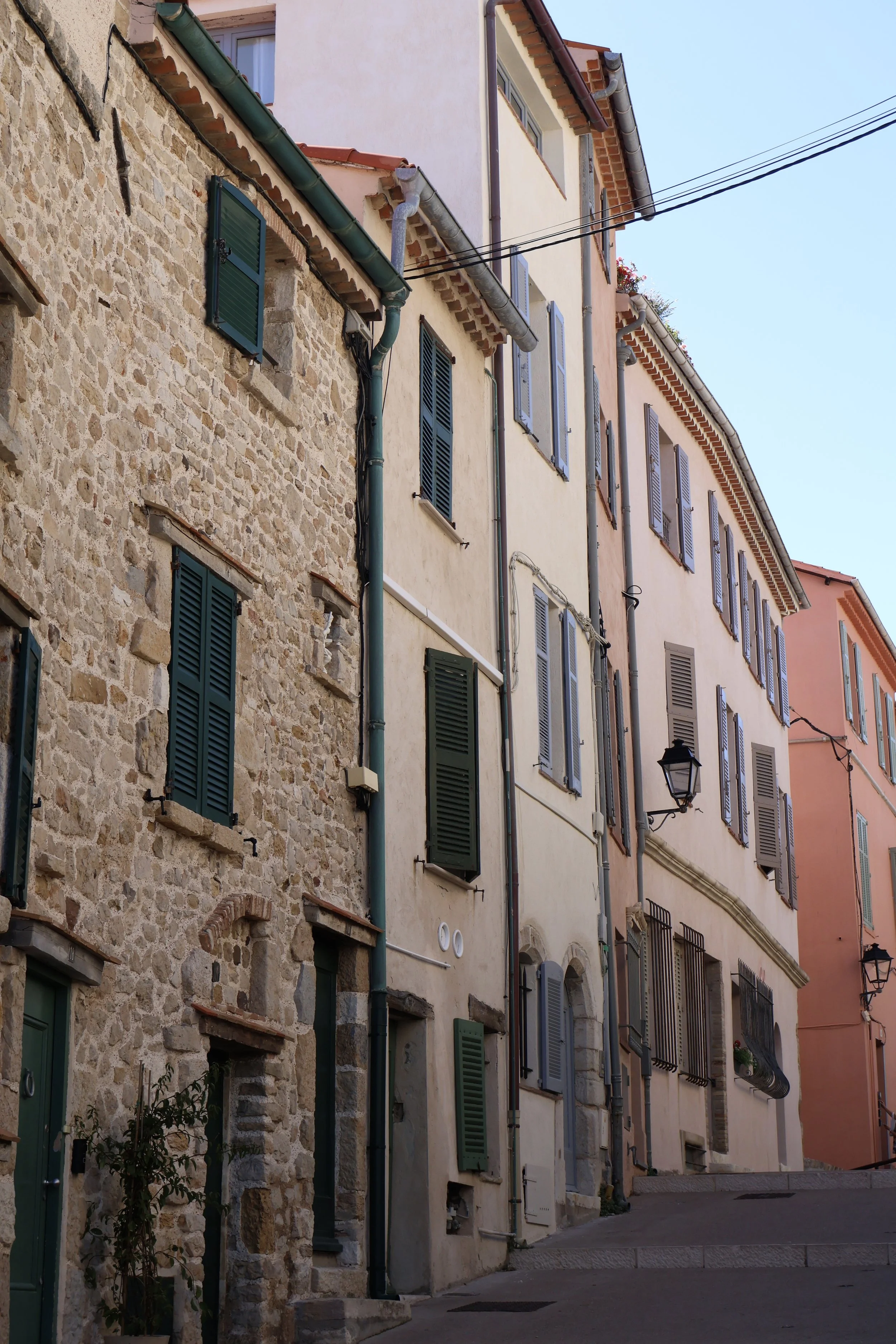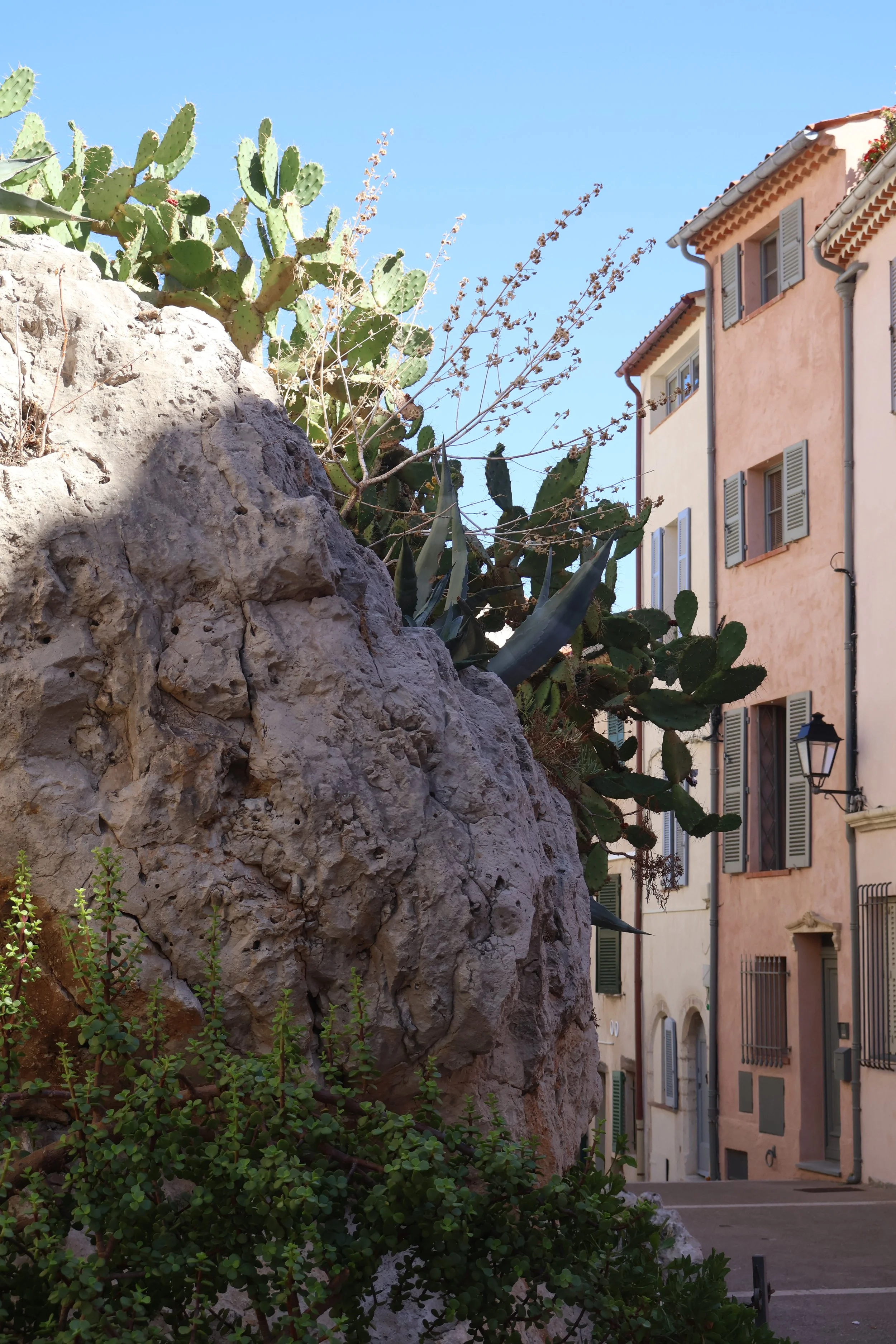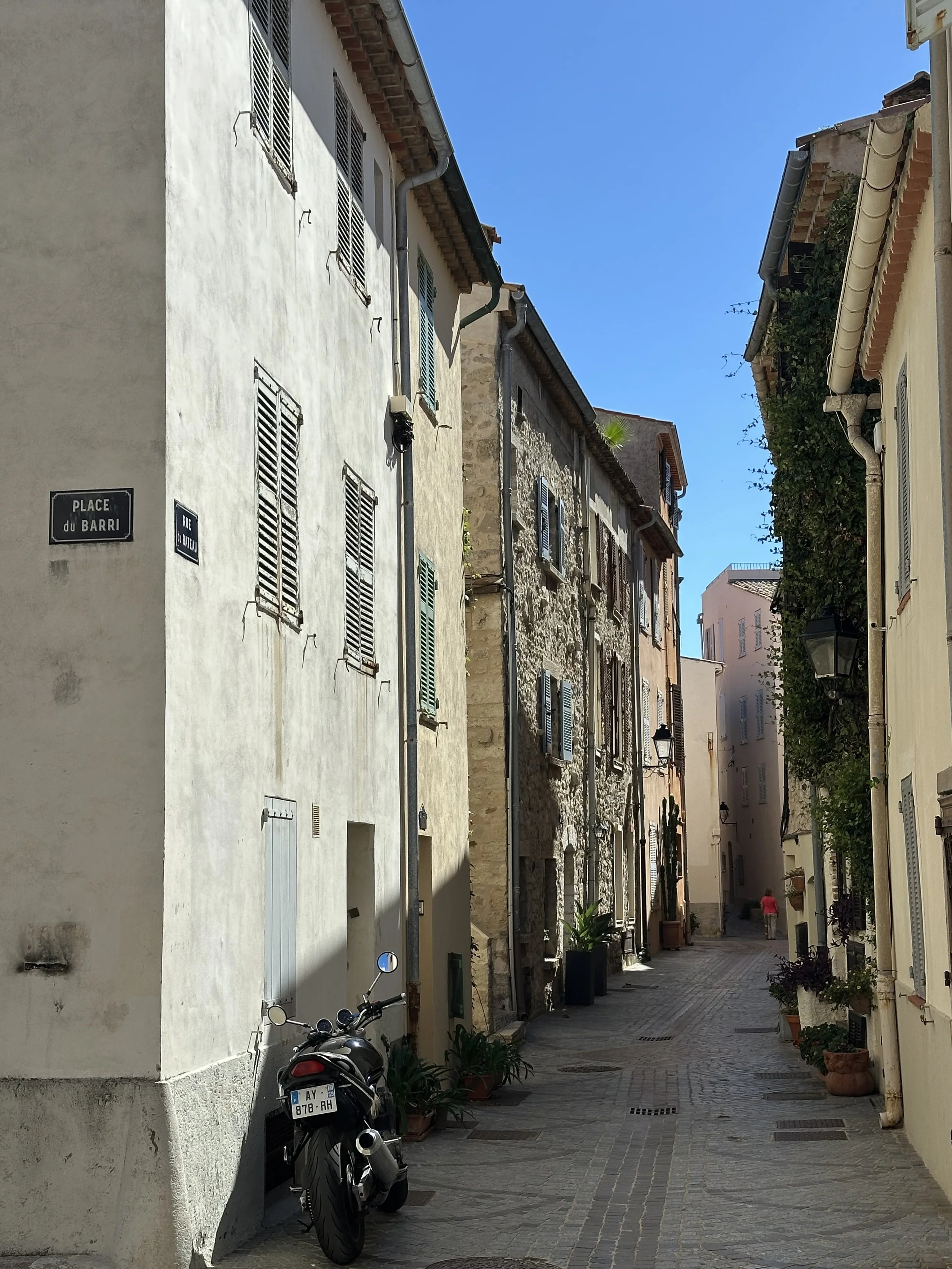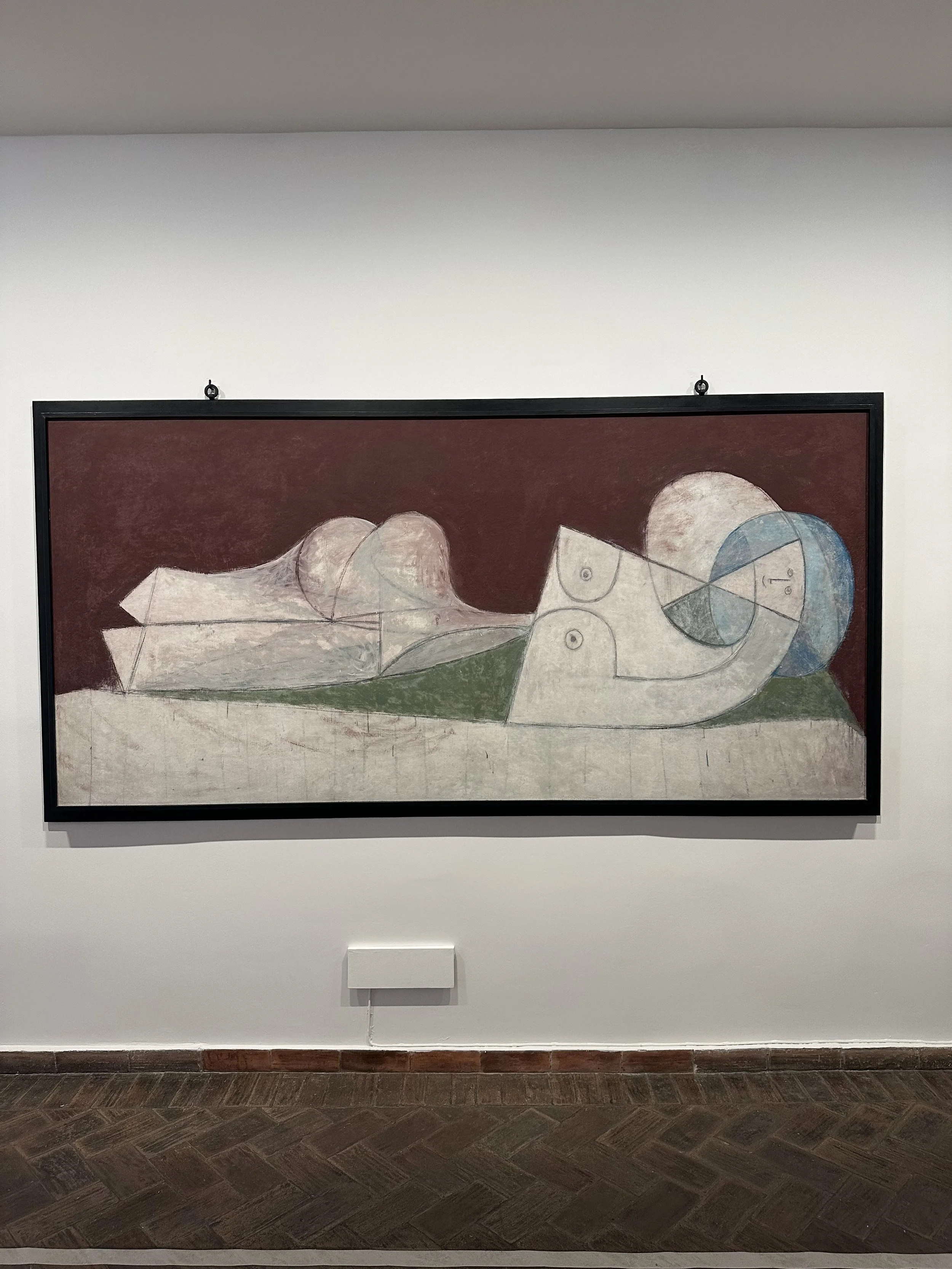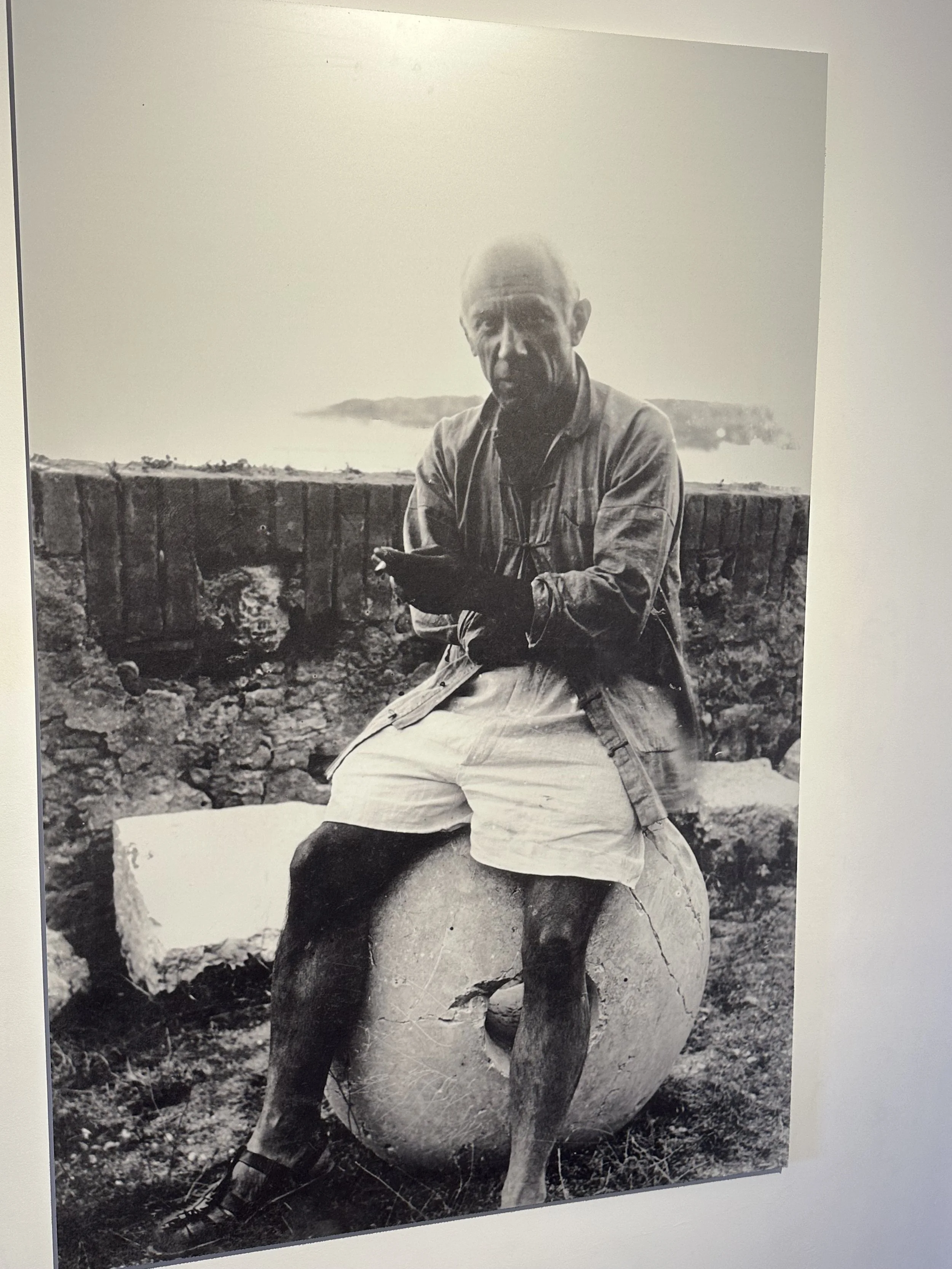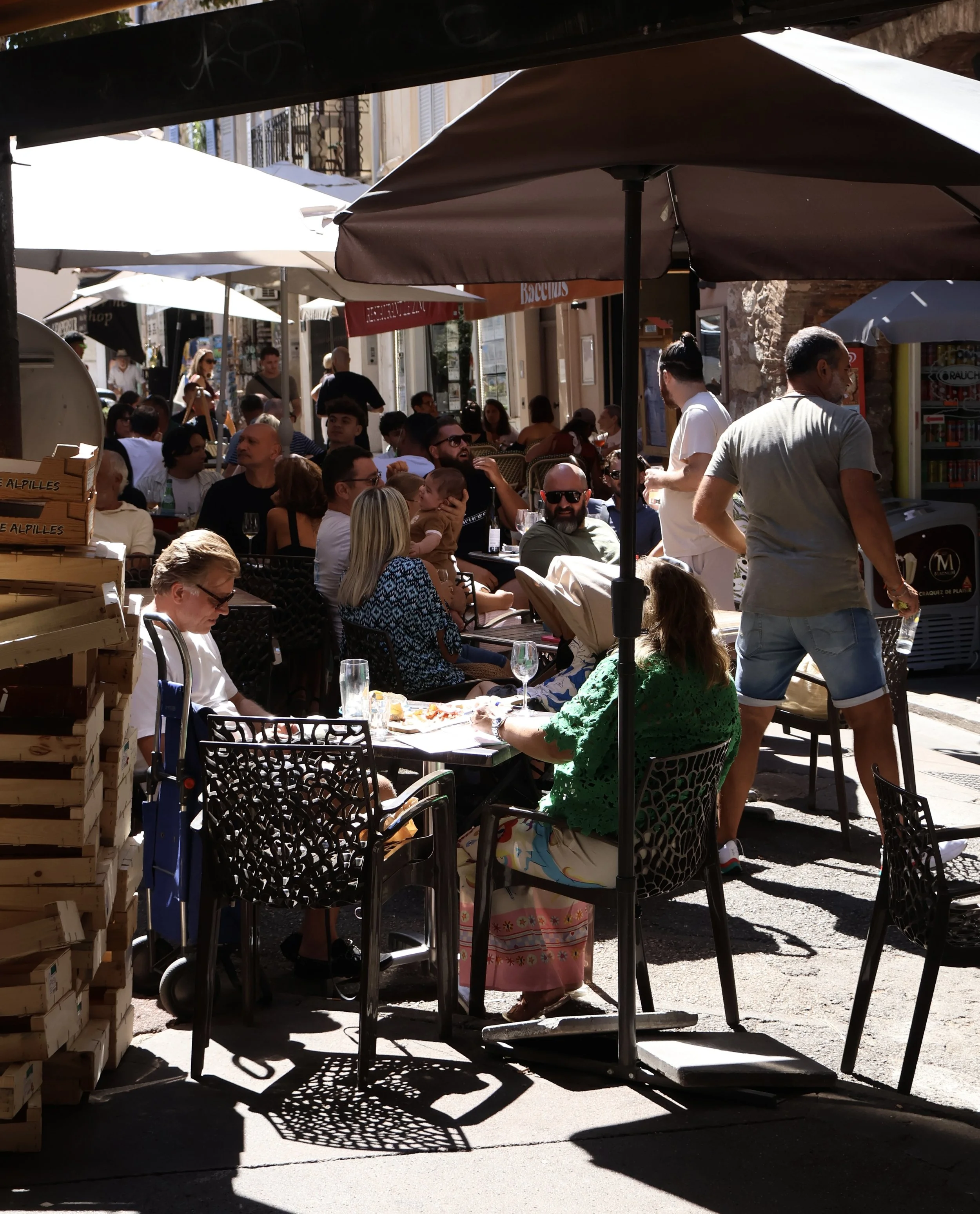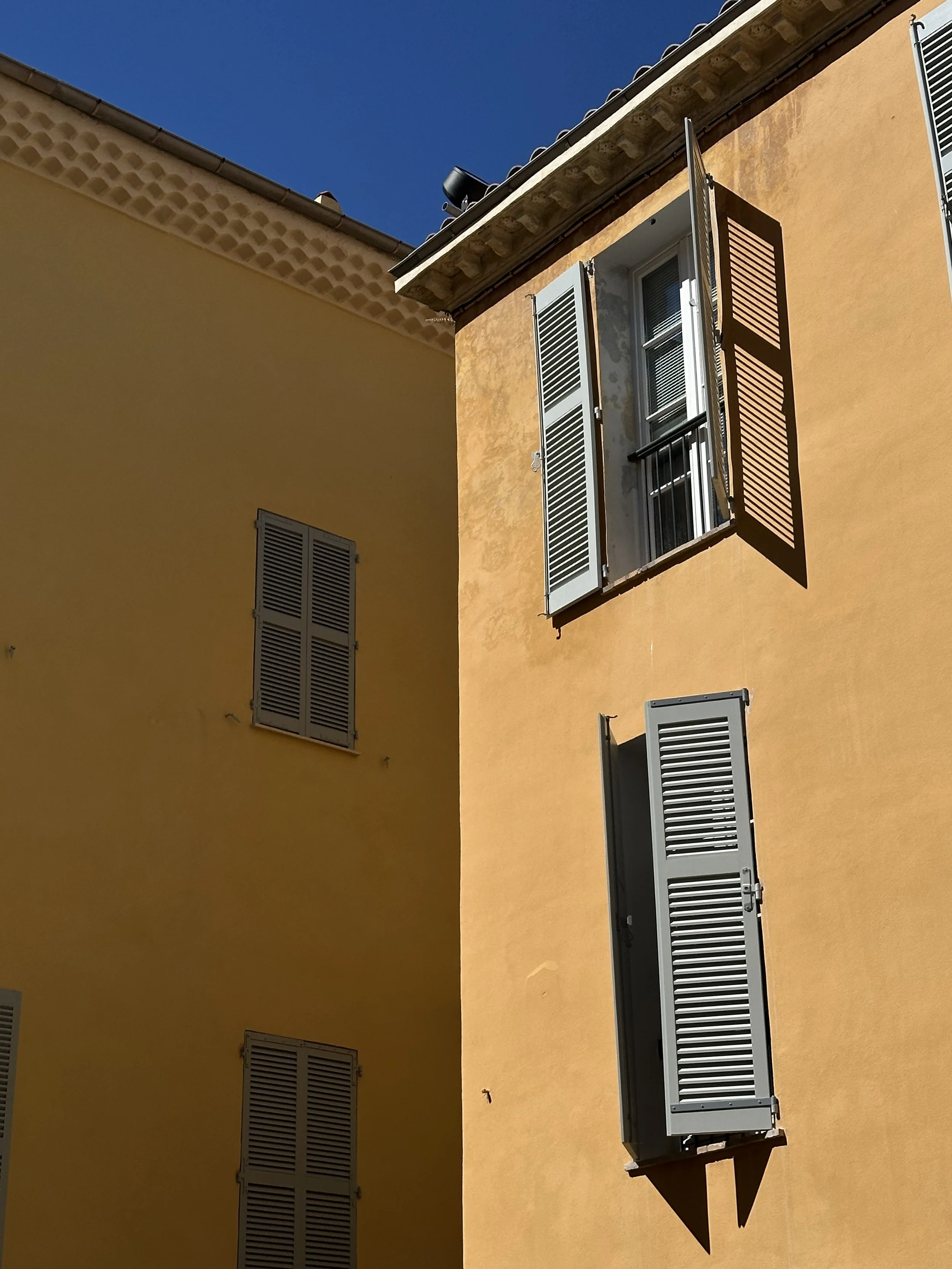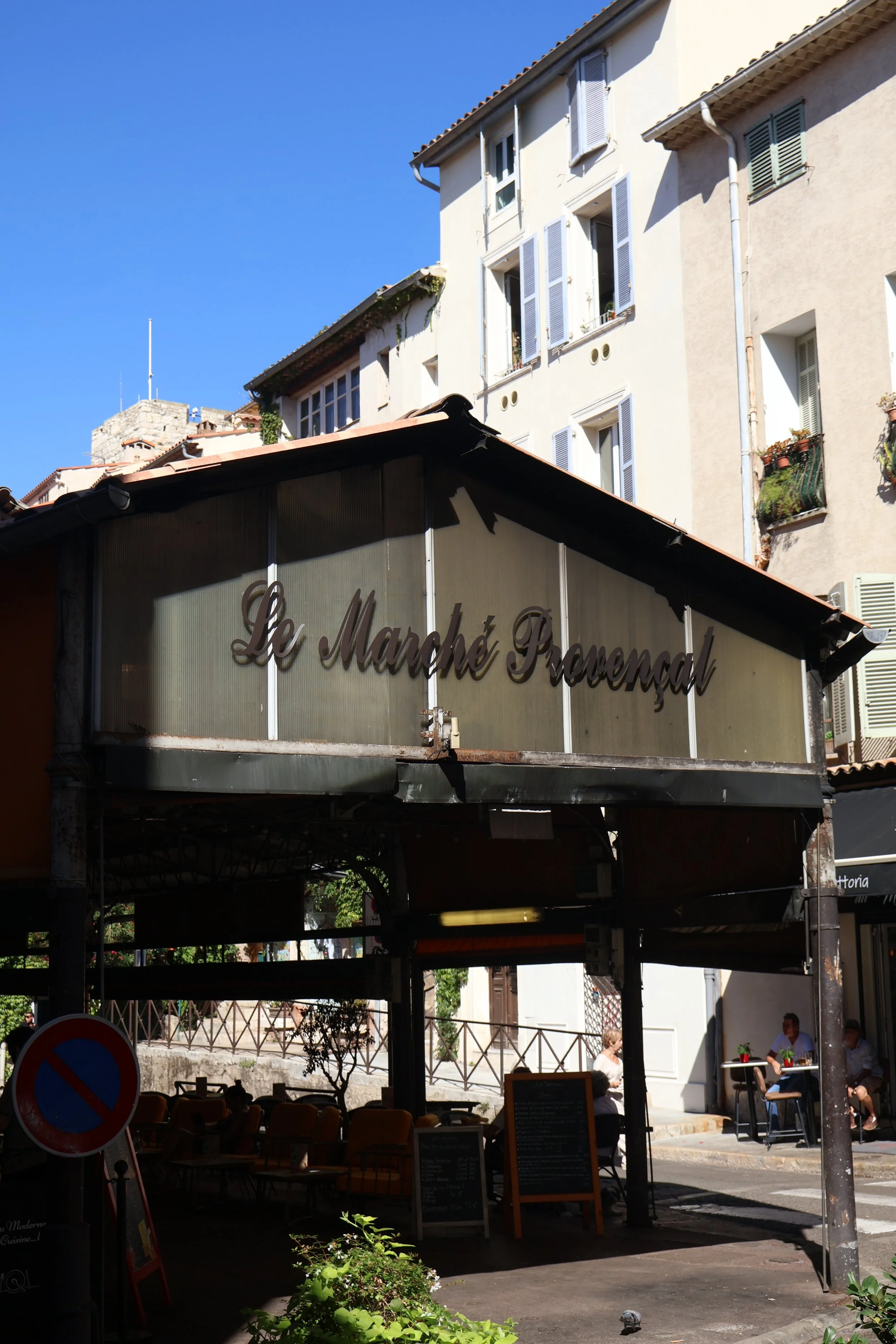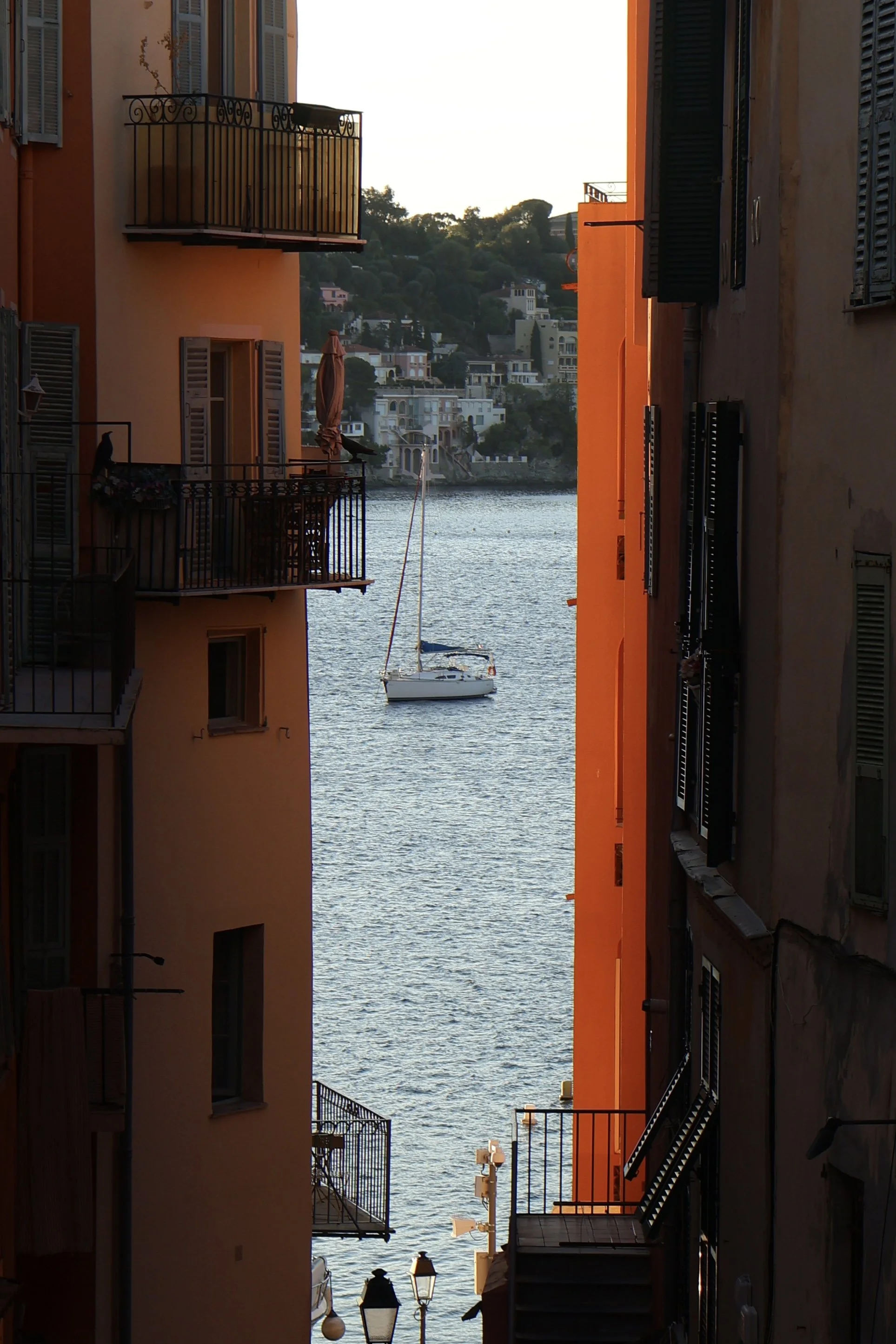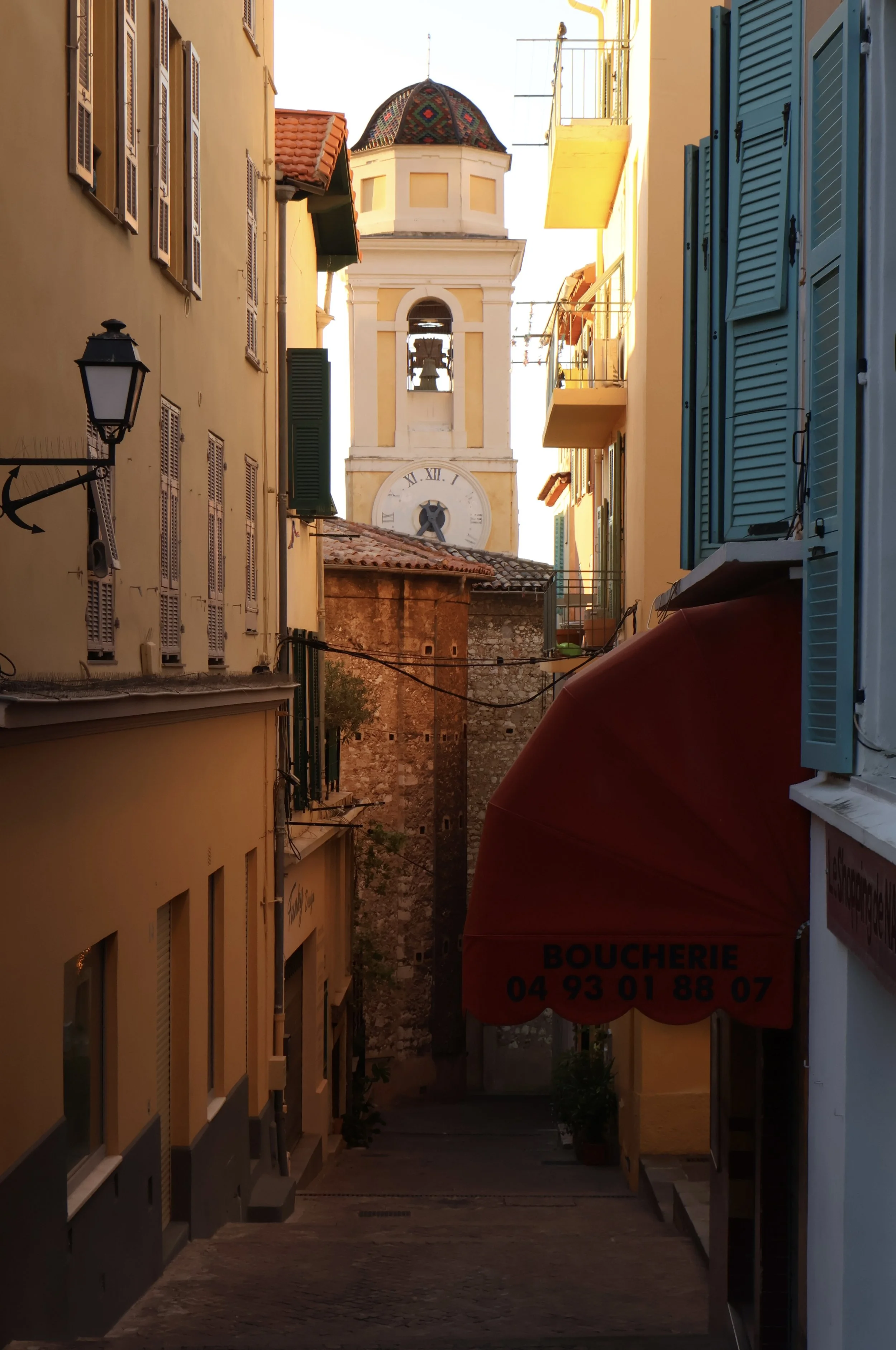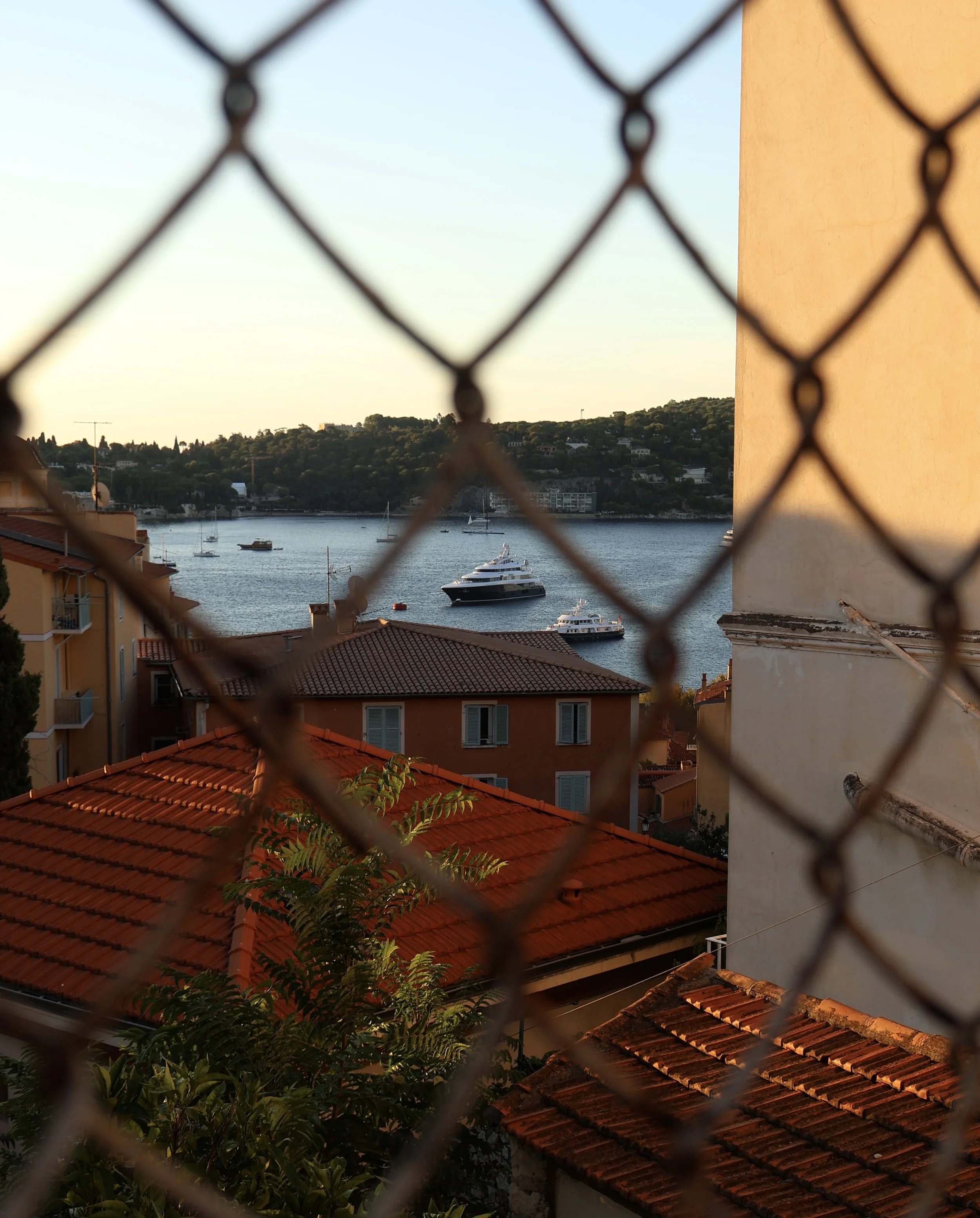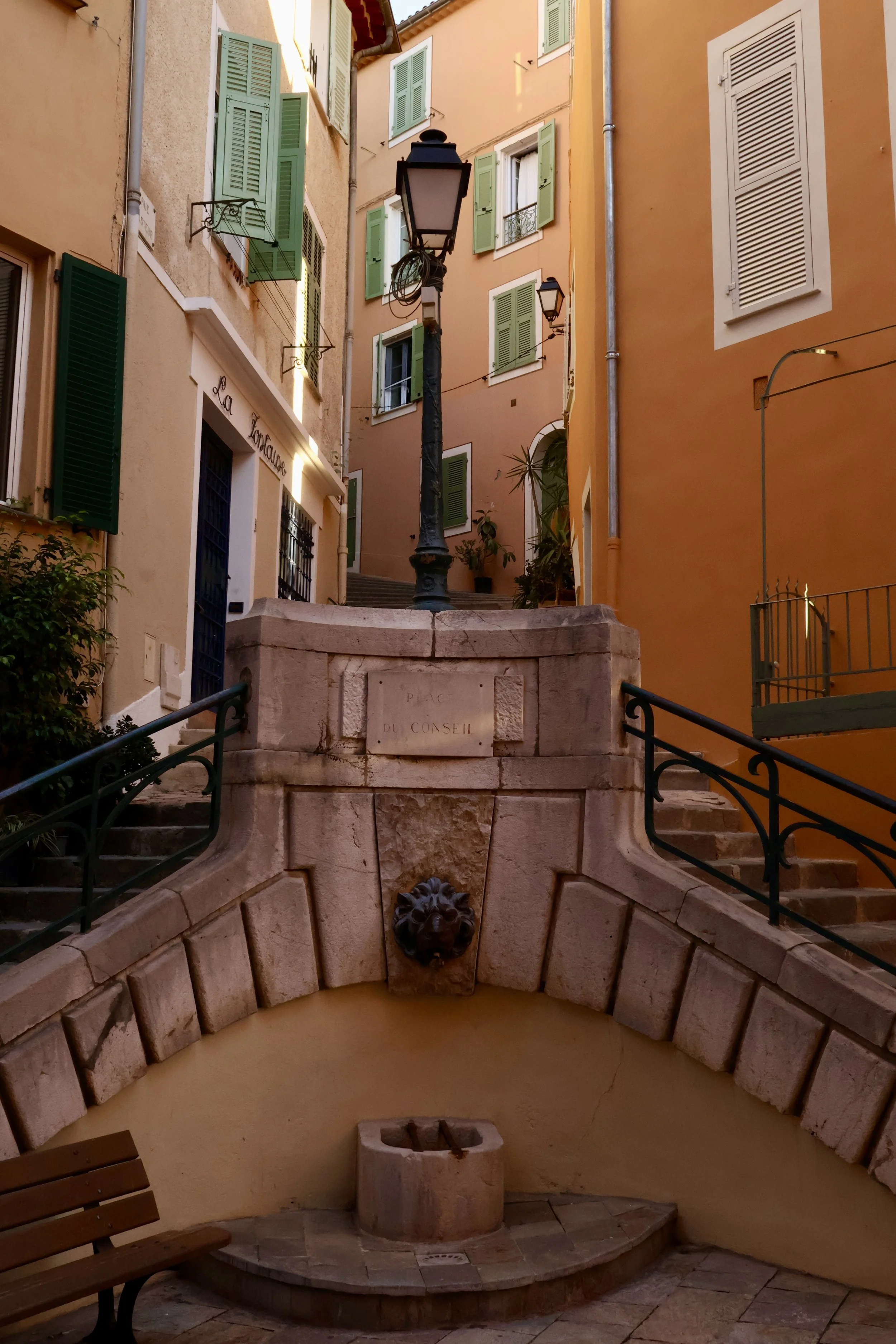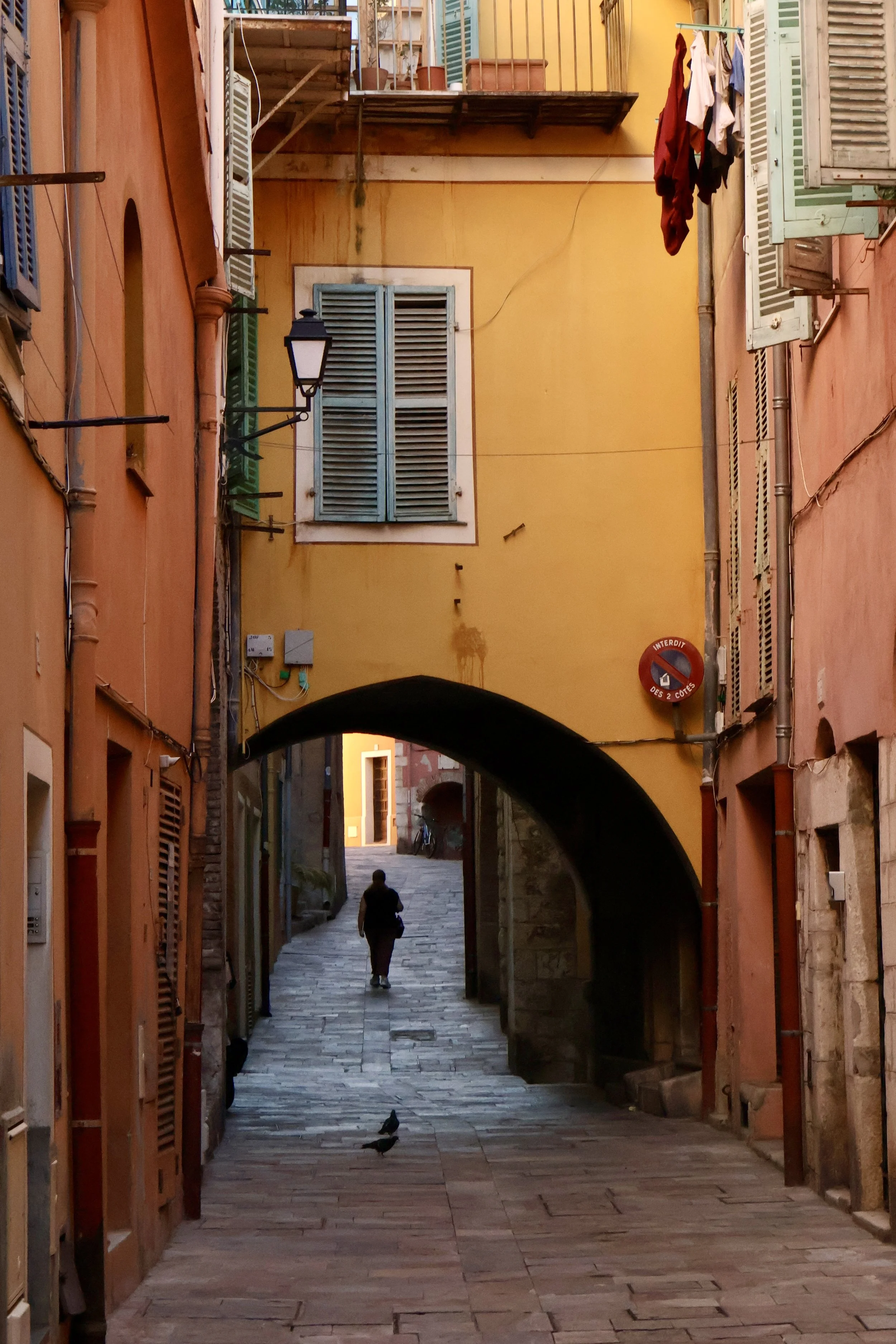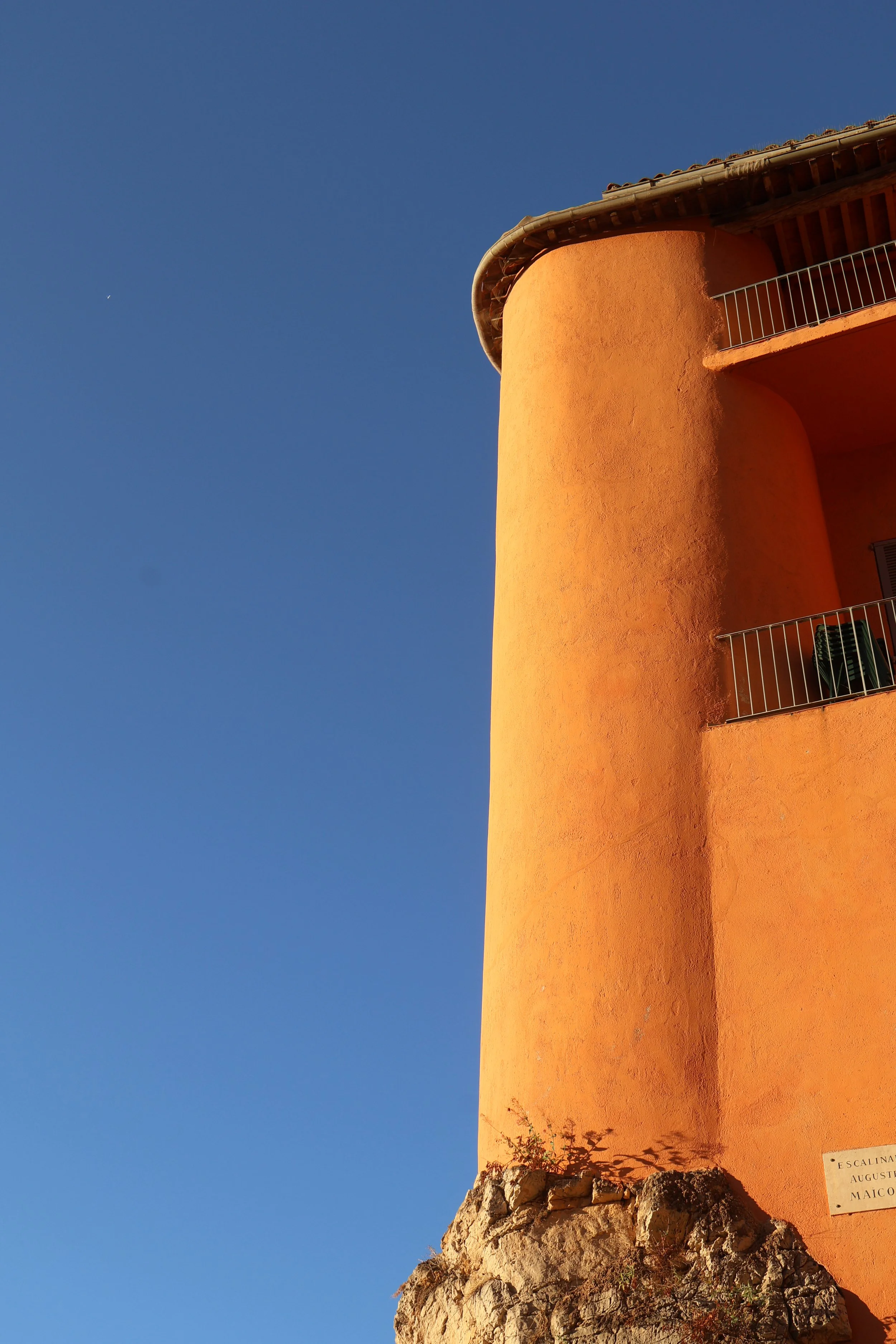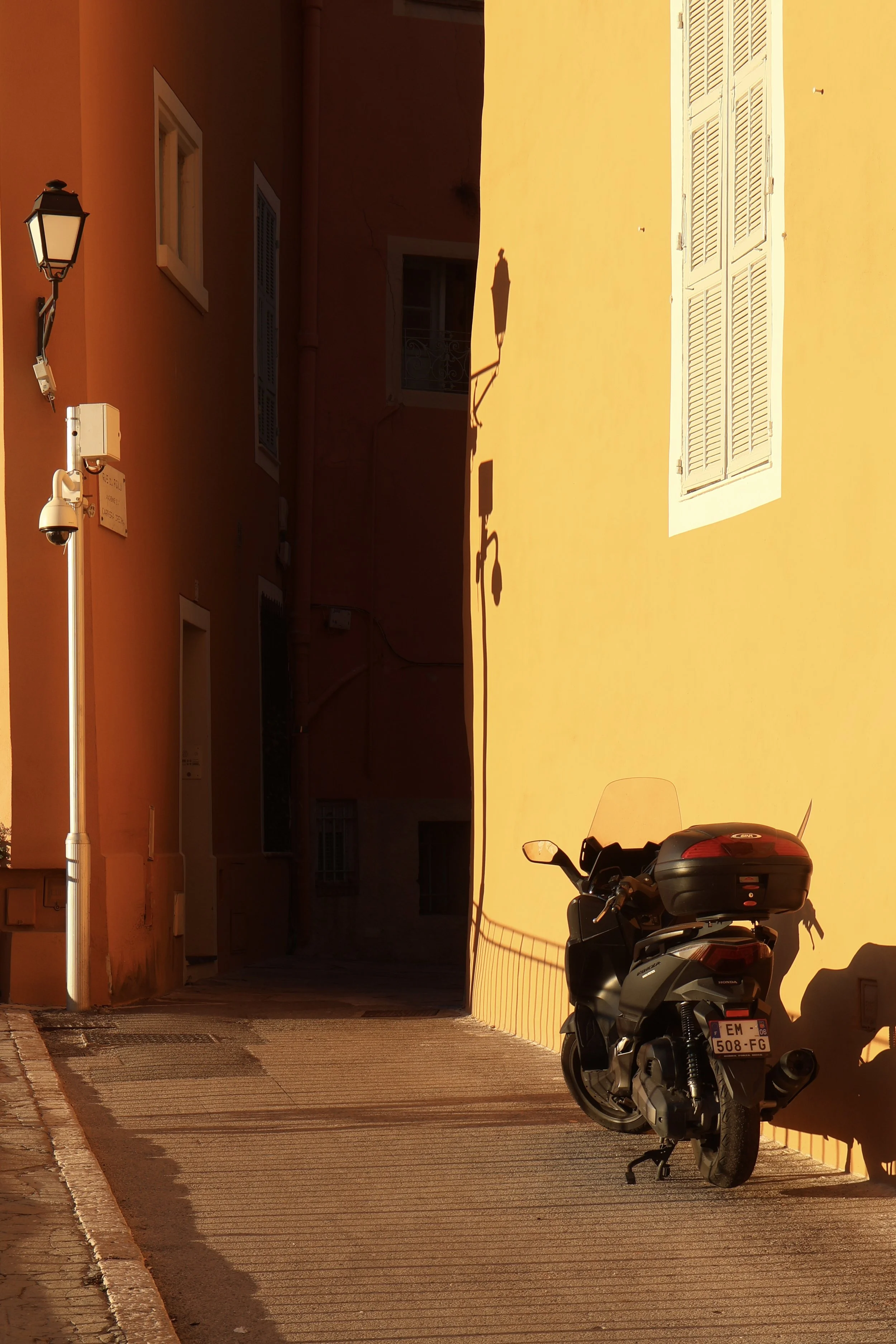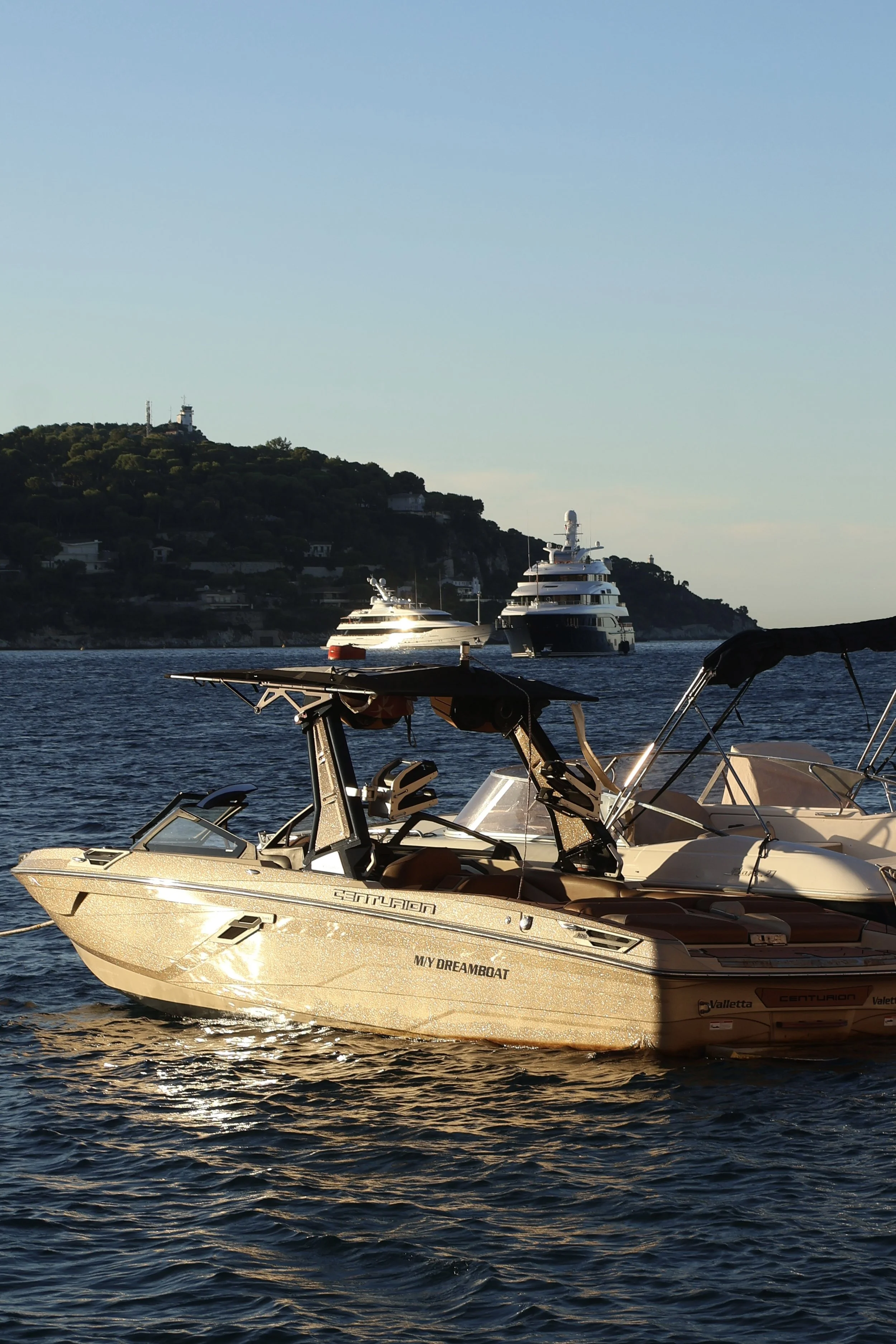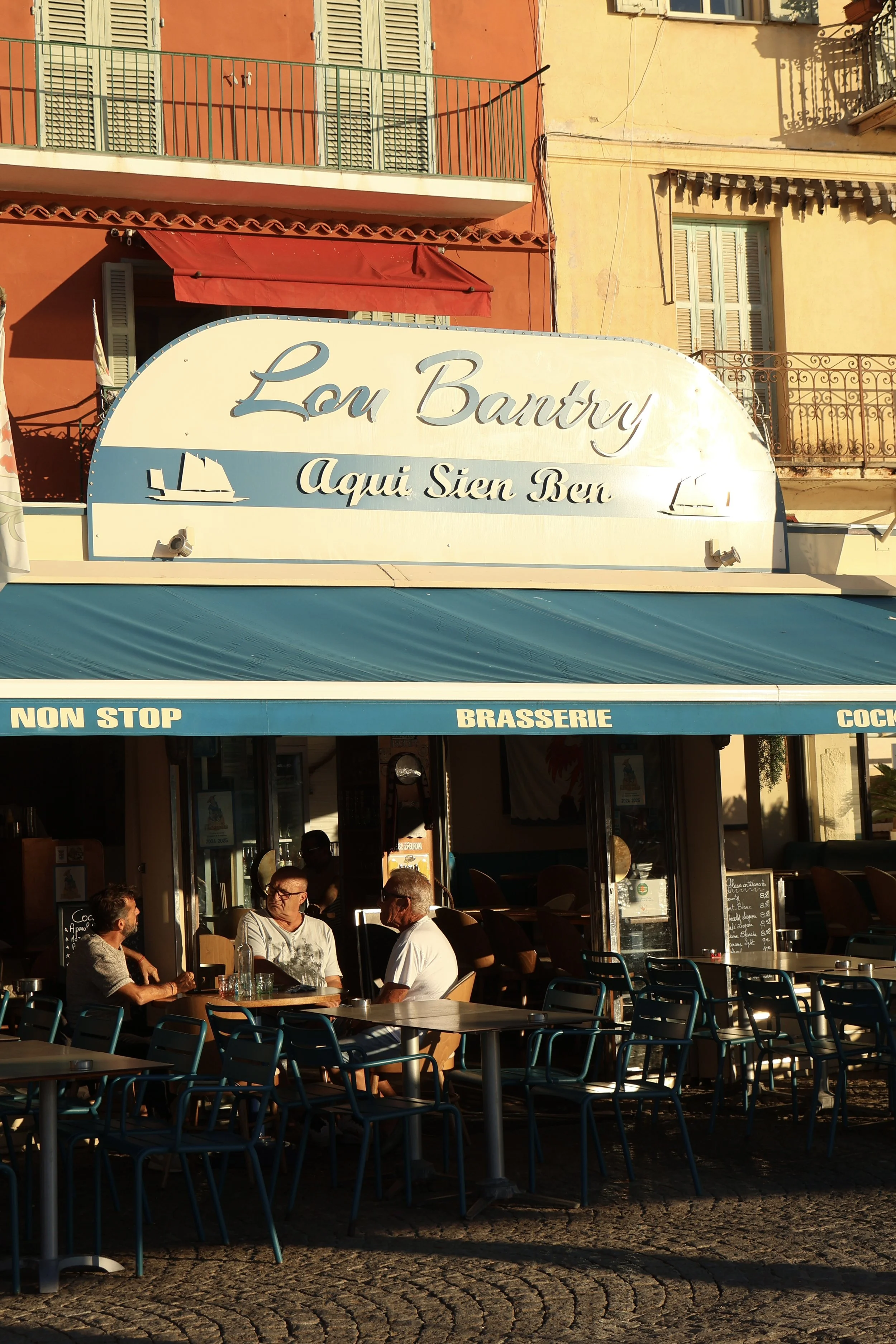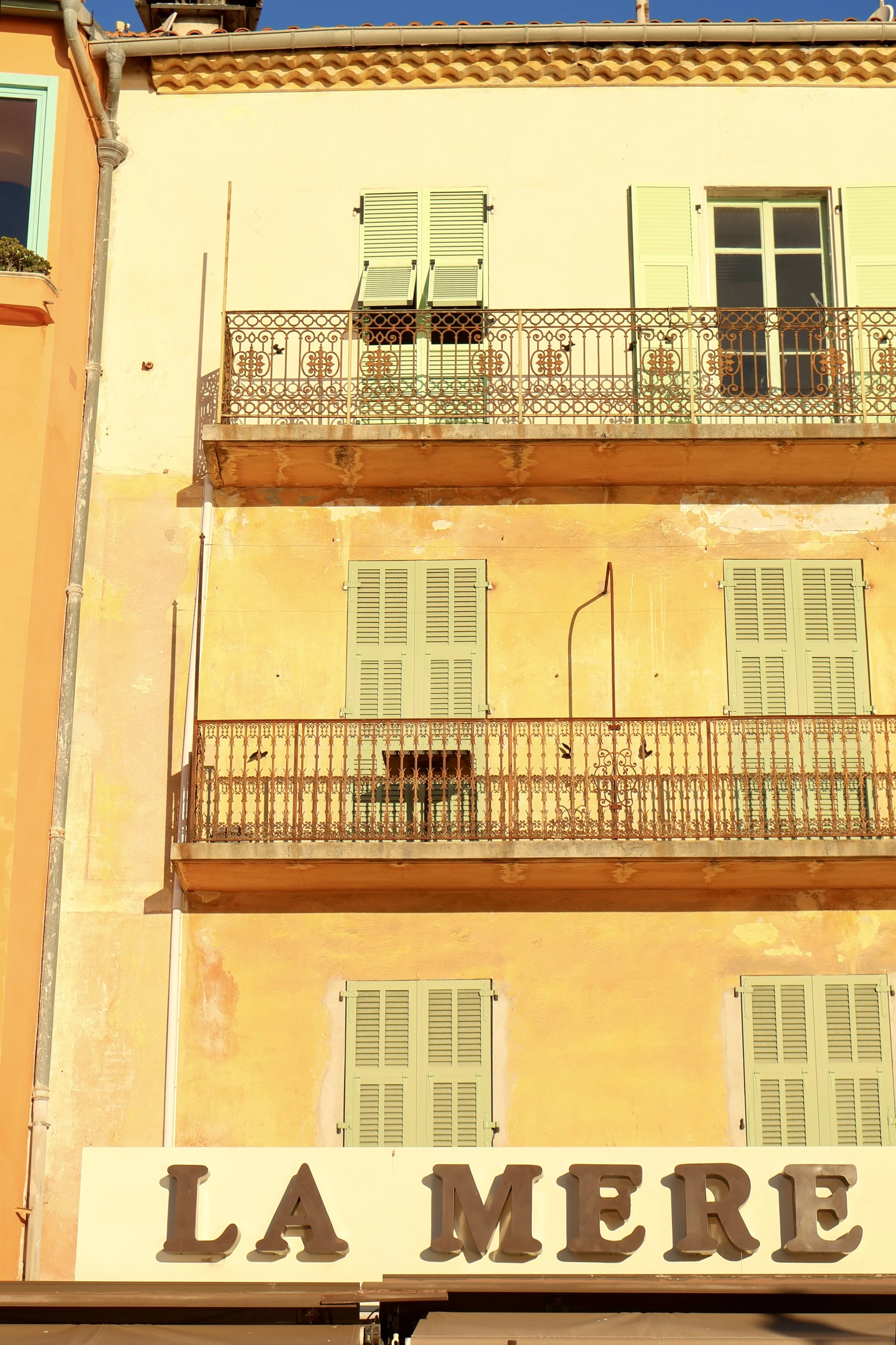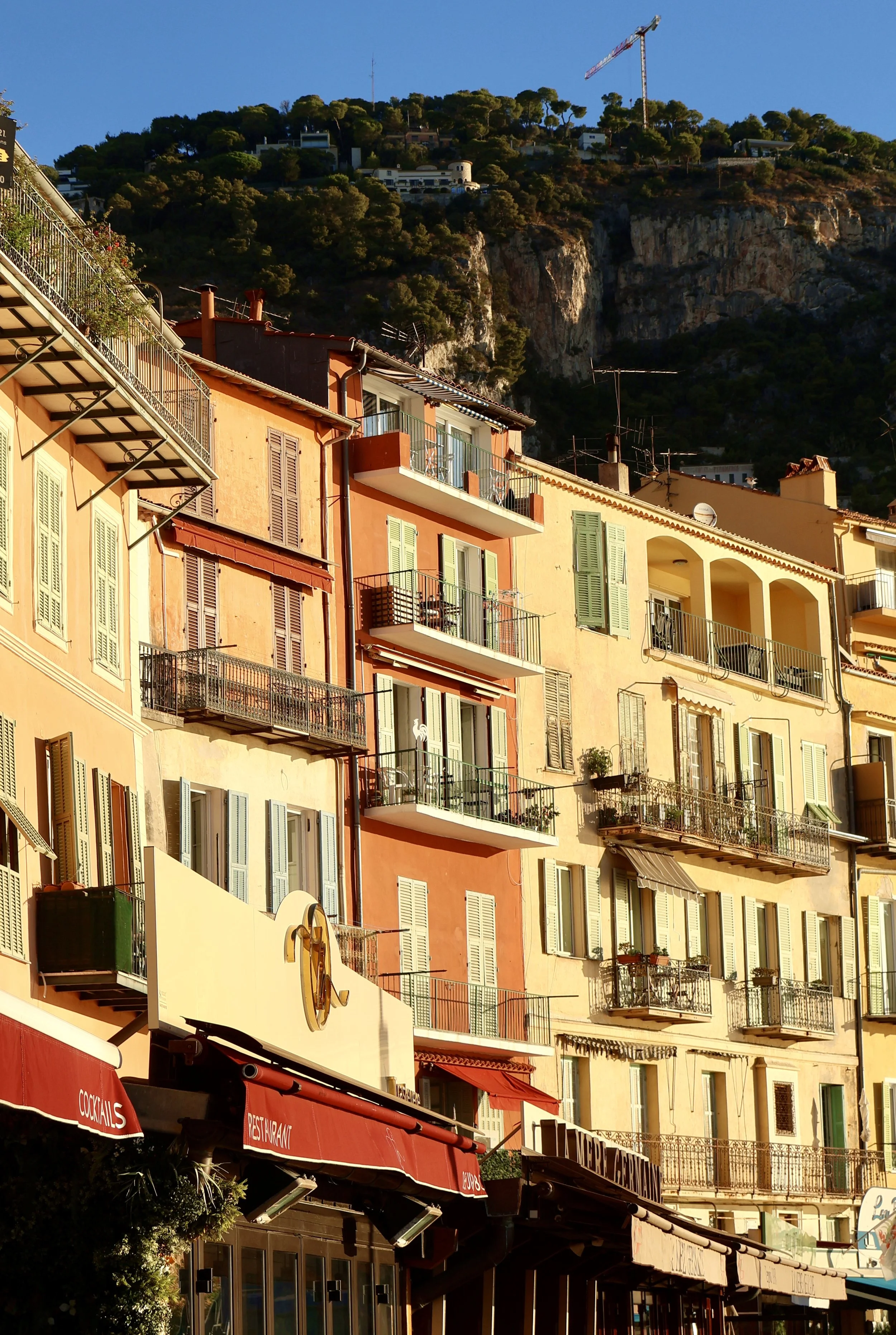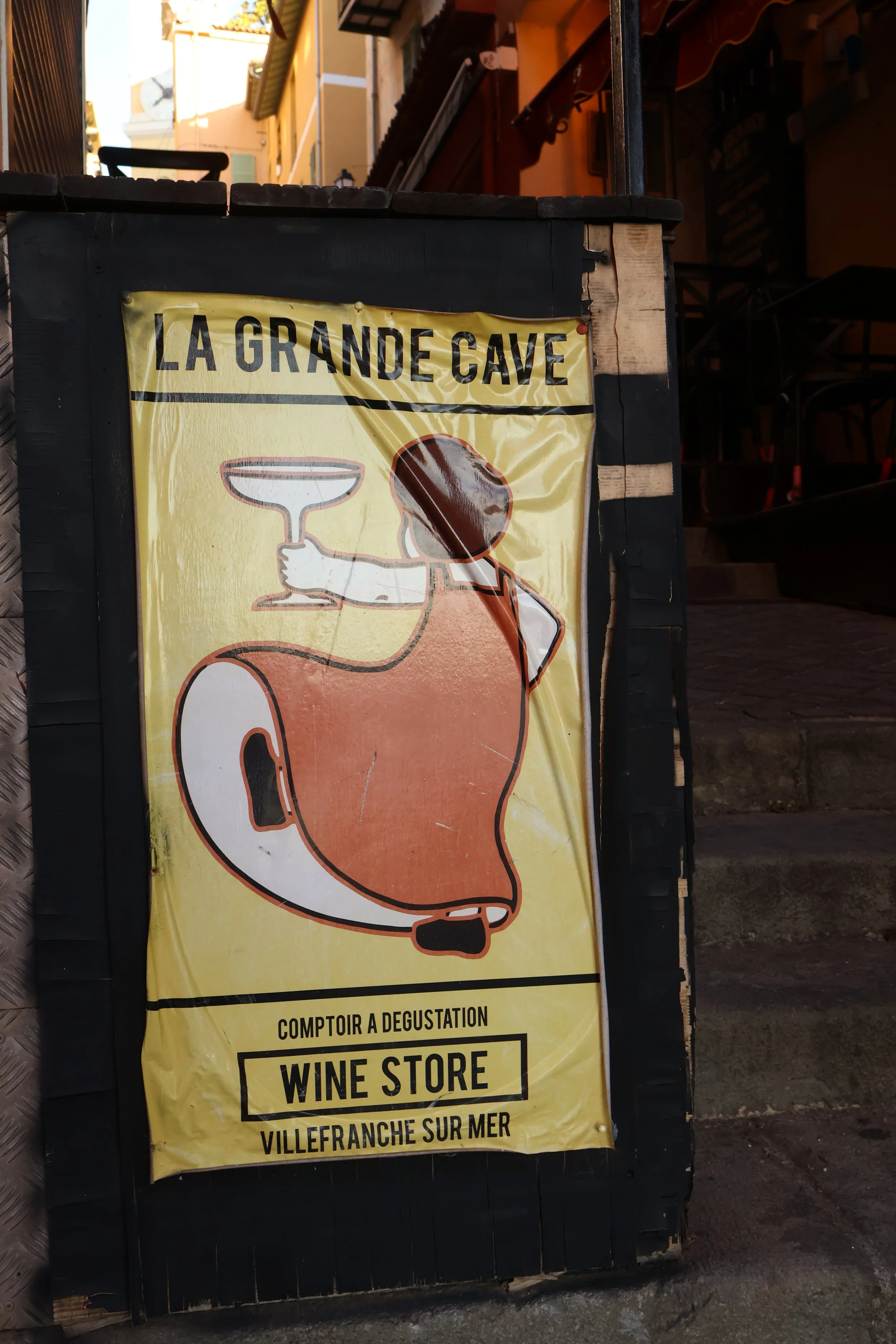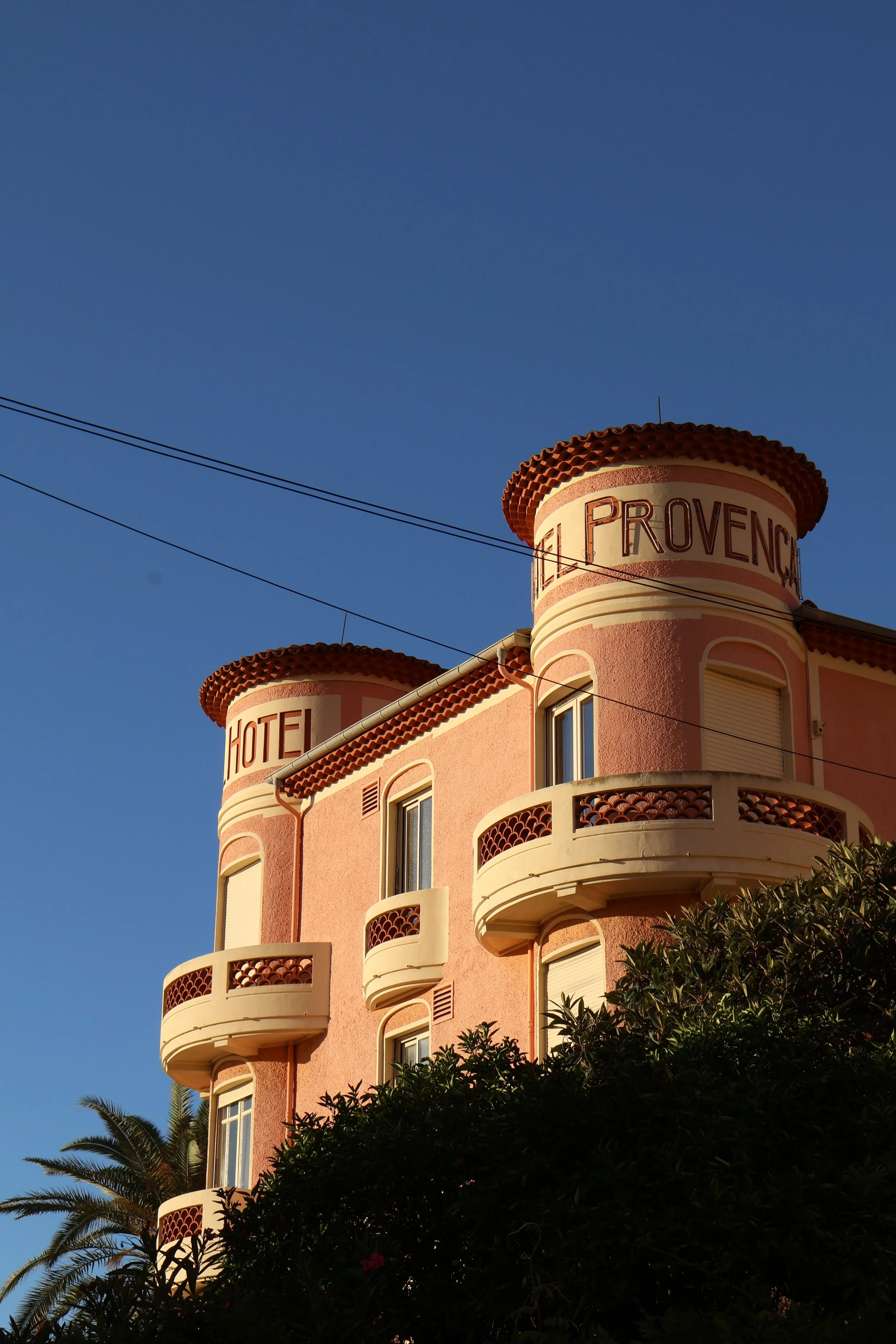Pandas and Poly Tunnels
Departing town and dodging Fiat Pandas making illegal, yet excruciatingly slow, turns. A BMW fails to stop at a stop sign and I am grateful to be on high alert. Cars sit double parked along the pavement, blocking a lane of traffic. It is apparently fine because the hazard lights are on.
The road opens and follows the coast, with Sicily’s industrial edges, present. Bland apartment blocks rise beside littered streets. You will not find this on TikTok.
Departing town and dodging Fiat Pandas making illegal, yet excruciatingly slow, turns. A BMW fails to stop at a stop sign and I am grateful to be on high alert. Cars sit double parked along the pavement, blocking a lane of traffic. However, it is apparently fine, because the hazard lights are on.
The road opens and follows the coast, with Sicily’s industrial edges, present. Bland apartment blocks rise beside littered streets. You will not find this on TikTok.
At last the autostrada arrives and we enter big sky country. The low December sun lights up the endless viaducts, each one giving a steady drumbeat under the tyres as we pass over the joins. The elevated view reveals mountains with the occasional farmhouse and its modern neighbours: wind farms, scattered across the hillsides.
The rolling hills of Southern Sicily, near Gela
The road narrows back to a single carriageway as we exit into bright light from a tunnel, carved beneath a hulking rock. Traffic slows behind a lorry loaded with oranges that cannot keep pace with Sicilian impatience. Drivers ignore the no overtaking signs and take their chances to continue at speed.
The landscape shifts again and we return to the coast. The sea is almost close enough to touch and the golden beaches look inviting to an Englishman, still in awe of twenty degrees in winter.
Another town arrives. Another cavalcade of Fiat Pandas. Another test of hazard perception.
The ubiquitous Fiat Panda
The pace of travel quickens and so does the scenery. Rolling hills appear that would not look out of place in the Peak District, if it were not for the expanses of vines now wrapped in plastic after the harvest. A tight bend later and it becomes a sea of poly tunnels protecting tomatoes, aubergines and peppers. Over the next crest it is orange groves, bright and ready for their moment on the market stalls.
Then, almost without warning, you glide through another coastal town and repeat the rhythm of the journey until Modica reveals itself with its steep ravine and beautiful hillside, basking in the golden December sun - a picture postcard scene that does make its way onto social media. The journey to reach it is something that should not be overlooked, because this is the real Sicily: a land of sudden change, of harsh contrasts and of pure life.
Modica, basking in the December sun
Eerie Erice
We’re driving through the outskirts of Trapani. A rain shower passes over as quickly as it came, a common theme for this part of the north western Sicilian coastline in late November. The windscreen wipers begin to slow and the sun shines bright, glistening off the road.
Monte Erice ahead of us, still shrouded in a heavy, thick cloud; brooding above.
We’re driving through the outskirts of Trapani. A rain shower passes over as quickly as it came, a common theme for this part of the north western Sicilian coastline in late November. The windscreen wipers begin to slow and the sun shines bright, glistening off the road.
Monte Erice ahead of us, still shrouded in a heavy, thick cloud; brooding above.
We begin the never-ending climbs of twists and turns up the mountain and I’m thankful for having hired a car with an automatic gearbox. We pass incredibly brave (or daft) cyclists making their way up 2,461 ft climb. The sun is glistening down on the city of Trapani, below and we have a clear view across to the Egadi Islands.
We begin to reach the summit and within a turn of a hairpin bend, the infamous cape of fog and mist that envelopes Erice in morning hits us. I make a bad quip about Erice being eerie as I pull into a car parking space by Porta Trapani that seems to have been marked out using a Smart Car as the optimal size of vehicle for its use.
We head up the steep hill from the car park in search of a sweet breakfast at the infamous Pasticceria Maria Grammatico. The slippery footpath like glass from the earlier downpour and horizon barely visible, we finally reach our target and some sugary, caffeine fuelled solitude.
It’s quiet when we enter and the feeling of being part of a noir tv drama series is only intensified by the wonderfully old fashioned decor of the pasticceria - wood panelled walls and a large collection of foreign currency and Catholic saints a backdrop to the large, sweeping counter that’s full of Sicilian treats.
We have our cappuccino and share a few bits from the counter - a still warm crema Genonvesi, a slice of Torta alle Amarene and piece of Crostata al Pistachio. Our eyes being bigger than our bellies, we wrap some away for ‘later’ and head out into the street, past the group of cyclists we’d passed earlier on the road up and into a now slightly clearer Erice.
The fog and mist lift to add even further sense of cinematography to an already picturesque town. We tread delicately on the slippery stone streets and reach the north-eastern edge of the town to be blown away by the dramatic landscape towards San Vito Lo Capo. Clouds suspended mid air and running quickly along the vista of the hills below and the sea beyond.
An incredible vista towards San Vito Lo Capo, from Erice
The eeriness of the climate and landscape only continuing as we walked around to Castello del Bálio where we stood above a blanket of swirling cloud, obscuring the view to the south and Marsala with just the odd glimpse of a field a couple of thousand feet beneath.
We continue walking back through the main heart of the town. Past a church with its doors open - a Virgin Mary statue illuminated in the doorway to welcome in visitors and along more winding street with dark semi derelict houses only adding to the mystique as the clouds and mist envelop the town once more. A cold dampness setting into the air.
The mist and noir sets in once more as we head back to our car
Erice was a truly remarkable place that surpassed all my expectations and if it hadn’t been for tiredness and a slight anxiety about the car being parked in a space that’d have been small for Noddy’s car, whilst being fully aware of many Italian’s inability to drive carefully, we would have stayed for longer. Alas, we left feeling grateful for the experience as we snaked our way back down Monte Erice.
I mercati di Palermo
Anthony Bourdain once said that the real heart of a place is found in its markets and that if you want to understand a culture, you should go where people shop and eat every day.
I have always agreed with him. Whenever I travel somewhere new, the market is my first stop. Spend twenty minutes wandering between the stalls and you get an instant sense of what is in season, what is local, and what you should be ordering later at dinner.
Anthony Bourdain once said that the real heart of a place is found in its markets and that if you want to understand a culture, you should go where people shop and eat every day.
I have always agreed with him. Whenever I travel somewhere new, the market is my first stop. Spend twenty minutes wandering between the stalls and you get an instant sense of what is in season, what is local, and what you should be ordering later at dinner.
Here in Palermo, returning to Mercato Capo and Ballaró has been every bit as exhilarating as I remembered from three years ago. Both run along narrow streets through the centre of the city, a jumble of makeshift stands and permanent shopfronts tucked beneath the golden stone apartments above.
It can feel like controlled disorder. Teenagers on mopeds inch their way down corridors of people. A car turns down the wrong lane and has to roll over a mountain of discarded cauliflower leaves to escape. Voices carry from every direction, thick with Sicilian dialect that hints at the island’s history with North Africa and the Middle East.
Music fills the gaps, especially at Ballaró where Italian pop blares from speakers and stallholders dance as they serve panelle con pane. One man I remembered instantly from our last trip, famed in my mind for turning meat with his bare hands, shouts a compliment at my wife with full theatrical hand gestures. Palermo knows how to put on a show.
It is a full sensory hit, equal parts spectacle and obstacle course. Yet this time, something is different. The heat has eased. It is late autumn now, a comfortable twenty rather than the humid mid thirties. And the crowds have thinned. Gone are the tourist groups drifting toward restaurants plastered with photos of lasagne. In their place are locals comparing prices, debating the best way to cook something, offering advice nobody asked for but everyone expects.
The produce has shifted too. Where figs, melons and aubergines once dominated, the stalls are now piled high with fennel, cauliflower, and the bright citrus that defines Sicilian cooking. Oranges everywhere.
With space to breathe, choosing what to buy feels more deliberate. Ideas come fast, matching the energy of the markets themselves. And despite the flood of possibilities, the decision more or less makes itself: swordfish, still local and still in season, paired with a crisp fennel and orange salad and finished with chopped pistachio from Bronte.
Simple. Obvious. Perfectly Sicilian.
Midnight in Sicily
Our plane begins its descent into Palermo. The curve of the bay glows on our left, a soft necklace of lights against the dark water, while the mountains stand brooding around the city.
Our plane begins its descent into Palermo. The curve of the bay glows on our left, a soft necklace of lights against the dark water, while the mountains stand brooding around the city.
We’re back in Sicily. The still warm November air hits us as we alight the plane - a small announcement that we’ve left behind the cold, wet, grey of England and arrived somewhere that shares more DNA with North Africa than with Rome.
We take a (dangerously) quick cab into the city, along the highway where the Judge Giovanni Falcone’s car was blown apart by La Cosa Nostra, in 1992. I recall to the last time I was here, reading Midnight in Sicily and learning how a place so beautiful could carry such deep scars. How the island is a complicated subversive web of criminality and the law and not always necessarily fitting the bad and good tags that you’d associate with either.
There’s something undeniably pleasing about driving into a city at night. Streets hushed and shrouded in darkness. A solitary window lit by the bluish light of a TV. A tiny orange ember hovering outside a doorway where someone smokes. Traffic lights flipping colours like painted brushstrokes. A bar glowing softly, making you wonder what stories are unfolding inside. Landmarks illuminated like canvases in a quiet gallery, stripped of the crowds that swarmed them only hours earlier. A couple stepping out of a warm trattoria into the night, still slipping on their jackets.
Then there’s the AirBnb arrival ritual. You step out of the taxi hoping you gave the driver the right address, because nothing looks the same as it did on Google Street View. Nothing ever does at night. There’s the familiar dance with key codes and lockboxes, followed by the discovery that the building has no lift and both 20kg suitcases need to be hauled up four flights of narrow, badly lit stairs.
But then you open the door, and the place does look like the photos. Relief washes in: you haven’t been conned, and you can finally stop. After hours of travelling, of queuing for security, of boarding by standing in stairwells for no logical reason, of buying that unnecessary airport pint because what else is there to do for forty minutes and you can finally exhale.
The trip starts now. After a night of sleep in a strange bed, tomorrow it will truly begin.
Nostalgia Without Memory
I’ve recently been watching Jimmy McGovern’s Accused on Netflix. This drama from the early 2010s sees each episode focus on a trial, at court. The crimes committed in each episode vary, but the consistent theme of each challenges the viewer’s perception of morality, versus the law. It’s an excellent show and is a bit of a who’s who of British acting - Sean Bean, Olivia Colman, Stephen Graham, Sheridan Smith and Peter Capaldi all feature, to name but a handful of household names. But that’s not the focus of this post.
I’ve recently been watching Jimmy McGovern’s Accused on Netflix. This drama from the early 2010s sees each episode focus on a trial, at court. The crimes committed in each episode vary, but the consistent theme of each challenges the viewer’s perception of morality, versus the law. It’s an excellent show and is a bit of a who’s who of British acting - Sean Bean, Olivia Colman, Stephen Graham, Sheridan Smith and Peter Capaldi all feature, to name but a handful of household names. But that’s not the focus of this post.
It dawned on me when watching Accused that Jimmy McGovern also wrote on the no longer with us Scouse soap, Brookside, which ran from 1982 to 2003. The latter part catching my attention - as in my mind, it had ended in the late 90s, or just on the turn of the millennium.
This got me thinking about our opinions of events. In this case, a tv show and perhaps how outdated and wrong we can be. How the mind plays tricks and how our memory isn’t as good as we probably think.
Sticking to the Brookside theme I began to realise I could remember little about it, so why was I so surprised that it ended so ‘late’? It was always on in our house growing up. I remember the opening credits, with shots of Liverpool and then drawing to a close (on the close, ironically) with a final dead shot of the Brookside cul-de-sac; one which reminds me of a street on the estate next to where I grew up.
I can recall some of the characters. Jimmy Corkhill, who seemed to be the local hard man and his daughter (can’t remember her name), played by Claire Sweeney. Simbad, a greying fat middle aged man. With the only other people I can recall being ‘Tinhead’, a young man who for what I recall got progressively more involved in crime - culminating in a shoot-out with a police helicopter at a petrol station and his girlfriend, whose character name I’ve also forgot, played by Jennifer Ellison.
That’s pretty much it… Something I apparently was present in viewing regularly up to the age of around 13.
If you’d have asked my opinion on Brookside before I was thrown into this self-imposed memory exercise, I’d have said it was a good, gritty show that had a more realistic edge than other soaps. But, the last few paragraphs prove I don’t really know anything about it, so how can I come to this conclusion?
Why are we so overconfident about things that we can’t actually remember? Is nostalgia simply misled feelings that we’ve mislabelled as facts? Does it even matter?
Maybe nostalgia isn’t about remembering correctly. Maybe it’s about remembering how something made you feel, even if the details have slipped away.
The Pink of Passeggiare
If you’ve been wondering about the splash of pink across Passeggiare, here’s the story.
The inspiration comes straight from Italy’s most iconic newspaper: La Gazzetta dello Sport. I didn’t want this to look like just another blog — the choice of pink was deliberate, a nod to something uniquely, unmistakably Italian.
If you’ve been wondering about the splash of pink across Passeggiare, here’s the story.
The inspiration comes straight from Italy’s most iconic newspaper: La Gazzetta dello Sport. I didn’t want this to look like just another blog — the choice of pink was deliberate, a nod to something uniquely, unmistakably Italian.
My first memories of La Gazzetta go back to childhood, catching Football Italia on Channel 4. For many of us of a certain age in the UK, it was a cult show — Saturday mornings meant James Richardson in some sunlit piazza, tiny espresso at his side, holding up the latest Gazzetta to the camera. He’d translate the bold headline, sprinkle in some humour, and suddenly Italian football felt exotic, witty, and a little bit glamorous.
It was also my first memory of watching football outside of the UK — a window onto a different style, a different culture. In fact, Football Italia was probably my first real introduction to Italy (unless spag bol counts!). That early spark grew into an obsession in adulthood, and one of the gateways to why I’m even writing Passeggiare today. It helped form a curiosity that isn’t just about places, but about the finer details of life that reveal something deeper (such as knowing which tifosi and curve make up the boot).
James Richardson, doing his thing
Since then, whenever I’ve gone to Italy on holiday, it’s become a ritual: pick up a copy of La Gazzetta dello Sport, find a good piazza, and strike a James Richardson–style pose. A silly little tradition, maybe, but one that makes me smile every time. These days, after years of Italian lessons, I can actually read chunks of the paper — though I’ll admit, it’s still more prop than page-turner.
One of many photos of your author reliving the Football Italia dream
So yes, the pink of Passeggiare isn’t random. It’s a small tribute to those early memories, and to the quirks that drew me toward Italy and made me realise there’s a bigger, more colourful, more interesting world beyond these shores. And if it also gives me an excuse to keep striking the odd James Richardson–style piazza pose, well… I’ll happily take it.
The Last of the Greasy Spoons
There’s something about a full English. I don’t eat them often — the last one I can remember was back in June 2024 — but every so often the craving strikes. This time, it led me to The Moor Cafe in Sheffield city centre, a place I’d never tried before.
Like many cities, Sheffield has fewer and fewer of these traditional cafés — the no-frills kind that once lined every high street. They’re being nudged out by coffee shops and bakeries with hipster decor and steeper price tags. I enjoy those too, but it would be a real shame if we lost the honest, slightly worn cafés along the way. They might trade in nostalgia, but there’s a certain charm in their scuffed tables and straight-up food. Everyone’s welcome, and the meal won’t empty your wallet.
There’s something about a full English. I don’t eat them often — the last one I can remember was back in June 2024 — but every so often the craving strikes. This time, it led me to the Moor Café in Sheffield city centre, a place I’d never tried before.
Like many cities, Sheffield has fewer and fewer of these traditional cafés — the no-frills kind that once lined every high street. They’re being nudged out by coffee shops and bakeries with hipster decor and steeper price tags. I enjoy those too, but it would be a real shame if we lost the honest, slightly worn cafés along the way. They might trade in nostalgia, but there’s a certain charm in their scuffed tables and straight-up food. Everyone’s welcome, and the meal won’t empty your wallet.
On a quiet Saturday morning, I step into Moor Café and find just a handful of solo diners dotted about. The owner greets me warmly and shows me to a table at the back, with a perfect view of the street outside. The walls are a collage of lived-in character: slightly psychedelic horse prints that seem borrowed from another decade, a jubilee plate of Queen Elizabeth II, a scattering of fridge magnets, and even a half-and-half Sheffield United / Wrexham scarf (as a Blade, this infuriated me a bit). It’s cluttered in the best possible way — the kind of place where you feel at home instantly.
I order a cup of tea (never coffee with a fry-up) and go for Set Breakfast 3: sausage, bacon, fried egg, beans, and black pudding, with two slices of toast on the side. All this for £8.20.
The breakfast arrives exactly as I’d hoped. No faux fancy plates, no garnish of micro herbs, no ramekin for the beans. Just cheap sliced bread toasted. Sourdough has its place, but not here. The beans are hot (take note, Wetherspoons), the bacon thick and nicely cooked, the black pudding decent. An egg that is maybe a touch overdone and cooked in a mould for neatness, but I’ve seen far worse. The sausage won’t win any awards, nor was the pig in question reared on a diet of açai berries and mindfulness — but that’s exactly the point .The simplicity is what makes a full English such a comforting meal.
Taking advice from Alan Partridge and using the sausage as a breakwater
As I sat there, tea in hand, I made a vow to come to places like this more often. Britain doesn’t have a huge amount of traditional food culture, but this — these warm, unfussy cafés, turning out good food for a fair price — feels like one of the few we can truly call our own. If they disappear, it won’t just be cafés we lose, but a piece of everyday culture worth keeping alive.
Captain Teebs
Tony Soprano once said a nursing home was basically like a hotel in Cap d’Antibes. We put that line to the test with a day split between Cannes and Antibes — one felt like a film set, the other like a place you’d actually want to stay.
Who is Captain Teebs? Fans of The Sopranos might recall Tony arguing with his mum, Livia, about the Green Grove nursing home. Tony insists it’s a “retirement community,” while Livia stubbornly calls it a nursing home. In frustration, Tony badly paraphrases Dr Melfi, who claims places like Green Grove are “basically like a hotel in Cap d’Antibes.” Tony instead says “it’s more like a hotel at Captain Teebs!”.
That odd little line stuck with me — and it’s what came to mind when we found ourselves in that very corner of the Riviera. So, consider this post a slightly convoluted homage to Captain Teebs.
Cannes
We spent a morning in Cannes and, if I’m honest, I found it underwhelming. The wealth is impossible to miss — rows of designer shops, gleaming hotels, and marinas stuffed with yachts, all basking in the afterglow of the annual film festival.
But having just spent three days in Nice, Cannes felt bland. We walked for a while, then stopped for a coffee at an expensive beach bar. A bit too comfortable in the setting, we followed it up with a spritz each — €20 apiece. Nice enough, but a regretful cost. The place was full of apparent models, retired CEOs, and a bloke who could have stepped straight out of a Netflix documentary on an Albanian mafia fugitive.
We thought about heading up to the old town, but in the end, the place never clicked. So we bailed and caught the train down the coast.
Antibes
Almost immediately, Antibes felt different. Buzzier, warmer, more interesting. We strolled the old streets (just missing the market as it was packing up), then slid into full tourist mode and ordered croque monsieur/madame for lunch at a little café in the sun. Basic, yes — but exactly what we wanted.
The real highlight was the Picasso Museum, housed in the seaside Château Grimaldi. For six months in 1946, Picasso lived and worked here, and since 1966 it has displayed his art in the very rooms where he painted. I’ve always liked his work, and spending an hour in that space was the perfect balance of culture and atmosphere.
Yes, Antibes is touristy, but it gave me that rare instinctive feeling of a place you want to come back to. Cannes I could take or leave; Antibes I’d happily explore again in more depth.
If travel teaches anything, it’s to trust those gut reactions. And mine say I’d happily return to Antibes, suitcase in hand, to see if Captain Teebs has a room waiting.
Simple Pleasures
The warm morning sun is just rising above Saint-Jean Cap-Ferrat and is starting to glisten on the azure Mediterranean Sea. The bay, littered with yachts and fishing boats, looks perfectly still at this hour. With very few people around, I always find it the best time to take photographs, uninterrupted.
The narrow red and yellow hued streets of Villefranche-sur-Mer cling to the steep slopes heading down to the bay, providing a perfect setting for capturing some archetypal scenes of a town on the French Riviera.
The warm morning sun is just rising above Saint-Jean Cap-Ferrat and is starting to glisten on the azure Mediterranean Sea. The bay, littered with yachts and fishing boats, looks perfectly still at this hour. With very few people around, I always find it the best time to take photographs, uninterrupted.
The narrow red and yellow hued streets of Villefranche-sur-Mer cling to the steep slopes heading down to the bay, providing a perfect setting for capturing some archetypal scenes of a town on the French Riviera.
A calmness hangs in the air, and a sense of possibility for the day ahead lingers, along with the unmistakable aroma of baked goods coming from each boulangerie that is passed.
The church bells ring, and there’s a slight hubbub of activity down by the fishing boats. A small gang of locals, clutching café au lait, spectates from a nearby brasserie.
I finish my little circuit of the town and head back up the hill to our pink hotel, which wouldn’t look out of place in a Wes Anderson film, and feel grateful to have started the day with such simple pleasures.
My favourite place in Kraków
I am lucky enough to have visited Kraków many times now. My wife is Polish and came to university here and whilst her family are not from the city, it’s still not a million miles away and is regularly a port of call for when we visit.
I am lucky enough to have visited Kraków many times now. My wife is Polish and came to university here and whilst her family are not from the city, it’s still not a million miles away and is regularly a port of call for when we visit.
Kraków is, of course, a well-trodden destination on the European city break path. Immediately obvious when walking around the old town with the array of nationalities and different languages ringing in the air. The English stag dos singing England songs, whilst ironically choosing to drink in an ‘Irish’ bar. Italian families passing, where you catch the inevitable topic of conversation being about eating. The small group of elderly Spanish decked out in walking gear, looking unfazed by the 30 degree heat, all whilst wearing a down jacket from Decathlon.
Adam Mickiewicz statue in Rynek Głowny
Kraków has a lot to offer. Much is known and written about its culture. It has one of the world’s oldest universities (Jagielllonia), has been home to numerous Nobel laureates, is full of multiple world class museums and collections of fine arts. It has a castle. The old town square is allegedly the largest open public space in Europe, surrounded by impressive renaissance architecture, such as the Cloth Hall, St Mary’s Basilica and the Town Hall tower. The list goes on…
But it’s not these things that I enjoy the most in Kraków. Nor is it Kazimierz, the Jewish Quarter, with its excellent restaurants & bars and patchwork of historical buildings.
St. Mary’s Basilica
My favourite place in Kraków is Stary Kleparz, an old market. To the north of the old town and a few minutes walk from the main train station. The market is set in a square and is an outdoor covered market with everything you really could wish for, in terms of day-to-day living.
Leading into the square, you’re greeted by street vendors selling flowers, by the side of the road, for a very good price and local producers selling whatever fruit is in season from baskets. My most recent visit meant that this was local cherries, raspberries, blueberries, bilberries and strawberries. All are of exceptional quality with the cherries and bilberries in particular being hard to beat anywhere.
Queuing for fruit & veg, Stary Kleparz
Stepping inside the covered market, a fairly modern collection of structures, you follow the narrow passageways around the network of stalls. There’s small brick structures with glazed frontages which essentially act as mini shops lining the route, with a more open, outdoor covered market type set up in the middle. This is where the majority of the fruit and veg vendors can be found.
Walking around is both nostalgic and new. There’s a stall selling discounted packets of confectionery items, with handwritten price labels shoved alongside the products. A vendor selling detergent “from Germany” (a hallmark of quality!?) and sellers with piles of kitchenware strewn across their stall, with all the utensils needed to make the perfect pierogi at home. Of course, the real stars of the show are the food vendors. The fruit and veg stalls with mountains of ridiculously large brocolli and cabbage. Clusters of asparagus of many varieties. Massive, ripe, nobbly tomatoes that actually have some flavour and don’t resemble biting into a Red Nose at Comic Relief (not that I have…). A vendor that only sells kiełbasa. Fishmongers. Butchers. A cheese seller. You name it, it’s here!
A confectionery stall that reminded me very much of the old school indoor markets at home
It reminds me in parts of traipsing around Rotherham or Castle markets, as a child. The sense of excitement, mixed with a bit of apprehension at the ensuing organised chaos.
Perhaps the best thing about Stary Kleparz, however is the ‘new’. This isn’t just a place to be nostalgic over. It is a place of today and of tomorrow. Modern, trendy vendors sit alongside the stall your grandma might go to for some tea bags. There’s multiple natural wine shops and bars. Greek delis. A Spanish deli. A focacceria, selling very good sandwiches. A couple of Italian delis and an oyster bar, to name but a few.
Focaccia sandwiches from Fokarnia
I think it’s this mix of vendors. All alongside each other. All thriving and all attracting different demographics that make this such a great place to visit. There’s no pretentiousness whatsoever. It’s purely a marketplace for quality sellers. All in it together.
Sit under a vine covered terrace, eating an oyster whilst enjoying a skin contact orange wine from a small batch vineyard one minute, the next, be haggling over the price of a kilo of carrots.
Wine on the vine covered terrace of Kawa i Wino
There are some similar examples in the UK. Borough Market being an obvious one. But it is such a tourist trap that if you can cope with the cattle-like conditions of navigating around, you’re then ripped off with eye-watering prices for often mediocre products. It’s the perfect example of a market being gentrified and not, what a market should be – egalitarian and convivial. Stary Kleparz, for now at least, is both and it seems to be striking the balance perfectly well.
It’s a good analogy really for the best bits of modern Poland. Forward looking with a renewed confidence, all whilst having a close tie to tradition. Aside from the obvious links I now have with this country, it’s maybe the reason why I most enjoy spending time here and why Stary Kleparz is my top tip to anyone visiting Kraków and wishing to get a ‘proper’ experience.
Point & Shoot
As a child, family holidays were punctuated with a questioning of why my mum was taking a long time trying to take a photograph of a Greek Orthodox priest walking down some stairs, or waiting for the right moment, with no people in frame, to photograph a sweeping white sandy beach.
As a child, family holidays were punctuated with a questioning of why my mum was taking a long time trying to take a photograph of a Greek Orthodox priest walking down some stairs, or waiting for the right moment, with no people in frame, to photograph a sweeping white sandy beach.
But, as I got older, I began to appreciate the art of photography and the process of being creative. Good quality camera phones came along during my early 20s, along with Instagram and it suddenly became a social necessity to take a photo of your dinner, or that visit to the pub, just to fit in amongst your peers. Around this time, I bought myself an entry-level Canon DSLR camera, to try and capture more ‘professional’ looking shots, but never really fully got into it, thanks to the convenience of having an iPhone. The bulky, heavy DSLR that prevented those moments of instant gratitude wasn’t usually an attractive proposition and so, I ultimately ended up selling it.
I hit 30, just a few weeks after lockdown and the unusual 12-18 months which followed for all, provided a time to reflect and see the world differently, despite all the negative downsides of having to exist this way.
During this period of time, I saw many others shifting to film photography and in particular, cheap point-and-shoot cameras became popular and cool.
Once lockdown was over, I asked my mum if she had any old cameras I could use, as I was keen to try out this relatively spartan way of photographing and being a fan of the inconsistent and retro aesthetic that it could produce.
I took a Ricoh camera that my mum had given me to my first post-lockdown holiday abroad with my now wife, in Puglia, Italy. The results were mixed, but the thrill was and is, a constant.
My first foray using a point-and-shoot. Bari Vecchia, September 2021
Firstly and most obviously, being handicapped by not knowing what the photograph would turn out like for days/weeks to come, provided a fresh contrast from digital. Furthermore, working with a point and shoot meant I could only influence the outcome of the photo by my eye; for how it should be composed, understanding of light and how these all interacted with whichever film I chose to use in the camera.
All three are things I am still trying to understand and master. Personally, this is where the pleasure lies with using a point-and-shoot. It’s not really something that you can ever master, given its limitations, but it’s these limitations which add character, life and a uniqueness that would be hard to find with a more elaborate film camera, or a with digital.
I enjoy the battle, often accompanied by much frustrations of trying to make a picture work with a point-and-shoot. But the thrill of receiving scans back is unrivalled, especially when there’s something which has turned out even better than expected.
I Raggazi, living ‘la dolce vita’, Ceglie Messapica, Puglia, Sept 2023
It is sadly a hobby with a certain degree of privilege now, thanks to the costs involved, but it’s one which I wish to continue with, alongside those quick shots taken on an iPhone in day-to-day life and alongside the new mirrorless Canon camera we recently purchased. There’s a place and a time for each and they all have their benefits.
I have in recent years upgraded my point and shoot from the ones my mum gave me (I still posses them), purchasing a Leica Minizoom. Perhaps the boujeist point-and-shoot you could find, but by no means without its faults.
The process is a reminder of the simple pleasures, of patience and that moments in life don’t have to be perfect to be thoroughly enjoyable and appreciated.
Children playing in a fountain in Warsaw, on a hot July afternoon. 2023
A Welcome
“Passeggiare”. A perfect analogy, for why I’ve decided to do this blog.
“Passeggiare”. A perfect analogy, for why I’ve decided to do this blog.
The Italian verb “to walk”, but with no real purpose. A meander, if you will and a perfect summary for what this blog is. A need for exercising. In this case; creativity, expression and an offloading of the internal thoughts. Mainly of places visited and food eaten. But, following the intent of a passeggiata (noun), there’s no ultimate end goal, other than to enjoy the process and take each instance at face value.
Whilst it’s an Italian word and whilst anyone who knows me will know that I am bordering on obsessed with Italy, it won’t be an Italian blog.
Nor is the intent of this blog to be a travel, or a food guide. Other things shall be written of (football, music and being in the outdoors). Other people and places do a far more concise job than I’d manage. I hope to share my thoughts, views and ideas on a broad spectrum of topics that I know and live.
It’s a place of open and honest thoughts. Of expression. And sticking to the theme of honesty, an outlet for personal creativity, which may just be an oblique way of saying it’s a personal folly. However, even if a handful of people enjoy it from time-to-time, it shall be worth it.
For now, goodbye!
The omnipresent ‘passeggiata’ of Italian towns, in motion.

